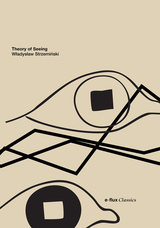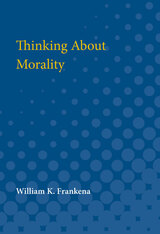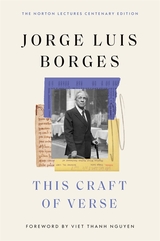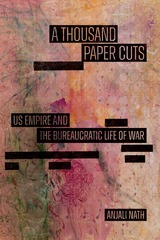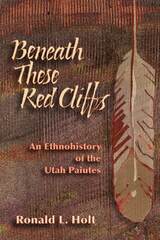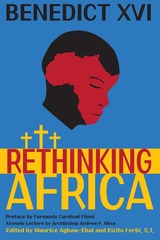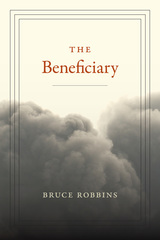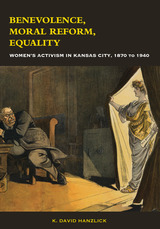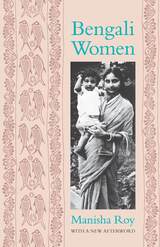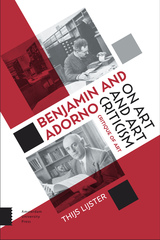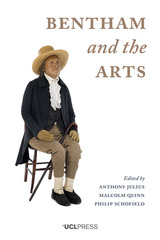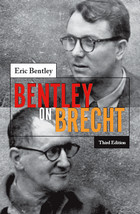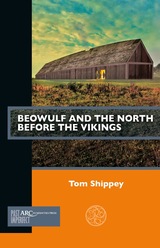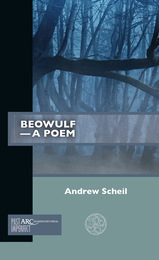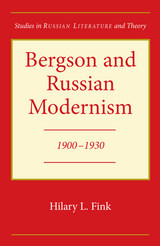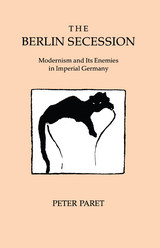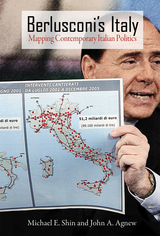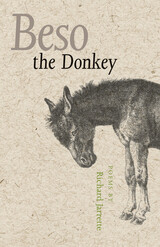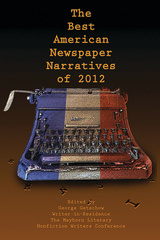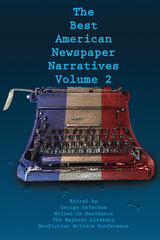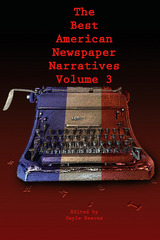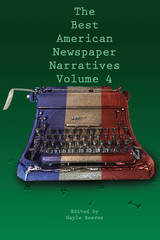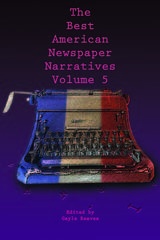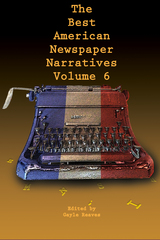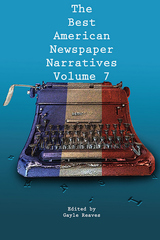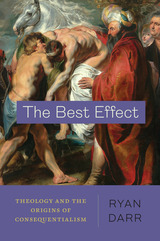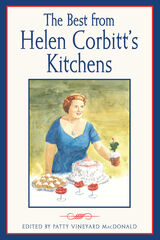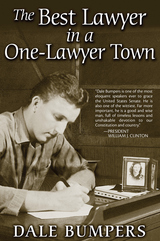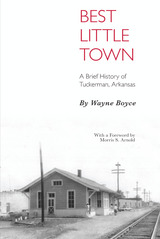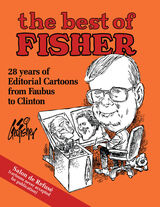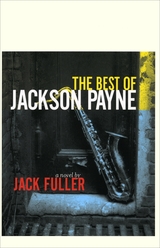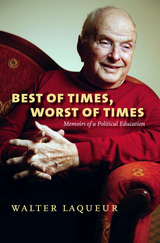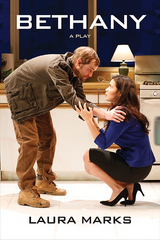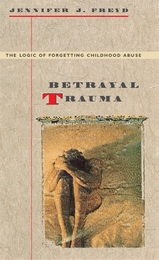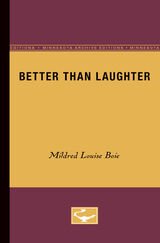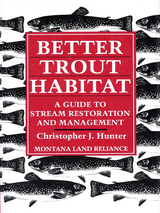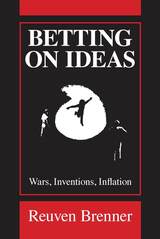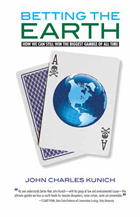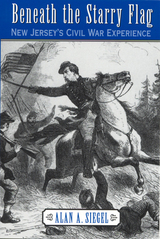 Beneath the Starry Flag: New Jersey's Civil War Experience
Siegel, Alan A
Rutgers University Press, 2001 Few events in American history can match the triumph and tragedy of the Civil War. Many books have been written about the War between the States, but until now, none has chronicled—in their own words—the many important roles played by people from New Jersey.
Beneath the Starry Flag is a collection of richly detailed eyewitness accounts by New Jerseyans who lived during the Civil War. Drawing from letters, journals, regimental histories, and newspaper accounts, Alan A. Siegel places the reader in the midst of these desperate times. The book depicts the war years chronologically, from the tense days when one state, then another seceded from the Union, through battles lost and won, to the victory at Appomattox and Lincoln’s funeral procession across New Jersey.
Readers will learn of the remarkable valor of New Jersey soldiers such as John Beech, a Trenton potter who won a Medal of Honor for bravery at Spotsylvania’s Bloody Angle. They will learn too of the sacrifices made by civilians, such as Cornelia Hancock of Salem County, who ministered to soldiers wounded on battlefields from Gettysburg to Petersburg. Siegel also tells of other people and institutions who played very different roles in the war, including Somerset County’s Daniel Cory, who said he would shoot the president if he could, the state’s leading Copperhead newspapers, which denounced the draft and discouraged enlistments, and the State Legislature, which at one point called for a truce and negotiations to end the conflict. Siegel allows them all, enlisted men and officers, politicians and plain citizens, patriots and conspirators, to speak in their own words in often moving firsthand accounts. Their motives, emotions, and deeds are chronicled in this collection of stories, some which have been out of print for many years, others that have not been heard since they were first written more than a century ago.
[Beneath the Starry Flag is an invaluable addition to what we know about this remarkable time in American history, perfect for the general reader or Civil War historian.]
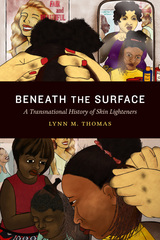 Beneath the Surface: A Transnational History of Skin Lighteners
Lynn M. Thomas
Duke University Press, 2020 For more than a century, skin lighteners have been a ubiquitous feature of global popular culture—embraced by consumers even as they were fiercely opposed by medical professionals, consumer health advocates, and antiracist thinkers and activists. In Beneath the Surface, Lynn M. Thomas constructs a transnational history of skin lighteners in South Africa and beyond. Analyzing a wide range of archival, popular culture, and oral history sources, Thomas traces the changing meanings of skin color from precolonial times to the postcolonial present. From indigenous skin-brightening practices and the rapid spread of lighteners in South African consumer culture during the 1940s and 1950s to the growth of a billion-dollar global lightener industry, Thomas shows how the use of skin lighteners and experiences of skin color have been shaped by slavery, colonialism, and segregation as well as by consumer capitalism, visual media, notions of beauty, and protest politics. In teasing out lighteners’ layered history, Thomas theorizes skin as a site for antiracist struggle and lighteners as a technology of visibility that both challenges and entrenches racial and gender hierarchies.
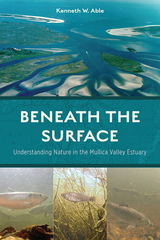 Beneath the Surface: Understanding Nature in the Mullica Valley Estuary
Kenneth W. Able
Rutgers University Press, 2020 2021 winner of Non-fiction popular category: New Jersey Studies Academic Alliance
The Mullica Valley estuary and its watershed, formed over the last 10,000 years, are among the cleanest estuaries along the east coast of the United States. This 365,000-acre ecosystem benefits from a combination of protected watershed, low human population density, and general lack of extensive development. In Beneath the Surface, marine scientist Ken Able helps the reader penetrate the surface and gain insights into the kinds of habitats, animals, and plants that live there. Readers will gain a better understanding of the importance of these shallow waters; how the amount of salt in the water determines where animals and plants are found in estuaries; the day-night, seasonal, and annual variation in their occurrence; and how change is occurring as the result of climate variation. Throughout the book are insightful sidebars telling intimate stories of where various animals came from and where they are going as they travel through the estuary on their way to and from other portions of the east coast. Beneath the Surface emphasizes the kinds and importance of the animals and plants that live beneath the surface of this unique ecosystem.
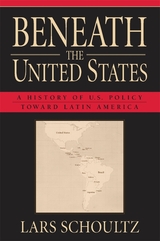 Beneath the United States: A History of U.S. Policy toward Latin America
Lars Schoultz
Harvard University Press, 1998 In this sweeping history of United States policy toward Latin America, Lars Schoultz shows that the United States has always perceived Latin America as a fundamentally inferior neighbor, unable to manage its affairs and stubbornly underdeveloped.
This perception of inferiority was apparent from the beginning. John Quincy Adams, who first established diplomatic relations with Latin America, believed that Hispanics were "lazy, dirty, nasty...a parcel of hogs." In the early nineteenth century, ex-President John Adams declared that any effort to implant democracy in Latin America was "as absurd as similar plans would be to establish democracies among the birds, beasts, and fishes."
Drawing on extraordinarily rich archival sources, Schoultz, one of the country's foremost Latin America scholars, shows how these core beliefs have not changed for two centuries. We have combined self-interest with a "civilizing mission"--a self-abnegating effort by a superior people to help a substandard civilization overcome its defects. William Howard Taft felt the way to accomplish this task was "to knock their heads together until they should maintain peace," while in 1959 CIA Director Allen Dulles warned that "the new Cuban officials had to be treated more or less like children." Schoultz shows that the policies pursued reflected these deeply held convictions.
While political correctness censors the expression of such sentiments today, the actions of the United States continue to assume the political and cultural inferiority of Latin America. Schoultz demonstrates that not until the United States perceives its southern neighbors as equals can it anticipate a constructive hemispheric alliance.
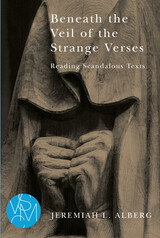 Beneath the Veil of the Strange Verses: Reading Scandalous Texts
Jeremiah L. Alberg
Michigan State University Press, 2013 Jeremiah Alberg’s fascinating book explores a phenomenon almost every news reader has experienced: the curious tendency to skim over dispatches from war zones, political battlefields, and economic centers, only to be drawn in by headlines announcing a late-breaking scandal. Rationally we would agree that the former are of more significance and importance, but they do not pique our curiosity in quite the same way. The affective reaction to scandal is one both of interest and of embarrassment or anger at the interest. The reader is at the same time attracted to and repulsed by it. Beneath the Veil of the Strange Verses describes the roots out of which this conflicted desire grows, and it explores how this desire mirrors the violence that undergirds the scandal itself. The book shows how readers seem to be confronted with a stark choice: either turn away from scandal completely or become enthralled and thus trapped by it. Using examples from philosophy, literature, and the Bible, Alberg leads the reader on a road out of this false dichotomy. By its nature, the author argues, scandal is the basis of our reading; it is the source of the obstacles that prevent us from understanding what we read, and of the bridges that lead to a deeper grasp of the truth.
Beneath These Red Cliffs: An Ethnohistory of the Utah Paiutes
Ronald L. Holt
Utah State University Press, 2006 Ronald Holt recounts the survival of a people against all odds. A compound of rapid white settlement of the most productive Southern Paiute homelands, especially their farmlands near tributaries of the Colorado River; conversion by and labor for the Mormon settlers; and government neglect placed the Utah Paiutes in a state of dependency that ironically culminated in the 1957 termination of their status as federally recognized Indians. That recognition and attendant services were not restored until 1980, in an act that revived the Paiutes’ identity, self-government, land ownership, and sense of possibility.
With a foreword by Lora Tom, chair of the Paiute Indian Tribe of Utah.
The Beneficiary
Bruce Robbins
Duke University Press, 2017 From iPhones and clothing to jewelry and food, the products those of us in the developed world consume and enjoy exist only through the labor and suffering of countless others. In his new book Bruce Robbins examines the implications of this dynamic for humanitarianism and social justice. He locates the figure of the "beneficiary" in the history of humanitarian thought, which asks the prosperous to help the poor without requiring them to recognize their causal role in the creation of the abhorrent conditions they seek to remedy. Tracing how the beneficiary has manifested itself in the work of George Orwell, Virginia Woolf, Jamaica Kincaid, Naomi Klein, and others, Robbins uncovers a hidden tradition of economic cosmopolitanism. There are no easy answers to the question of how to confront systematic inequality on a global scale. But the first step, Robbins suggests, is to acknowledge that we are, in fact, beneficiaries.
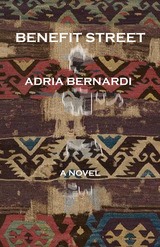 Benefit Street: A Novel
Adria Bernardi
University of Alabama Press, 2022 Winner of FC2’s Catherine Doctorow Innovative Fiction Prize
A universal story of exile, of the refugee and emigrant, and of all those displaced who can reconstruct a sense of home only by weaving a new fabric of the imagination.
For nearly two decades, Şiva has met after work on Tuesdays with four friends at a teahouse called the Kafiye. In interrupted conversations, the women explore what it is to live engaged lives inside and outside the home. Amidst joking and complaints, while drinking too much tea and eating too many sweets, they tell of their days: a son’s ninth birthday, the bruise on the arm of an aging parent, soldiers stationed outside the school, the funeral of an opposition political leader killed in a mysterious car accident.
Set in an unnamed provincial capital of an unnamed country, Benefit Street tells of a wide circle of friends—teachers, lawyers, missionaries, doctors, artisans—in a time of gathering and dispersal. It tells the story of mothers, daughters, sisters, wives, colleagues, and neighbors, as war to the East threatens and constitutional rights are daily eroded by an increasingly authoritarian regime.
The ideals of youth, freedom, and coexistence are severely tested with the shocking revelation that the charismatic leader of their group has sexually abused the women under his care. The limits of reconciliation are tested as Şiva makes an arduous journey into the mountains to meet an estranged mother with a genius for weaving complex rugs.
 Benefits in Medical Care Programs
Avedis Donabedian
Harvard University Press, 1976 ”Every social mechanism appears to have a dual potential for good and evil. Prepayment for medical care is no exception. On the one hand, it provides assurance of necessary care as a safeguard to health, economic well-being, and peace of mind. On the other hand, it opens the way to wasteful and harmful care, to price inflation, and to concealed redistributions in socially undesirable directions. The problem is to devise a plan that allows us to reap the most advantages while we incur the fewest drawbacks.”
Benefits in Medical Care Programs is a comprehensive treatment of this problem. Dr. Donabedian begins with a clear and straight forward analysis of his own assumptions about the social mandate for medical care benefits, the objectives of medical care programs, and the magnitude and distribution of the unmet need that these programs are designed to alleviate. The problem of defining and measuring the need for care is considered within the con text of the data yielded by alternative definitions. The analysis then shifts to the impact of benefits on certain key features of the medical care system.
Program benefits are weighed against program objectives, and policy implications are drawn from this comparison. We are shown what can and cannot be accomplished through medical care benefits and what goals are served by specific aspects of existing or proposed plans. Although Dr. Donabedian counsels a fairly thorough reform of existing systems, he remains skeptical about the possibility of designing a perfect system, and he does not hesitate to point out that increased access to care "increases exposure to both what is good and what is bad in our system of medical care. . . The machinery of medical care has a sinister potential for those who fall into it in the wrong place at the wrong time.
Dr. Donabedian's previous book Aspects of Medical Care Administration has been called the "bible" of its field. Benefits in Medical Care Programs should prove equally invaluable.
 Benes & Masaryk: Czechoslovakia
Peter Neville
Haus Publishing, 2010 Of even greater importance for Hungary's future were the activities of the champions of an independent state of Czechs and Slovaks. Tomáš Masaryk, a Czech professor of philosophy and a future leader of his people, was hard at work within a month of the outbreak of war lobbying in Paris and London for an independent Bohemia, still a major component of the Austrian Empire within the Austro-Hungarian Monarchy, which would incorporate the predominantly Slovak regions of northern Hungary. Masaryk, who was assisted in his efforts by Eduard Beneš, a bitter enemy of the Habsburgs. Thus the new state was effectively shaped before the Paris Peace Conference. But the Conference laid down the seeds of Czechoslovakia's later destruction. Only nine million Czechoslovaks lived in the state out of a population of fourteen million. A large discontented Hungarian minority lived in Slovakia, and the Polish majority area of Teschen poisoned Czech-Polish relations. Yet the greatest challenge came from the rise of the Nazis in Germany in 1930s: Masaryk always claimed that he did not want three and half million ethnic Germans, but he and Beneš accepted them nonetheless. Masaryk died in 1937, and Britain and France would not support the Czechs over the Sudetenland, the infamous deal struck in Munich by Neville Chamberlain and Adolf Hitler.
Benevolence, Moral Reform, Equality: Women's Activism in Kansas City, 1870 to 1940
K. David Hanzlick
University of Missouri Press, 2018 David Hanzlick traces the rise and evolution of women’s activism in a rapidly growing, Midwestern border city, one deeply scarred by the Civil War and struggling to determine its meaning. Over the course of 70 years, women in Kansas City emerged from the domestic sphere by forming and working in female-led organizations to provide charitable relief, reform society’s ills, and ultimately claim space for themselves as full participants in the American polity. Focusing on the social construction of gender, class, and race, and the influence of political philosophy in shaping responses to poverty, Hanzlick also considers the ways in which city politics shaped the interactions of local activist women with national women’s groups and male-led organizations.
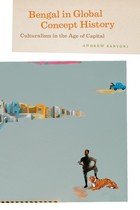 Bengal in Global Concept History: Culturalism in the Age of Capital
Andrew Sartori
University of Chicago Press, 2008 Today people all over the globe invoke the concept of culture to make sense of their world, their social interactions, and themselves. But how did the culture concept become so ubiquitous? In this ambitious study, Andrew Sartori closely examines the history of political and intellectual life in nineteenth- and twentieth-century Bengal to show how the concept can take on a life of its own in different contexts.
Sartori weaves the narrative of Bengal’s embrace of culturalism into a worldwide history of the concept, from its origins in eighteenth-century Germany, through its adoption in England in the early 1800s, to its appearance in distinct local guises across the non-Western world. The impetus for the concept’s dissemination was capitalism, Sartori argues, as its spread across the globe initiated the need to celebrate the local and the communal. Therefore, Sartori concludes, the use of the culture concept in non-Western sites was driven not by slavish imitation of colonizing powers, but by the same problems that repeatedly followed the advance of modern capitalism. This remarkable interdisciplinary study will be of significant interest to historians and anthropologists, as well as scholars of South Asia and colonialism.
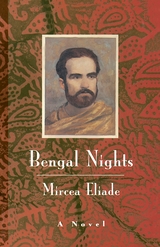 Bengal Nights: A Novel
Mircea Eliade
University of Chicago Press, 1994 Set in 1930s Calcutta, this is a roman à clef of remarkable intimacy. Originally published in Romanian in 1933, this semiautobiographical novel by the world renowned scholar Mircea Eliade details the passionate awakenings of Alain, an ambitious young French engineer flush with colonial pride and prejudice and full of a European fascination with the mysterious subcontinent.
Offered the hospitality of a senior Indian colleague, Alain grasps at the chance to discover the authentic India firsthand. He soon finds himself enchanted by his host's daughter, the lovely and inscrutable Maitreyi, a precocious young poet and former student of Tagore. What follows is a charming, tentative flirtation that soon, against all the proprieties and precepts of Indian society, blossoms into a love affair both impossible and ultimately tragic. This erotic passion plays itself out in Alain's thoughts long after its bitter conclusion. In hindsight he sets down the story, quoting from the diaries of his disordered days, and trying to make sense of the sad affair.
A vibrantly poetic love story, Bengal Nights is also a cruel account of the wreckage left in the wake of a young man's self discovery. At once horrifying and deeply moving, Eliade's story repeats the patterns of European engagement with India even as it exposes and condemns them. Invaluable for the insight it offers into Eliade's life and thought, it is a work of great intellectual and emotional power.
Translated into French in 1950, Bengal Nights was an immediate critical success. The film, Les Nuits Bengali, appeared in 1987.
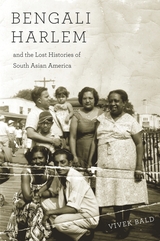 Bengali Harlem and the Lost Histories of South Asian America
Vivek Bald
Harvard University Press, 2012 Winner of the Theodore Saloutos Memorial Book Award
Winner of the Association for Asian American Studies Book Award for History
A Times Literary Supplement Book of the Year
A Saveur “Essential Food Books That Define New York City” Selection
In the final years of the nineteenth century, small groups of Muslim peddlers arrived at Ellis Island every summer, bags heavy with embroidered silks from their home villages in Bengal. The American demand for “Oriental goods” took these migrants on a curious path, from New Jersey’s beach boardwalks into the heart of the segregated South. Two decades later, hundreds of Indian Muslim seamen began jumping ship in New York and Baltimore, escaping the engine rooms of British steamers to find less brutal work onshore. As factory owners sought their labor and anti-Asian immigration laws closed in around them, these men built clandestine networks that stretched from the northeastern waterfront across the industrial Midwest.
The stories of these early working-class migrants vividly contrast with our typical understanding of immigration. Vivek Bald’s meticulous reconstruction reveals a lost history of South Asian sojourning and life-making in the United States. At a time when Asian immigrants were vilified and criminalized, Bengali Muslims quietly became part of some of America’s most iconic neighborhoods of color, from Tremé in New Orleans to Detroit’s Black Bottom, from West Baltimore to Harlem. Many started families with Creole, Puerto Rican, and African American women.
As steel and auto workers in the Midwest, as traders in the South, and as halal hot dog vendors on 125th Street, these immigrants created lives as remarkable as they are unknown. Their stories of ingenuity and intermixture challenge assumptions about assimilation and reveal cross-racial affinities beneath the surface of early twentieth-century America.
Bengali Women
Manisha Roy
University of Chicago Press, 1992 Drawing on personal experiences and interviews with others, Roy explores the frustrations and rewards in the lives of Hindu Bengali women in upper and upper-middle class families in India. Roy traces the psychological dimensions of these women as they play their specific roles, including daughter, wife, mother, and sister-in-law.
In a new Afterword, Roy discusses changes in Bengali society and culture over the last two decades which have direct bearings on women's lives: divorce and the breakup of the joint family, education, increasing Westernization via television and women's magazines, and the erosion of traditional religious practices.
 Benito Perez Galdos and the Creative Process
Walter T. Pattison
University of Minnesota Press, 1954
Benito Perez Galdos and the Creative Process was first published in 1954. Minnesota Archive Editions uses digital technology to make long-unavailable books once again accessible, and are published unaltered from the original University of Minnesota Press editions.
Most critics would rank Benito Perez Galdos second only to Cervantes among the great novelists of Spain. However, in spite of the esteem in which he is generally held, Galdos has been the subject of relatively few scholarly studies. Professor Pattison, by an analysis of two of Galdos' novels, attempts to reconstruct the creative processes that were involved in the writing of these novels. This is the first time that such a critical approach has been used in the field of Spanish fiction and the resulting study is significant not only to Spanish scholars but to all students of literature seeking further insights into the fascinating and still elusive creative process.
Professor Pattison analyzes the novels Gloria, published in 1877, and Marianela,which was published the following year. Both are stories of contemporary life, the former having as its theme the conflict between noble religion and the fanaticism of individual religious sects, and the latter presenting a story of tragic love interwoven with the social problem of the responsibilities of the rich toward the poor.
In tracking down the sources of ideas, characters, plots, and viewpoints that emerge in these novels, Professor Pattison worked first-hand in Galdos' personal library in Madrid. From the notes and markings in the books and from other intimate observations, the scholar-detective put his finger on many of the original sources that contributed to Galdos' artistic creations and identified the prototypes for fictional characters among persons Galdos knew.
Benjamin and Adorno on Art and Art Criticism: Critique of Art
Thijs Lijster
Amsterdam University Press, 2017 This book brings together two of the most important figures of twentieth-century criticism, Walter Benjamin and Theodor Adorno, to consider a topic that was central to their thinking: the place of and reason for art in society and culture. Thijs Lijster takes us through points of agreement and disagreement between the two on such key topics as the relationship between art and historical experience, between avant-garde art and mass culture, and between the intellectual and the public. He also addresses the continuing relevance of Benjamin and Adorno to ongoing debates in contemporary aesthetics, such as the end of art, the historical meaning of art, and the role of the critic.
 Benjamin Franklin and His Gods
Kerry S. Walters
University of Illinois Press, 1999 Against the religious backdrop of pre- and postcolonial America stands
the towering figure--and mind--of Benjamin Franklin. A Renaissance man
in a Revolutionary time, Franklin had interests and knowledge not only
in religion but in literature, philosophy, politics, publishing, history,
and scientific inquiry, among many other disciplines.
Kerry S. Walters examines Franklin's search for the Divine using a similar,
multifaceted approach--and in so doing has created the first extended
treatment of Franklin's religious thought in thirty years. Walters brings
the same intellectual range and depth to the understanding of Franklin's
beliefs that Franklin brought to his own quest. What emerges from this
pilgrimage into the soul of one of America's greatest figures is a very
human Benjamin Franklin who grew with the accumulation of knowledge to
arrive at a "theistic perspectivism," which provided him with
a philosophical explanation for the diversity of religious faiths--and
a justification for the liberty of conscience he advocated throughout
his life.
Benjamin Franklin and His Gods is an original and beautifully
challenging spiritual and intellectual biography. Destined to be a classic.
Benjamin Franklin: His Life as He Wrote It
Esmond Wright
Harvard University Press, 1990 Ever the chronicler and teacher, Franklin wrote an autobiography, ostensibly for his illegitimate son William. Apart from hurried additions when he was in his eighties, his story halts at 1757. Tracing his footsteps centuries later, Franklin’s most celebrated biographer completes the last twenty-five years of the autobiography by drawing on Franklin’s most personal and insightful letters and writings—even making additions within the interrupted Autobiography to give us the expository memoir that Franklin intended. Indeed, as he wrote it.
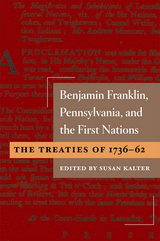 Benjamin Franklin, Pennsylvania, and the First Nations: The Treaties of 1736-62
Edited by Susan Kalter
University of Illinois Press, 2006 British colonial relations with the native peoples of eastern North America This is an annotated edition of the treaties between the British colonies and Indian nations, originally printed and sold by Benjamin Franklin. Last published in 1938, Benjamin Franklin, Pennsylvania, and the First Nations makes these important treaties available once again, featuring a simpler, easier-to-read format, extensive explanatory notes, and maps. A detailed introduction by Susan Kalter puts the treaties in their proper historical and cultural context. This carefully researched edition shows these treaties to be complex intercultural documents, and provides significant insight into the British colonists’ relationship with native peoples of North America. They also reveal the complexity of Benjamin Franklin’s perceptions of Native Americans, showing him in some negotiations as a promoter of the Indian word against the colonial one. Finally, the treaties offer an enormous wealth of linguistic, aesthetic, and cultural information about the Iroquois, the Delawares, and their allies and neighbors.
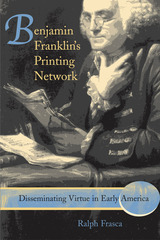 Benjamin Franklin's Printing Network: Disseminating Virtue in Early America
Ralph Frasca
University of Missouri Press, 2005
In Benjamin Franklin’s Printing Network, Ralph Frasca explores Franklin’s partnerships and business relationships with printers and their impact on the early American press. Besides analyzing the structure of the network, Frasca addresses two equally important questions: How did Franklin establish this informal group? What were his motivations for doing so?
This network grew to be the most prominent and geographically extensive of the early American printing organizations, lasting from the 1720s until the 1790s. Stretching from New England to the West Indies, it comprised more than two dozen members, including such memorable characters as the Job-like James Parker, the cunning Francis Childs, the malcontent Benjamin Mecom, the vengeful Benjamin Franklin Bache, the steadfast David Hall, and the deranged Anthony Armbruster.
Franklin’s network altered practices in both the European and the American colonial printing trades by providing capital and political influence to set up workers as partners and associates. As an economic entity and source of mutual support, the network was integral to the success of many eighteenth-century printers, as well as to the development of American journalism.
Frasca argues that one of Franklin’s principal motivations in establishing the network was his altruistic desire to assist Americans in their efforts to be virtuous. Using a variety of sources, Frasca shows that Franklin viewed virtue as a path to personal happiness and social utility. Franklin intended for his network of printers to teach virtue and encourage its adoption. The network would disseminate his moral truths to a mass audience, and this would in turn further his own political, economic, and moral ambitions.
By exploring Franklin’s printing network and addressing these questions, this work fills a substantial void in the historical treatment of Franklin’s life. Amateur historians and professional scholars alike will welcome Frasca’s clear and capable treatment of this subject.
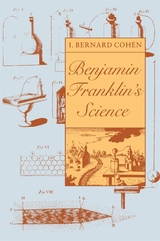 Benjamin Franklin's Science
I. Bernard Cohen
Harvard University Press, 1990 Benjamin Franklin is well known to most of us, yet his fundamental and wide-ranging contributions to science are still not adequately understood. Until now he has usually been incorrectly regarded as a practical inventor and tinkerer rather than a scientific thinker. He was elected to membership in the elite Royal Society because his experiments and original theory of electricity had made a science of that new subject. His popular fame came from his two lightning experiments—the sentry-box experiment and the later and more famous experiment of the kite—which confirmed his theoretical speculations about the identity of electricity and provided a basis for the practical invention of the lightning rod. Franklin advanced the eighteenth-century understanding of all phenomena of electricity and provided a model for experimental science in general.
I. Bernard Cohen, an eminent historian of science and the principal elucidator of Franklin’s scientific work, examines his activities in fields ranging from heat to astronomy. He provides masterful accounts of the theoretical background of Franklin’s science (especially his study of Newton), the experiments he performed, and their influence throughout Europe as well as the United States. Cohen emphasizes that Franklin’s political and diplomatic career cannot be understood apart from his scientific activities, which established his reputation and brought him into contact with leaders of British and European society. A supplement by Samuel J. Edgerton considers Franklin’s attempts to improve the design of heating stoves, another practical application that arose from theoretical interests.
This volume will be valuable to all readers wanting to learn more about Franklin and to gain a deeper appreciation of the development of science in America.
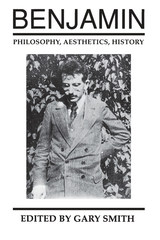 Benjamin: Philosophy, Aesthetics, History
Edited by Gary Smith
University of Chicago Press, 1989 Walter Benjamin (1896-1940) has been called by Hannah Arendt the "greatest critic of the century." While an increasing number of Anglo-American literary critics draw upon Benjamin's writings in their own works, their colleagues in the philosophical community remain relatively unacquainted with his legacy. In the European intellectual world, by contrast, Benjamin's critical epistemological program, his philosophies of history and language, and his aesthetics have long since become part of philosophical discourse. The present collection of articles, many of which were contained in earlier versions in the Winter 1983 special issue of the journal The Philosophical Forum, initiates the project of establishing Benjamin's importance to philosophy.
A balance of original work by Benjamin and important commentary on his works, this volume includes the crucial chapter from Benjamin's magnum opus The Arcades Project, his "Program of the Coming Philosophy," and "Central Park," as well as essays by leading scholars (including Theodor W. Adorno, Leo Lowenthal, and Rolf Tiedemann) that treat single philosophical themes and relate his ideas to those of other thinkers such as Gadamer, Goodmann, and Rosenzweig. Gary Smith's introduction to the volume provides an extremely useful and sophisticated entrée for readers unaccustomed to the breadth of Benjamin's philosophical allusions, as well as an informative summation of the contents of the volume. This book will be of interest to philosophers, literary theorists, art historians, anthropologists, and other social scientists.
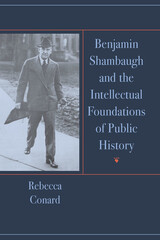 Benjamin Shambaugh and the Intellectual Foundations of Public Hisory
Rebecca Conard
University of Iowa Press, 2001
"This is an important book that uses the long and distinguished historical career of Benjamin Shambaugh to place public or 'applied' history into a much-needed historical context. . . . Conard's narrative and analysis provide new insights into continuing debates about the proper role of federal and state governments in collecting and writing history. . . . an important contribution to American historiography in the twentieth century."--Barbara Franco, executive director, the Historical Society of Washington, D.C.
"In Benjamin Shambaugh and the Intellectual Foundations of Public History, Rebecca Conard has written a useful and intriguing book. . . . The historical profession and the people of Iowa are indebted to Rebecca Conard for this book, which explores the impressive career of Benjamin Shambaugh and sheds new light on the fundamentals of the public history movement."--Annals of Iowa
". . . an unexpectedly engaging and useful examination and analysis of the ideologies, arguments, and politics surrounding the rise of history as a professional and academic discipline from the mid-nineteenth to the mid-twentieth centuries, especially as they were often rancorously expressed in disputes between the East and Midwest, state and national perspectives, and academic and professional practice."--The Journal of American History
"Conard has provided the history profession with a layered narrative of its development and fragmentation or redevelopment over time, and has explored the meanings of its own histories."--Janelle Warren-Findley, The American Historical Review
"Conard's biography is well written and interesting, and her strategies for engaging in dialog with a variety of texts produce a fresh method for defining and assessing public history."--The Journal of Heritage Stewardship
Although his name is little known today outside Iowa, during the early part of the twentieth century Benjamin Shambaugh (1871 - 1940) was a key figure in the historical profession. Using his distinguished career as a lens, Conard's seminal work is the first book to consider public history as an integral part of the intellectual development of the historical profession as a whole in the United States.
Conard draws upon an unpublished, mid-1940s biography by research historian Jacob Swisher to trace the forces that shaped Shambaugh's early years, his administration of the State Historical Society of Iowa, his development of applied history and commonwealth history in the 1910s and 1920s, and the transformations in his thinking and career during the 1930s. Framing this intriguingly interwoven narrative are chapters that contextualize Shambaugh's professional development within the development of the historical profession as a whole in the late nineteenth and early twentieth centuries and assess his career within the post-World War II emergence of the modern public history movement.
Shambaugh's career speaks to those who believe in the power of history to engage and inspire local audiences as well as those who believe that historians should apply their knowledge and methods outside the academy in pursuit of the greater public good.
Rebecca Conard, associate professor of history and codirector of the Public History Program at Middle Tennessee State University, is also the author of Places of Quiet Beauty: Parks, Preserves, and Environmentalism (Iowa, 1997), which won the Benjamin Shambaugh Award.
"Rebecca Conard provides an elegant discussion of a complex topic: the emergence of public history in the twentieth century. . . . a sophisticated addition to public history historiography."--The Public Historian
 Benjamin's -abilities
Samuel Weber
Harvard University Press, 2008 “There is no world of thought that is not a world of language,” Walter Benjamin remarked, “and one only sees in the world what is preconditioned by language.” In this book, Samuel Weber, a leading theorist on literature and media, reveals a new and productive aspect of Benjamin’s thought by focusing on a little-discussed stylistic trait in his formulation of concepts.
Weber’s focus is the critical suffix “-ability” that Benjamin so tellingly deploys in his work. The “-ability” (-barkeit, in German) of concepts and literary forms traverses the whole of Benjamin’s oeuvre, from “impartibility” and “criticizability” through the well-known formulations of “citability,” “translatability,” and, most famously, the “reproducibility” of “The Work of Art in the Age of Its Technological Reproducibility.” Nouns formed with this suffix, Weber points out, refer to a possibility or potentiality, to a capacity rather than an existing reality. This insight allows for a consistent and enlightening reading of Benjamin’s writings.
Weber first situates Benjamin’s engagement with the “-ability” of various concepts in the context of his entire corpus and in relation to the philosophical tradition, from Kant to Derrida. Subsequent chapters deepen the implications of the use of this suffix in a wide variety of contexts, including Benjamin’s Trauerspiel book, his relation to Carl Schmitt, and a reading of Wagner’s Ring. The result is an illuminating perspective on Benjamin’s thought by way of his language—and one of the most penetrating and comprehensive accounts of Benjamin’s work ever written.
 Benjamin's Travel
Briankel G. Chang, special issue editor
Duke University Press, 2018 Walter Benjamin's writings are popular among Chinese scholars, but variances of translation and interpretation have created an understanding of Benjamin that bears little resemblance to how Western scholars discuss and use Benjamin. This special issue uses that dissemblance as a starting point to explore what Benjamin's writings have meant and continue to mean, bringing these multiple different versions of Benjamin into conversation. Contributors explore Benjamin’s fascination with the spiritual power of color, connect his youthful fascination with Chinese thought with his later writings, compare his ideas to the work of Chinese filmmaker Jia Zhangke and Vietnamese author Bùi Anh Tuấn, and analyze his experiments in imbuing book reviews with social commentary. This issue also includes a new translation of Benjamin's essay "Chinese Paintings at the National Gallery."
Contributors: Walter Benjamin, Briankle G. Chang, Astrid Deuber-Mankowsky, Peter Fenves, Martin Jay, Matthew Lau, Duy Lap Nguyen, Richard A. Rand
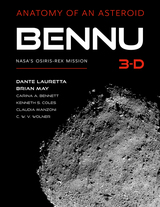 Bennu 3-D: Anatomy of an Asteroid
Dante Lauretta, Brian May, Carina A. Bennett, Kenneth S. Coles, Claudia Manzoni, and C. W. V. Wolner
University of Arizona Press, 2023 Bennu, named for the ancient Egyptian phoenix, was the chosen destination of OSIRIS-REx, NASA’s premier mission of asteroid exploration, launched in 2016. Study of the asteroid is important in safeguarding the future of planet Earth, but Bennu is also a time capsule from the dawn of our Solar System, holding secrets over four-and-a-half billion years old about the origin of life and Earth as a habitable planet.
In 2020 the OSIRIS-REx spacecraft successfully landed on the surface of Bennu and collected pristine asteroid material for delivery to Earth in September 2023. Scientific studies of the samples, along with data collected during the rendezvous, promise to help find answers to some of humanity’s deepest questions: Where did we come from? What is our destiny in space?
This book, the world’s first complete (and stereoscopic) atlas of an asteroid, is the result of a unique collaboration between OSIRIS-REx mission leader Dante Lauretta and Brian May’s London Stereoscopic Company. Lauretta’s colleagues include Carina Bennett, Kenneth Coles, and Cat Wolner, as well as Brian May and Claudia Manzoni, who became part of the ultimately successful effort to find a safe landing site for sampling. The text details the data collected by the mission so far, and the stereo images have been meticulously created by Manzoni and May from original images collected by the OSIRIS-REx cameras.
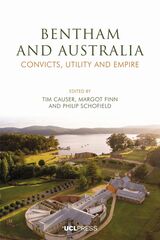 Bentham and Australia: Convicts, Utility and Empire
Edited by Tim Causer, Margot Finn, and Philip Schofield
University College London, 2022 Distinguished scholars contextualize and critically assess Jeremy Bentham’s writings on Australia.
This volume considers Jeremy Bentham’s Australian writings. In the first part of the volume, Bentham’s works are placed in their historical contexts, while the second part provides a critical assessment of the historical accuracy and plausibility of Bentham’s arguments against transportation from the British Isles. In the third part, attention turns to Bentham’s claim that New South Wales was founded illegally and to the imperial and colonial constitutional ramifications of that claim. The authors also discuss Bentham’s work of 1831 in which he supports the establishment of a free colony on the southern coast of Australia. In the final part, the authors shed light on the history of Bentham’s panopticon penitentiary scheme, his views on the punishment and reform of criminals and what role, if any, religion had to play in that regard, and discuss apparently panopticon-inspired institutions built in the Australian colonies.
This collection will appeal to readers interested in Bentham’s life and thought, the history of transportation from the British Isles and of British penal policy more generally, colonial and imperial history, Indigenous history, legal and constitutional history, and religious history.
Bentham and the Arts
Edited by Anthony Julius, Malcolm Quinn, and Philip Schofield
University College London, 2020 Bentham and the Arts considers the skeptical challenge presented by Bentham’s hedonistic utilitarianism to the existence of the aesthetic, as represented in the oft-quoted statement that, ‘Prejudice apart, the game of push-pin is of equal value with the arts and sciences of music and poetry. If the game of push-pin furnish more pleasure, it is more valuable than either.’ Ranging from poetry and sexual nonconformity to the auto-icon and public sculpture, from Hume, Kant, and de Staël to Freud and Michel Onfray, an excellent crew of contributors brings Jeremy Bentham out from the shadow cast by John Stuart Mill with much new to say on taste and politics.
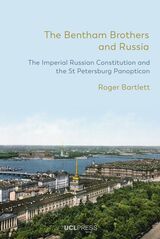 The Bentham Brothers and Russia: The Imperial Russian Constitution and the St Petersburg Panopticon
Roger Bartlett
University College London, 2022 A full account of the St Petersburg Panopticon, the only panopticon built by the Bentham brothers themselves.
The jurist and philosopher, Jeremy Bentham, and his lesser-known brother, Samuel, a talented naval architect, engineer, and inventor, had a long love affair with Russia. Jeremy hoped to assist Empress Catherine II with her legislative projects. Samuel went to St Petersburg to seek his fortune in 1780 and came back with the rank of Brigadier-General and the idea, famously publicized by Jeremy, of the Panopticon. The Bentham Brothers and Russia chronicles the brothers’ later involvement with the Russian Empire when Jeremy focused his legislative hopes on Catherine’s grandson Emperor Alexander I and Samuel found a unique opportunity to build a Panopticon in St Petersburg—the only one ever built by the Benthams themselves. Setting the Benthams’ projects within an in-depth portrayal of the Russian context, Roger Bartlett illuminates an important facet of their later careers and offers insight into their worldview and thought. He also contributes to the history of legal codification in Russia and the demythologizing of the Panopticon, made notorious by Michel Foucault.
Bentley on Brecht
Eric Bentley
Northwestern University Press, 2008 Recipient of 2007 The Robert Chesley Foundation Lifetime Achievement Award in Playwriting
Winner of 2006 International Association of Theatre Critics Thalia Prize
Winner of 2006 Village Voice OBIE Awards Lifetime Achievement Award
Since their first meeting in Santa Monica, California in 1942, Eric Bentley has been Bertolt Brecht's other, offstage voice. Just as Brecht reshaped modern theater, Bentley's writings on Brecht helped shape his reputation in the United States and the rest of the world. Bentley on Brecht represents a lifetime of critical and personal thoughts on both Brecht as friend and Brecht as influential literary figure. Brought together in this volume are Brecht-Bentley correspondence, Bentley's personal recollections of his years with Brecht, including Charles Laughton's production of Galileo, Brecht's testimony before the House Un-American Activities Committee, and Bentley's analysis of Brecht's plays.
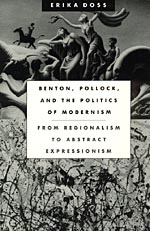 Benton, Pollock, and the Politics of Modernism: From Regionalism to Abstract Expressionism
Erika Doss
University of Chicago Press, 1991 In this acclaimed revisionist study, Erika Doss chronicles an historic cultural change in American art from the dominance of regionalism in the 1930s to abstract expressionism in the 1940s. She centers her study on Thomas Hart Benton and Jackson Pollock, Benton's foremost student in the early thirties, charting Pollock's early imitation of Benton's style before his radical move to abstraction. By situating painting within the evolving sociopolitical and cultural context of the Depression and the Cold War, Doss explains the reasons for this change and casts light on its significance for contemporary culture.
"A welcome addition to the growing body of literature that deals with the art and culture of the depression and cold war eras. It is a pioneering work that makes a valuable contribution to our understanding of a puzzling conundrum of American art—the shift from regionalism to abstract expressionism."—M. Sue Kendall, Winterthur Portfolio
"An important scholarly contribution. . . . This book will stand as a step along the way to a better understanding of the most amazing transition in the art of our tumultuous century."—James G. Rogers, Jr., Art Journal
"A valuable and interesting book that restores continuity and political context to the decades of depression and war."—Marlene Park, American Historical Review
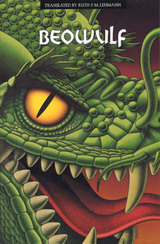 Beowulf: An Imitative Translation
By Ruth P. M. Lehmann
University of Texas Press, 1988 The name "Beowulf" lingers in our collective memory, although today fewer people have heard the tale of the Germanic hero's fight with Grendel, the dreadful Monster of the Mere, as recounted in this Anglo-Saxon epic. This edition of Beowulf makes the poem more accessible than ever before. Ruth Lehmann's imitative translation is the only one available that preserves both the story line of the poem and the alliterative versification of the Anglo-Saxon original. The characteristic features of Anglo-Saxon poetry— alliterative verse with first-syllable stress, flexible word order, and inflectional endings—have largely disappeared in Modern English, creating special problems for the translator. Indeed, many other translations of Beowulf currently available are either in prose or in some modern poetic form. Dr. Lehmann's translation alone conveys the "feel" of the original, its rhythm and sound, the powerful directness of the Germanic vocabulary. In her introduction, Dr. Lehmann gives a succinct summary of the poem's plot, touching on the important themes of obligation and loyalty, of family feuds, unforgivable crimes, the necessity of revenge, and the internal and external struggles of the Scandinavian tribes. She also describes the translation process in some detail, stating the guiding principles she used and the inevitable compromises that were sometimes necessary.
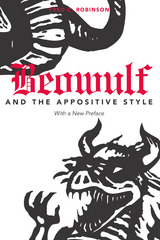 Beowulf and the Appositive Style
Fred C. Robinson
University of Tennessee Press, 2014 Originally published in 1985, Fred T. Robinson’s classic study asserts that the
appositive style of Beowulf helps the poet communicate his Christian vision of pagan
life. By alerting the audience to both the older and the newer meanings of words, the
poet was able to resolve the fundamental tension which pervades his narration of
ancient heroic deeds.
Robinson describes Beowulf’s major themes and the grammatical and stylistic
aspects of its appositive strategies. He then considers the poet’s use of the semantically
stratified vocabulary of Old English poetry to accommodate a partly Christian and
partly pre-Christian perspective on the events being narrated. The analysis draws
attention to the ways in which modern editors and lexicographers have obscured stylistic
aspects of the poem by imposing upon it various modern conventions.
Appositional techniques, Robinson shows, serve not only the poet’s major themes
but also his narrative purposes. A grasp of the fundamental role played by the appositive
style in Beowulf gives the reader new ways of understanding some of the epic’s familiar
passages. The new foreword addresses the reception this book has had and examines
recent scholarship in the ongoing interest in this amazing poem.
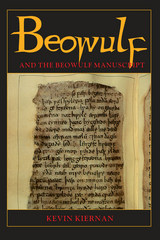 Beowulf and the Beowulf Manuscript
Kevin S. Kiernan
University of Michigan Press, 1997 The story of Beowulf and his hard-fought victory over the monster Grendel has captured the imagination of readers and listeners for a millennium. The heroic Anglo-Saxon story survives to the world in one eleventh-century manuscript that was badly burned in 1731, and in two eighteenth-century transcriptions of the manuscripts.
Kevin S. Kiernan, one of the world's foremost Beowulf scholars, has studied the manuscript extensively with the most up-to-date methods, including fiber-optic backlighting and computer digitization. This volume reprints Kiernan's earlier study of the manuscript, in which he presented his novel conclusions about the date of Beowulf. It also offers a new Introduction in which the author describes the value of electronic study of Beowulf, and a new Appendix that lists all the letters and parts of letters revealed by backlighting.
This important volume will be a must-read not only for the scholar of early English history and literature, but for all those who are interested in practical applications of the new technologies.
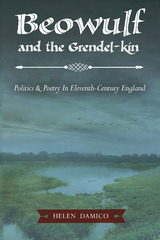 Beowulf and the Grendel-Kin: Politics and Poetry in Eleventh-Century England
Helen Damico
West Virginia University Press, 2014 In Beowulf and the Grendel-kin: Politics and Poetry in Eleventh-Century England, Helen Damico presents the first concentrated discussion of the initiatory two-thirds of Beowulf’s 3,182 lines in the context of the sociopolitically turbulent years that composed the first half of the eleventh century in Anglo-Danish England. Damico offers incisive arguments that major historical events and personages pertaining to the reign of Cnut and those of his sons recorded in the Anglo-Saxon Chronicle, the Encomium Emmae Reginae, and major continental and Scandinavian historical texts, hold striking parallels with events and personages found in at least eight vexing narrative units, as recorded by Scribe A in BL, Cotton Vitellius A.xv, that make up the poem’s quasi sixth-century narrative concerning the fall of the legendary Scyldings. Given the poet’s compositional skill—widely relational and eclectic at its core—and his affinity with the practicing skalds, these strings of parallelisms could scarcely have been coincidental. Rather, Damico argues that examined within the context of other eleventh-century texts that either bemoaned or darkly satirized or obversely celebrated the rise of the Anglo-Danish realm, the Beowulfian units may bring forth a deeper understanding of the complexity of the poet’s compositional process. Damico illustrates the poet’s use of the tools of his trade—compression, substitution, skillful encoding of character—to reinterpret and transform grave sociopolitical “facts” of history, to produce what may be characterized as a type of historical allegory, whereby two parallel narratives, one literal and another veiled are simultaneously operative. Beowulf and the Grendel-Kin lays out the story of Beowulf, not as a monster narrative nor a folklorish nor solely a legendary tale, but rather as a poem of its time, a historical allegory coping with and reconfiguring sociopolitical events of the first half of eleventh-century Anglo-Saxon England.
Beowulf and the North before the Vikings
Tom Shippey
Arc Humanities Press, 2022
Ever since Tolkien’s famous lecture in 1936, it has been generally accepted that the poem Beowulf is a fantasy, and of no use as a witness to real history. This book challenges that view, and argues that the poem provides a plausible, detailed, and consistent vision of pre-Viking history which is most unlikely to have been the poet’s invention, and which has moreover received strong corroboration from archaeology in recent years. Using the poem as a starting point, historical, archaeological, and legendary sources are combined to form a picture of events in the North in the fifth and sixth centuries: at once a Dark and a Heroic Age, and the time of the formation of nations. Among other things, this helps answer two long-unasked questions: why did the Vikings come as such a shock? And what caused the previous 250 years of security from raiders from the sea?
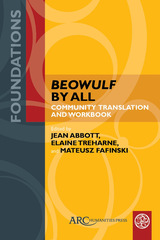 Beowulf by All: Community Translation and Workbook
Jean Abbott
Arc Humanities Press, 2021 This is a community translation of the earliest English epic poem. Beowulf tells the story of a mythical hero in northern Europe in, perhaps, the sixth century. Alongside his story, multiple other shorter narratives are told and many other voices are heard, making it a rich and varied account of the poet’s views of heroism, conflict, loyalty, and the human condition. The poem is widely taught in schools and universities, and has been adapted, modernized, and translated dozens of times, but this is the first large-scale polyvocal translation. Readers will encounter the voices of over two hundred individuals, woven together into a reading experience that is at once productively dissonant, yet strangely coherent in its extreme variation. We hope that it turns the common question "Why do we need yet another translation?" on its head, asking instead, "How can we hear from more translators?," and "How can previously unheard, or marginalized voices, find space, like this, in the world of Old English Studies?" With this in mind we invite a new generation of readers to try their own hand at translating Beowulf in the workbook space provided opposite this community translation. It is often through the effort of translating that we see the reality of the original. This book is available as Open Access.
Beowulf—A Poem
Andrew Scheil
Arc Humanities Press, 2022 Why should anyone, aside from specialist historians and philologists, read Beowulf? This book presents a passionate literary argument for Beowulf as a searching and subtle exploration of the human presence. Seamus Heaney praised Beowulf as "a work of the greatest imaginative vitality": how is that true? The poem's current scholarly obsessions and its popular reception have obscured the fact that this untitled and anonymous 3182-line poem from Anglo-Saxon England is a powerful and enduring work of world literature. Beowulf is an early medieval exercise in humanism: it dramatizes, in varied and complex ways, the conflict between human autonomy and the "mind-forg'd manacles" of the world. The poem is as relevant and moving to any reader today as it was during the early Middle Ages. This book serves both as an invitation and introduction to the poem as well as an intervention in its current scholarly context.
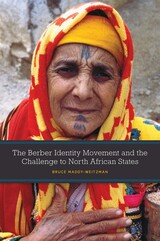 The Berber Identity Movement and the Challenge to North African States
By Bruce Maddy-Weitzman
University of Texas Press, 2011 Like many indigenous groups that have endured centuries of subordination, the Berber/Amazigh peoples of North Africa are demanding linguistic and cultural recognition and the redressing of injustices. Indeed, the movement seeks nothing less than a refashioning of the identity of North African states, a rewriting of their history, and a fundamental change in the basis of collective life. In so doing, it poses a challenge to the existing political and sociocultural orders in Morocco and Algeria, while serving as an important counterpoint to the oppositionist Islamist current. This is the first book-length study to analyze the rise of the modern ethnocultural Berber/Amazigh movement in North Africa and the Berber diaspora. Bruce Maddy-Weitzman begins by tracing North African history from the perspective of its indigenous Berber inhabitants and their interactions with more powerful societies, from Hellenic and Roman times, through a millennium of Islam, to the era of Western colonialism. He then concentrates on the marginalization and eventual reemergence of the Berber question in independent Algeria and Morocco, against a background of the growing crisis of regime legitimacy in each country. His investigation illuminates many issues, including the fashioning of official national narratives and policies aimed at subordinating Berbers in an Arab nationalist and Islamic-centered universe; the emergence of a counter-movement promoting an expansive Berber "imagining" that emphasizes the rights of minority groups and indigenous peoples; and the international aspects of modern Berberism.
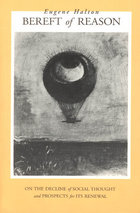 Bereft of Reason: On the Decline of Social Thought and Prospects for Its Renewal
Eugene Halton
University of Chicago Press, 1995 In this radical critique of contemporary social theory, Eugene Halton argues that both modernism and postmodernism are damaged philosophies whose acceptance of the myths of the mind/body dichotomy make them incapable of solving our social dilemmas.
Claiming that human beings should be understood as far more than simply a form of knowledge, social construction, or contingent difference, Halton argues that contemporary thought has lost touch with the spontaneous passions—or enchantment—of life. Exploring neglected works in twentieth century social thought and philosophy—particularly the writings of Lewis Mumford and Charles Peirce—as well as the work of contemporary writers such as Vaclav Havel, Maya Angelou, Milan Kundera, Doris Lessing, and Victor Turner, Halton argues that reason is dependent upon nonrational forces—including sentiment, instinct, conjecture, imagination, and experience. We must, he argues, frame our questions in a way which encompasses both enchantment and critical reason, and he offers an outline here for doing so.
A passionate plea for a fundamental reexamination of the entrenched assumptions of the modern era, this book deals with issues of vital concern to modern societies and should be read by scholars across disciplines.
"Bereft of Reason is a thoughtful critique informed by a passionate commitment to the renewal of critical concerns. For this reason alone it should be widely read and inform current debates."—Lauren Langman, Sociological Inquiry
"Halton takes the 'ghost in the machine' as a dominant defining metaphor for modern thought and life, and criticizes it with gusto, wit, wide reading, and philosophical acumen."—Robert J. Mulvaney, Review of Metaphysics
The Berenson Archive: An Inventory of Correspondence Compiled on the Centenary of the Birth of Bernard Berenson
Bernard Berenson
Harvard University Press Upon his death on October 6, 1959, Bernard Berenson left to Nicky Mariano the vast collection of correspondence which he had accumulated during the nearly sixty years of his residence at Villa I Tatti. On the centennial of Berenson’s birth, The Harvard University Center for Italian Renaissance Studies, now established at I Tatti, arranged to publish this inventory of the correspondence in order to make available to interested scholars a knowledge of its contents. The inventory is divided into two parts: all correspondents are listed, with cross references, in Part One; letters written by Bernard or Mary Berenson, or by Nicky Mariano, are listed in Part Two by recipient.
Bergeners
Tomas Espedal
Seagull Books, 2017 Bergeners is a love letter to a writer’s hometown. The book opens in New York City at the swanky Standard Hotel and closes in Berlin at Askanischer Hof, a hotel that has seen better days. But between these two global metropolises we find Bergen, Norway—its streets and buildings and the people who walk those streets and live in those buildings.
Using James Joyce’s Dubliners as a discrete guide, celebrated Norwegian writer Tomas Espedal wanders the streets of his hometown. On the journey, he takes notes, reflects, writes a diary, and draws portraits of the city and its inhabitants. Espedal writes tales and short stories, meets fellow writers, and listens to their anecdotes. In a way that anyone from a small town can relate to, he is drawn away from Bergen but at the same time he can’t seem to stay away. Espedal’s Bergeners is a book not just about Bergen, but about life—in a way no one else could have captured.
 Bergson and Durational Performance: (Re)Ma(r)king Time
James Layton
Intellect Books, 2022 An interrogation of Henri Bergson’s philosophy of duration through the lens of performance.
Humans have always marked time, whether by tracing the earth’s natural rhythms or looking at a clock. Unlike pre-industrial people, living in an age of social acceleration is dominated by clock time and network time, presenting many more options than can be achieved in a human lifespan.
This book explores the possibility of an alternative experience of time, one closer to the concept of pure duration described by philosopher Henri Bergson. Connecting Bergson’s thought with key ideas from psychology and anthropology, the discussions in this book contribute to contemporary performance analysis, philosophy, and Bergson studies and explore aspects of immersive and participatory performance, walking practices, and ritual and online performance. Using durational performances as case studies, James Layton offers new insights into Bergson’s philosophy alongside the work of key theorists in psychology and anthropology. Through a series of performance analyses, Bergson’s philosophy of duration is coupled with ideas from Abraham Maslow, Mihaly Csikszentmihalyi, and Victor Turner to speculate on the potential of durational performance to challenge living in a world in which time is short, but the possibility of experience is abundant.
Bergson and Russian Modernism: 1900-1930
Hilary L. Fink
Northwestern University Press, 2012 Bergson and Russian Modernism provides a portrait of the early twentieth-century intersection of literature, philosophy, and art, showing how the Russian reception of Bergsonian philosophy helped to define Russian Modernism. By drawing on various works of Russian religious thought, Symbolism, Post-Symbolism, and the absurd, Fink examines Bergson's appeal to Russian modernists interested in breaking free of traditional concepts of time and space and in reclaiming the direct link with reality that had been broken by nineteenth-century rationalism and empiricism.
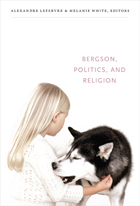 Bergson, Politics, and Religion
Alexandre Lefebvre and Melanie White, eds.
Duke University Press, 2012 Henri Bergson is primarily known for his work on time, memory, and creativity. His equally innovative interventions into politics and religion have, however, been neglected or dismissed until now. In the first book in English dedicated to Bergson as a political thinker, leading Bergson scholars illuminate his positions on core concerns within political philosophy: the significance of emotion in moral judgment, the relationship between biology and society, and the entanglement of politics and religion. Ranging across Bergson's writings but drawing mainly on his last book, The Two Sources of Morality and Religion, the contributors consider Bergson's relevance to contemporary discussions of human rights, democratic pluralism, and environmental ethics. Contributors. Keith Ansell-Pearson, G. William Barnard, Claire Colebrook, Hisashi Fujita, Suzanne Guerlac, Vladimir Jankélévitch, Frédéric Keck, Leonard Lawlor, Alexandre Lefebvre, Paola Marrati, John Mullarkey, Paulina Ochoa Espejo, Carl Power, Philippe Soulez, Jim Urpeth, Melanie White, Frédéric Worms
 Berkeley: Critical and Interpretive Essays
Colin Turbayne, Editor
University of Minnesota Press, 1982
Berkeley was first published in 1982. Minnesota Archive Editions uses digital technology to make long-unavailable books once again accessible, and are published unaltered from the original University of Minnesota Press editions.
In contemporary philosophy the works of George Berkeley are considered models of argumentative discourse; his paradoxes have a further value to teachers because, like Zeno's, they challenge a beginning student to find the submerged fallacy. And as a final, triumphant perversion of Berkeley's intent, his central contribution is still commonly viewed as an argument for skepticism - the very position he tried to refute. This limited approach to Berkeley has obscured his accomplishments in other areas of thought - his account of language, his theories of meaning and reference, his philosophy of science. These subjects and others are taken up in a collection of twenty essays, most of them given at a conference in Newport, Rhode Island, commemorating the 250th anniversary of Berkeley's American sojourn of 1728–31. The essays constitute a broad survey of problems tackled by Berkeley and still of interest to philosophers, as well as topics of historical interest less familiar to modern readers. Its comprehensive scope will make this book appropriate for text use.
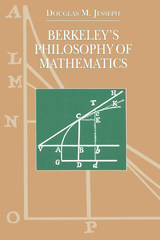 Berkeley's Philosophy of Mathematics
Douglas M. Jesseph
University of Chicago Press, 1993 In this first modern, critical assessment of the place of mathematics in Berkeley's philosophy and Berkeley's place in the history of mathematics, Douglas M. Jesseph provides a bold reinterpretation of Berkeley's work. Jesseph challenges the prevailing view that Berkeley's mathematical writings are peripheral to his philosophy and argues that mathematics is in fact central to his thought, developing out of his critique of abstraction. Jesseph's argument situates Berkeley's ideas within the larger historical and intellectual context of the Scientific Revolution.
Jesseph begins with Berkeley's radical opposition to the received view of mathematics in the philosophy of the late seventeenth and early eighteenth centuries, when mathematics was considered a "science of abstractions." Since this view seriously conflicted with Berkeley's critique of abstract ideas, Jesseph contends that he was forced to come up with a nonabstract philosophy of mathematics. Jesseph examines Berkeley's unique treatments of geometry and arithmetic and his famous critique of the calculus in The Analyst.
By putting Berkeley's mathematical writings in the perspective of his larger philosophical project and examining their impact on eighteenth-century British mathematics, Jesseph makes a major contribution to philosophy and to the history and philosophy of science.
 Berlin and the Cold War
Seth Givens; Ingo Trauschweizer
Ohio University Press, 2024 The Cold War is back in the news. So is history, in the sense of past geopolitical confrontations that for a span of a few decades were thought to be largely decoupled from present-day political developments. Of course, such reflexive reactions lack nuance and, until the Russian invasion of Ukraine in February 2022, tended to refer more to tensions between the United States and China. We should neither see Russia’s aggressive war in Ukraine immediately as part of a new cold war—though it could certainly become one of its foundation pieces—nor define history simply in terms of warfare and conflict. Yet such history has great appeal in efforts to understand the dizzying and depressing events of recent years. For example, correspondents and commentators have likened the delivery of weapons systems, protective gear, and humanitarian aid to a beleaguered Ukraine to the Berlin Airlift of 1948–49. But relying on history as a guide may mislead as much as enlighten. No city symbolizes the Cold War quite as Berlin does. When we think of the Cold War and of Berlin, we tend to emphasize the crises—the 1948–49 blockade and airlift, perhaps the 1953 East German workers’ uprising, surely the 1958–61 crisis, during which the Berlin Wall was built—and the climactic ending of the Cold War in Europe when the wall came down. Berlin may conjure up iconic moments and tropes, from a statement attributed to Nikita Khrushchev in 1963 that Berlin was “the testicles of the West,” to John F. Kennedy’s insistence that all free men had to be invested in the defense of Berlin, to Ronald Reagan’s exhortation to Mikhail Gorbachev to “tear down this wall.” For American presidents (or presidential hopefuls), Berlin and the Brandenburg Gate have remained powerful images, even in the twenty-first century. A presence in Berlin signals strong leadership in the West, even though the proximate reasons why the West, as a political construct, emerged in the first place may be gone. In that sense, Berlin also stands for overcoming the past: first, West Berlin as the counterpoint not only to eastern communism but also to defeated fascism, and second, the new Berlin as the capital of a unified Germany and as a symbol that the West has won.
 Berlin Cabaret
Peter Jelavich
Harvard University Press, 1996 Step into Ernst Wolzogen's Motley Theater, Max Reinhardt's Sound and Smoke, Rudolf Nelson's Chat noir, and Friedrich Hollaender's Tingel-Tangel. Enjoy Claire Waldoff's rendering of a lower-class Berliner, Kurt Tucholsky's satirical songs, and Walter Mehring's Dadaist experiments, as Peter Jelavich spotlights Berlin's cabarets from the day the curtain first went up, in 1901, until the Nazi regime brought it down.
Fads and fashions, sexual mores and political ideologies--all were subject to satire and parody on the cabaret stage. This book follows the changing treatment of these themes, and the fate of cabaret itself, through the most turbulent decades of modern German history: the prosperous and optimistic Imperial age, the unstable yet culturally inventive Weimar era, and the repressive years of National Socialism. By situating cabaret within Berlin's rich landscape of popular culture and distinguishing it from vaudeville and variety theaters, spectacular revues, prurient "nude dancing," and Communist agitprop, Jelavich revises the prevailing image of this form of entertainment.
Neither highly politicized, like postwar German Kabarett, nor sleazy in the way that some American and European films suggest, Berlin cabaret occupied a middle ground that let it cast an ironic eye on the goings-on of Berliners and other Germans. However, it was just this satirical attitude toward serious themes, such as politics and racism, that blinded cabaret to the strength of the radical right-wing forces that ultimately destroyed it. Jelavich concludes with the Berlin cabaret artists' final performances--as prisoners in the concentration camps at Westerbork and Theresienstadt.
This book gives us a sense of what the world looked like within the cabarets of Berlin and at the same time lets us see, from a historical distance, these lost performers enacting the political, sexual, and artistic issues that made their city one of the most dynamic in Europe.
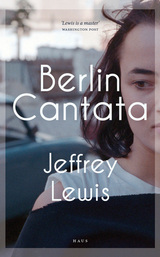 Berlin Cantata
Jeffrey Lewis
Haus Publishing, 2013 A city that has lost one of its limbs and is receiving a miraculous gift, a little bump under the flesh, where the limb is just beginning to grow back. Thus does the American girl in Jeffrey Lewis's remarkable polyphonic novel describe Berlin and the "remnant Jews, secret GDR Jews...Soviet Jews...Jews who'd fled and come back with the victors, Jews who were lost mandarins now, Jews who'd believed in the universality of man and maybe still did" whom she finds at a Day of Atonement gathering in the eastern part of the city in a year soon after the Wall fell. Berlin Cantata deploys thirteen voices to tell a story not only of atonement, but of discovery, loss, identity, intrigue, mystery, insanity, sadomasochism and lies. At its centre is a country house owned successively by Jews, Nazis and Communists. In the country house, the American girl seeks her hidden past. In the girl, a local reporter seeks redemption. In the reporter, a false hero of the past seeks exposure. In the false hero, the American girl seeks a guide. And so it goes, a round of conspiracy and desire. Even as he describes his native city, the false hero describes the characters of Berlin Cantata: "We dined on wreckage. We were not afraid to beg. We continued our long tradition of believing either in nothing or too much."
 Berlin Childhood around 1900
Walter Benjamin
Harvard University Press, 2006 Begun in Poveromo, Italy, in 1932, and extensively revised in 1938, Berlin Childhood around 1900 remained unpublished during Walter Benjamin’s lifetime, one of his “large-scale defeats.” Now translated into English for the first time in book form, on the basis of the recently discovered “final version” that contains the author’s own arrangement of a suite of luminous vignettes, it can be more widely appreciated as one of the masterpieces of twentieth-century prose writing.
Not an autobiography in the customary sense, Benjamin’s recollection of his childhood in an upper-middle-class Jewish home in Berlin’s West End at the turn of the century becomes an occasion for unified “expeditions into the depths of memory.” In this diagram of his life, Benjamin focuses not on persons or events but on places and things, all seen from the perspective of a child—a collector, flâneur, and allegorist in one. This book is also one of Benjamin’s great city texts, bringing to life the cocoon of his childhood—the parks, streets, schoolrooms, and interiors of an emerging metropolis. It reads the city as palimpsest and labyrinth, revealing unexpected lyricism in the heart of the familiar.
As an added gem, a preface by Howard Eiland discusses the genesis and structure of the work, which marks the culmination of Benjamin’s attempt to do philosophy concretely.
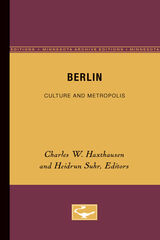 Berlin: Culture and Metropolis
Charles Haxthausen
University of Minnesota Press, 1991
Berlin: Culture and Metropolis was first published in 1991.Berlin’s recent history is uniquely representative of the major upheavals of the modern era. The city has been a capital under imperialist, democratic, fascist, and communist regimes; it has been devastated by war and has witnessed two revolutions. These changes often have come rapidly, drastically, and unexpectedly.Berlin: Culture and Metropolis includes essays on literature, poetry, film, cabaret, and the visual arts that illustrate how the relationship between the city and its inhabitants has been repeatedly renegotiated with each generation. Scholars in art history, film studies, literature, history, and sociology cover the period from the turn of the century to the present, writing on such topics as twentieth century cabaret, the celebration of the city’s 750th anniversary, and the cultural contributions of Ernst Ludwig Kirchner, George Grosz, Alfred Döblin, Siegfried Kracauer, and Christa Wolf. These essays reveal the often uneasy relationships between twentieth-century Berlin and the culture these changes have produced.
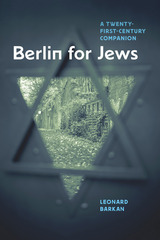 Berlin for Jews: A Twenty-First-Century Companion
Leonard Barkan
University of Chicago Press, 2016 What is it like to travel to Berlin today, particularly as a Jew, and bring with you the baggage of history? And what happens when an American Jew, raised by a secular family, falls in love with Berlin not in spite of his being a Jew but because of it? The answer is Berlin for Jews. Part history and part travel companion, Leonard Barkan’s personal love letter to the city shows how its long Jewish heritage, despite the atrocities of the Nazi era, has left an inspiring imprint on the vibrant metropolis of today.
Barkan, voraciously curious and witty, offers a self-deprecating guide to the history of Jewish life in Berlin, revealing how, beginning in the early nineteenth century, Jews became prominent in the arts, the sciences, and the city’s public life. With him, we tour the ivy-covered confines of the Schönhauser Allee cemetery, where many distinguished Jewish Berliners have been buried, and we stroll through Bayerisches Viertel, an elegant neighborhood created by a Jewish developer and that came to be called Berlin’s “Jewish Switzerland.” We travel back to the early nineteenth century to the salon of Rahel Varnhagen, a Jewish society doyenne, who frequently hosted famous artists, writers, politicians, and the occasional royal. Barkan also introduces us to James Simon, a turn-of-the-century philanthropist and art collector, and we explore the life of Walter Benjamin, who wrote a memoir of his childhood in Berlin as a member of the assimilated Jewish upper-middle class. Throughout, Barkan muses about his own Jewishness, while celebrating the rich Jewish culture on view in today’s Berlin.
A winning, idiosyncratic travel companion, Berlin for Jews offers a way to engage with German history, to acknowledge the unspeakable while extolling the indelible influence of Jewish culture.
 Berlin Sports: Spectacle, Recreation, and Media in Germany’s Metropolis
Heather L. Dichter
University of Arkansas Press, 2024 In many American cities, individual athletes, professional teams, and university sports are integral to the cities’ sporting identities. Berlin, in contrast, features no single hallmark sport, team, or annual event. Five political regimes, wartime destruction, and four decades of division instead fostered ever-changing teams, allegiances, and venues. Yet, the desire to play and watch sport continued unabated across these political watersheds. Berlin Sports: Spectacle, Recreation, and Media in Germany’s Metropolis explores the history of sport in Berlin from the late nineteenth- to the early twenty-first centuries against the backdrop of the city’s sharp political shifts, diverse populations, and status as a major metropolis with both regional and global resonance.
This book begins with a long-distance equestrian race in the 1890s and continues with the role of media in spectacle, celebrity, urban life, and gender from the 1890s to the 1920s.It then turns to grassroots sport participation and spectatorship as well as sport diplomacy at the elite international level during the postwar period and the years of German division. Next, it explores recreational sport associations within the context of immigration and youth counterculture. It concludes with the 2015 European Maccabi Games, an international Jewish sports festival through which Berlin sought to grapple with the infamous 1936 Olympics and showcase Berlin as a cosmopolitan and multicultural city. Taken together, the book’s scholarly essays on all of these sporting endeavors reveal the rich and varied sporting culture in Berlin and yield fresh insights into spectacle, recreation, and media in the city.
 The Berlin-Baghdad Express: The Ottoman Empire and Germany’s Bid for World Power
Sean McMeekin
Harvard University Press, 2010 The modern Middle East was forged in the crucible of the First World War, but few know the full story of how war actually came to the region. As Sean McMeekin reveals in this startling reinterpretation of the war, it was neither the British nor the French but rather a small clique of Germans and Turks who thrust the Islamic world into the conflict for their own political, economic, and military ends.
The Berlin-Baghdad Express tells the fascinating story of how Germany exploited Ottoman pan-Islamism in order to destroy the British Empire, then the largest Islamic power in the world. Meanwhile the Young Turks harnessed themselves to German military might to avenge Turkey’s hereditary enemy, Russia. Told from the perspective of the key decision-makers on the Turco-German side, many of the most consequential events of World War I—Turkey’s entry into the war, Gallipoli, the Armenian massacres, the Arab revolt, and the Russian Revolution—are illuminated as never before.
Drawing on a wealth of new sources, McMeekin forces us to re-examine Western interference in the Middle East and its lamentable results. It is an epic tragicomedy of unintended consequences, as Turkish nationalists give Russia the war it desperately wants, jihad begets an Islamic insurrection in Mecca, German sabotage plots upend the Tsar delivering Turkey from Russia’s yoke, and German Zionism midwifes the Balfour Declaration. All along, the story is interwoven with the drama surrounding German efforts to complete the Berlin to Baghdad railway, the weapon designed to win the war and assure German hegemony over the Middle East.
Berliner Chic: A Locational History of Berlin Fashion
Susan Ingram and Katrina Sark
Intellect Books, 2011 Since becoming the capital of reunited Germany, Berlin has had a dose of global money and international style added to its already impressive cultural veneer. Once home to emperors and dictators, peddlers and spies, it is now a fashion showplace that attracts the young and hip. Moving beyond descriptions of Berlin's fashion industry and its ready-to-wear clothing, Berliner Chic charts the turbulent stories of entrepreneurially-savvy manufacturers and cultural workers striving to establish their city as a fashion capital, and being repeatedly interrupted by politics, ideology, and war. There are many stories to tell about Berlin's fashion industry and Berliner Chic tells them all with considerable expertise.
 Berlioz
D. Kern Holoman
Harvard University Press, 1989 For three decades, beginning with the Symphonie fantastique composed in 1830, Hector Berlioz and his music embodied the élan and exuberance of the Romantic era. This captivating and sumptuously illustrated biography is not only a complete account of Berlioz’s life, but an acute analysis of his compositions and description of his work as conductor and critic, as well as a vivid picture of his musical world.
D. Kern Holoman paints a full-length portrait of Berlioz: his personal and family life, his intellectual development and pursuits, his methods of composing (Berlioz at his work table, so to speak), the aim and style of his music criticism and travel writing, his innovations in staging and conducting performances, and his interaction with other composers, including Liszt, Mendelssohn, Wagner, Schumann, Glinka, Brahms, Verdi, Saint-Saëns, Gounod. In discussing Berlioz’s music, Holoman talks about specific techniques, takes note of influences and borrowings, and analyzes the concept of programmatic music developed in Symphonie fantastique, Harold in Italy, Romeo and Juliet, and The Damnation of Faust.
While following Berlioz’s career, we get a rich sense of the world in which he moved. We see the requirements and excitements of foreign concert tours, the music publishing and instrument-making businesses, the development of the modern concept of orchestral conducting, the use of newspapers for publicity, the composer’s working relations with impresarios and soloists.
Berlioz and His Century: An Introduction to the Age of Romanticism
Jacques Barzun
University of Chicago Press, 1982 In this abridgment of his monumental study, Berlioz and the Romantic Century, Jacques Barzun recounts the events and extraordinary achievements of the great composer's life against the background of the romantic era. As the author eloquently demonstrates, Berloiz was an archetype whose destiny was the story of an age, the incarnation of an artistic style and a historical spirit. "In order to understand the nineteenth century, it is essential to understand Berlioz," notes W. H. Auden, "and in order to understand Berlioz, it is essential to read Professor Barzun."
 Berlioz and His World
Edited by Francesca Brittan and Sarah Hibberd
University of Chicago Press, 2024 A collection of essays and short object lessons on the composer Hector Berlioz, published in collaboration with the Bard Music Festival.
Hector Berlioz (1803–1869) has long been a difficult figure to place and interpret. Famously, in Richard Wagner’s estimation, he hovered as a “transient, marvelous exception,” a composer woefully and willfully isolated. In the assessment of German composer Ferdinand Hiller, he was a fleeting comet who “does not belong in our musical solar system,” the likes of whom would never be seen again. For his contemporaries, as for later critics, Berlioz was simply too strange—and too noisy, too loud, too German, too literary, too cavalier with genre and form, and too difficult to analyze. He was, in many ways, a composer without a world.
Berlioz and His World takes a deep dive into the composer’s complex legacy, tracing lines between his musical and literary output and the scientific, sociological, technological, and political influences that shaped him. Comprising nine essays covering key facets of Berlioz’s contribution and six short “object lessons” meant as conversation starters, the book reveals Berlioz as a richly intersectional figure. His very difficulty, his tendency to straddle the worlds of composer, conductor, and critic, is revealed as a strength, inviting new lines of cross-disciplinary inquiry and a fresh look at his European and American reception.
Berlusconi's Italy: Mapping Contemporary Italian Politics
Michael E. Shin and John A. Agnew
Temple University Press, 2008 Berlusconi's Italy provides a fresh, thoroughly-informed account of how Italy's richest man came to be its political leader. Without dismissing the importance of personalities and political parties, it emphasizes the significance of changes in voting behaviors that led to the rise-and eventual fall-of Silvio Berlusconi, the millionaire media baron who became Prime Minister. Armed with new data and new analytic tools, Michael Shin and John Agnew use recently developed methods of spatial analysis, to offer a compelling new argument about contextual re-creation and mutation. They reveal that regional politics and shifting geographical voting patterns were far more important to Berlusconi's successes than the widely-credited role of the mass media, and conclude that Berlusconi's success (and later defeat) can be best understood in geographic terms.
Bernadotte and the Fall of Napoleon
Franklin D. Scott
Harvard University Press This monograph is a study of Bernadotte and of Swedish diplomacy during the strenuous period between 1810 and 1814. It traces and analyzes Bernadotte’s success in gradually building a bulwark of alliances assuring him possession of Norway; his part in the campaigns of 1813 and 1814, which swept the armies of France from the Vistula back to the Seine; and his own conquest of Denmark. The general reader as well as the specialist will find much interesting material in this vivid account of the founding of the only “Napoleonic” dynasty which still survives.
 Bernard Berenson: Formation and Heritage
Joseph Connors
Harvard University Press Bernard Berenson (1865–1959) put the connoisseurship of Renaissance art on a firm footing in the late nineteenth and early twentieth centuries. His monument is the library and collection of Italian painting, Islamic miniatures, and Asian art at Villa I Tatti in Florence. The authors in this collection of essays explore the intellectual world in which Berenson was formed and to which he contributed. Some essays consider his friendship with William James and the background of perceptual psychology that underlay his concept of “tactile values.” Others examine Berenson’s relationships with a variety of cultural figures, ranging from the German-born connoisseur Jean Paul Richter, the German art historian Aby Warburg, the Boston collector Isabella Stewart Gardner, and the American medievalist Arthur Kingsley Porter to the African-American dance icon Katherine Dunham, as well as with Kenneth Clark, Otto Gutekunst, Archer Huntington, Paul Sachs, and Umberto Morra.
Bernard Berenson: Formation and Heritage makes an important contribution to the rising interest in the historiography of the discipline of art history in the United States and Europe during its formative years.
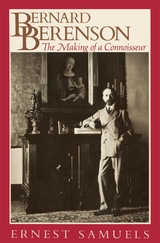 Bernard Berenson: The Making of a Connoisseur
Ernest Samuels
Harvard University Press, 1979 Critic, arbiter of taste, renowned authority on Renaissance painting, and oracle to millionaire art collectors, Bernard Berenson was the most formidable presence in the Anglo-American art world for more than thirty years. His Villa I Tatti near Florence was a magnet for European and American intellectuals; he was able to say, late in life, that most of the Italian paintings that had come to the United States had “my visa on their passport.” Twenty years after his death he remains a paradoxical figure—fit challenge for a Pulitzer Prize–winning biographer.
The story of the making of the connoisseur spans four decades, from Berenson’s childhood in Lithuania and in an immigrant enclave in Boston to the triumphant tour of the United States that confirmed his international reputation. Ernest Samuels interweaves with great skill the many threads of the narrative. No less fascinating than Berenson’s own development, and the accidents that shaped his career, are his relations with an extraordinary cast of characters whose lives impinged on his—among them George Santayana, William James, Bertrand Russell, Logan Pearsall Smith, Norman and Hutchins Hapgood, Oscar Wilde, Vernon Lee, the Michael Fields, Gertrude Stein, Edith Wharton, Roger Fry, and, most notably, the fabled Mrs. Jack Gardner. His relationship with Mary Smith Costelloe, who left her husband and children for him and eventually became his wife, was so close that the book is almost as much her story as his.
Drawing on the thousands of letters B.B. and Mary wrote and the diaries she kept, Samuels is able to convey Berenson’s thoughts and impressions as well as the outward events of these crucial years of his life. He blends sympathy and irony in his many-faceted portrayal of a complex man and a remarkable career. It is a compelling book.
 Bernard Berenson: The Making of a Legend
Ernest Samuels
Harvard University Press, 1987 Controversy swirls around Bernard Berenson today as it did in his middle years, before and between two world wars. Who was this man, this supreme connoisseur of Italian Renaissance painting? How did he support his elegant estate near Florence, his Villa I Tatti? What exactly were his relations with the art dealer Joseph Duveen? What part did his wife, Mary, play in his scholarly work and professional career? The answers are to be found in the day-to-day record of his life as he lived it—as reported at first hand in his and Mary’s letters and diaries and reflected in the countless personal and business letters they received. His is one of the most fully documented lives of this century. Ernest Samuels, having spent twenty years studying the thousands of letters and other manuscripts, presents his story in absorbing detail.
Berenson helped Isabella Stewart Gardner build her great collection and performed similar though lesser services for other wealthy Americans. It was merely an avocation and a useful source of income; his vocation was scholarship. But after 1904, when the book opens, his expertise was in ever-greater demand: a purchaser’s only assurance of the authorship of an Italian painting was the opinion of an expert, and in this field Berenson was preeminent. Increasingly he was drawn into the lucrative world of the art dealers; inevitably Joseph Duveen found it essential to enlist his services, at first ad hoc, then by contractual agreement. Samuels charts the course of Berenson’s long association with Duveen Brothers, detailing the financial arrangements, the humdrum chores and major contested attributions, the periodic clashes between the stubborn scholar and the arrogant entrepreneur.
The portrayal of Berenson’s relationship with Mary is especially intriguing: a union of opposites in all but brains and wit, bonded—despite love affairs, jealousies, recriminations—no longer by passion but by shared concerns. Impinging on their lives are those of a huge circle of friends and acquaintances in America and the beau monde of Europe. Both as biography and as a chapter of social and cultural history, it is a compelling book.
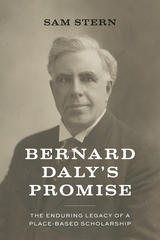 Bernard Daly's Promise: The Enduring Legacy of a Place-based Scholarship
Sam Stern
Oregon State University Press, 2022 Published in cooperation with the Dr. Daly Project Association
Bernard Daly escaped the Irish Famine and with his family emigrated to America, where he became the town doctor in Lakeview, Oregon, and then a state legislator, Oregon Agricultural College regent, county judge, rancher, and banker. When he died in 1920, his estate, valued at about a million dollars, established a college scholarship for the youth of Lake County, ensuring that most of them could attend college.
It’s hard to imagine a place more distant from higher education than Lake County in south central Oregon, a county about the size of New Jersey with a population under eight thousand. When the Bernard Daly scholarship was first awarded in 1922, less than two percent of America’s youth went to college, and the percentage was even lower in Lake County.
Today, Lake County students are much more likely to go to college, graduate in four years without debt, go on to graduate school, have successful careers, and contribute to the larger community—all because of a scholarship established a hundred years ago by an immigrant who sought a better life, not only for himself but also for others.
Drawing on more than a hundred personal interviews, an extensive web-based survey, and archival materials, Bernard Daly’s Promise offers unique insights into the benefits of higher education and how it might best be supported—questions that we are struggling with today.
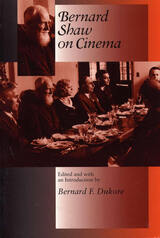 Bernard Shaw on Cinema
Edited by Bernard F. Dukore
Southern Illinois University Press, 1997 With his customary wit and quite often with remarkable prescience, Bernard Shaw maintained a dialogue on cinema that ran almost from the infancy of the industry in 1908 until his death in 1950. Bernard F. Dukore presents the first collection of Bernard Shaw’s writings and oral statements about cinema. Of the more than one hundred comments Dukore has selected, fifty-nine—more than half—are new to today’s readers. Twelve are previously unpublished, one is published in full for the first time, and forty-six appear in a collected edition of Shaw’s writings for the first time since their publication in newspapers and magazines. Very early in the life of cinema, Shaw perceived that as an invention, movies would be more momentous than the printing press because they appealed to the illiterate as well as the literate, to the manual laborer at the end of an exhausting day as well as to the person with more leisure. He predicted that cinema would form people’s minds and shape their conduct. He recognized that cinema’s "colossal proportions make mediocrity compulsory" by leveling art and life down to the blandest morality and to the lowest common denominator of potential audiences throughout the world. By 1908, Shaw was familiar with experiments synchronizing movies and sound. When talkies arrived, he discerned that they would precipitate major changes in acting, writing, and economics. He also saw how they would affect live theatre: "The theatre may survive as a place where people are taught to act," he said in 1930, "but apart from that there will be nothing but ‘talkies’ soon." At that time, few people in the theatrical profession were making such prophecies, at least not in public.
 Bernard Stiegler: Amateur Philosophy
Arne De Boever, special issue editor
Duke University Press, 2017 This issue brings together three lectures on aesthetics delivered by the French philosopher Bernard Stiegler in Los Angeles in 2011 with articles by scholars of Stiegler’s work. Aesthetics, understood as the theoretical investigation of sensibility, has been central to Stiegler’s work since the mid-1990s. The lectures featured here explicitly link Stiegler’s interest in sensibility to aesthetic theory proper as well as to art history. In “The Proletarianization of Sensibility,” “Kant, Art, and Time,” and “The Quarrel of the Amateurs,” Stiegler expounds his philosophy of technics and its effects on human sensibility, centering on how the figure of the amateur—who loves what he or she does—must be recovered from beneath the ruins of technical history. The other contributors engage the topics covered in the lectures, including the figure of the amateur, cinema, the digital, and extinction.
Contributors. Stephen Barker, Ed Cohen, Tom Cohen, Claire Colebrook, Arne De Boever, Benoît Dillet, Alexander R. Galloway, Mark B. N. Hansen, Jason R. LaRivière, Gerald Moore, Daniel Ross, Bernard Stiegler
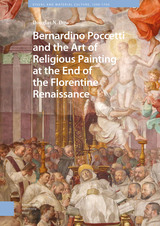 Bernardino Poccetti and the Art of Religious Painting at the End of the Florentine Renaissance
Douglas Dow
Amsterdam University Press, 2023 By almost any measure Bernardino Barbatelli, called Poccetti, was a successful and sought after painter in late sixteenth-century Florence, but his works have remained largely overlooked. This study situates representative examples of his religious painting within their respective contexts to demonstrate how Poccetti and his patrons negotiated the increasingly fraught terrain of sacred painting in the period of religious reform. These case studies demonstrate how patrons ranging from the Dominicans to the Carthusians to prominent Florentine patricians relied on Poccetti’s skill in creating compelling narratives that reflected current concerns within the Catholic world. In the process, Poccetti invoked an august Florentine tradition of fresco painting, shaping it to better address the demands placed on religious imagery at the end of the Renaissance.
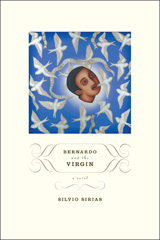 Bernardo and the Virgin: A Novel
Silvio Sirias
Northwestern University Press, 2007 In 1980, with the Sandinistas newly in power, tailor and pig farmer Bernardo Martinez witnesses an extraordinary thing: an otherworldly glow about the statue of the Virgin Mary in the church where he works as sacristán. Soon the Holy Virgin appears. She tells Bernardo to forget his money problems and fear of ridicule and spread her message of peace and faith to his neighbors. Though a work of fiction, Bernardo and the Virgin is based on actual events in Bernardo Martinez's life. The visitation of the Virgin Mary at Cuapa, Nicaragua, remains one of the few such events accepted by the Roman Catholic Church in the last sixty years.
Silvio Sirias' sweeping novel tells many stories: that of a humble man touched by the transcendent; that same man as a devout boy denied the priesthood because of poverty; and those in his orbit, past and present. It is also the stormy epic of Nicaragua through the long Somoza years to the Sandinista revolution. Sirias' beautiful language mixes English with Spanish and details of dusty village life with wondrous images of Catholic mysticism. His portrayal of the rich recent past of Central America resonates with the experiences of both the natives and the thriving communities of Nicaraguans, Salvadorans, and others putting down roots in the United States.
Bernhard Lang: Critical Guides to Contemporary Composers
Christine Dysers
Intellect Books, 2023 This introduction to a challenging contemporary composer delves into the theory and philosophy of repetition.
The work of Austrian composer Bernhard Lang elides easy categorization. While rooted simultaneously in DJ culture, free jazz, pop culture and the Austro-European new music scene, his oeuvre explicitly foregrounds repetition. He is, in his own words, a “repeat offender.”
Bernhard Lang serves as a critical guide to the composer’s music and traces the phenomenon of repetition throughout his oeuvre. To examine Lang’s repetitive aesthetics, Christine Dysers employs various philosophical methods, such as Gilles Deleuze’s differential ontology. Fusing critical musicology, aesthetic theory, poststructuralist thought, and music analysis, Bernhard Lang brings fresh insight to the work of an award-winning contemporary composer.
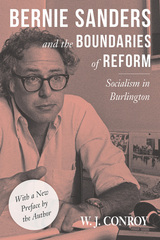 Bernie Sanders and the Boundaries of Reform: Socialism in Burlington
W. J. Conroy
Temple University Press, 2016 Today, Bernie Sanders is a household name, a wildly popular presidential candidate and an icon for progressive Democrats in the United States. But back in the 1980s, this “democratic socialist”—though some folks would prefer the term “social democrat”—was mayor of Burlington, Vermont, where his administration attempted radical reforms. Some efforts were successful, but when a waterfront deal failed, it was not due to Sanders' efforts; he would rather compromise and have a net gain than be an ideological purist.
In his preface to this reissue of the 1990 book, Challenging the Boundaries of Reform, W. J. Conroy reflects on the recent legacy of Sanders, his Agenda for America, and his appeal to young voters. His book then looks back to identify Sanders’ experience in Burlington by examining several case studies that unfolded amidst a conservative trend nationally, an unsympathetic state government, and a hostile city council.
Ultimately, Conroy asks what lessons can be drawn from the case of Burlington that would aid the American left in its struggle to capture both government and civil society?
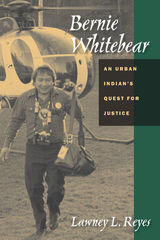 Bernie Whitebear: An Urban Indian's Quest for Justice
Lawney L. Reyes
University of Arizona Press, 2006 When American Indians left reservations in the 1950s, enticed by the federal government’s relocation program, many were drawn to cities like Tacoma and Seattle. But in these new homes they found unemployment and discrimination, and they were no better off. Sin Aikst Indian Bernie Whitebear was an urban activist in the Pacific Northwest during the last decades of the twentieth century, a man dedicated to improving the lives of Indians and other ethnic groups by working for change and justice. He unified Northwest tribes to fight for the return of their land and was the first to accomplish this in the United States. But far from a fearsome agitator, Bernie was a persuasive figure who won the praise and admiration of an entire community. Bernie began organizing powwows in the 1960s with an eye toward greater authenticity; and by making a name in the Seattle area as an entertainment promoter, he soon became a successful networker and master of diplomacy, enabling him to win over those who had long ignored the problems of urban Indians. Soft-spoken but outspoken, Bernie successfully negotiated with officials at all levels of government on behalf of Indians and other minorities, crossing into political territory normally off-limits to his people.
Bernie Whitebear’s story takes readers from an impoverished youth—including a rare account of life on the Colville Reservation during the 1930s—to the “Red Power” movement as it traces Bernie’s emergence as an activist influenced by contemporaries such as Bob Satiacum, Vine DeLoria, and Joe Delacruz. By choosing this course, Bernie was clearly making a break with his past, but with an eye toward a better future, whether staging the successful protest at Fort Lawton or acting on behalf of Native fishing rights in Puget Sound. When he died in July 2000, Bernie Whitebear had left an inestimable legacy, accomplishing things that no other Indian seemed able to do. His biography is an inspiring story for readers at many levels, an account of how one American Indian overcame hardships and obstacles to make a difference in the lives of his people—and an entire community.
 Bernini: Flights of Love, the Art of Devotion
Giovanni Careri
University of Chicago Press, 1994 Nowhere is evidence of Bernini's unique abillity to unite architecture with sculpture and painting into a beautiful whole more compelling than in the Baroque chapel of Bernini's design: a dark world sealed below by a balustrade, covered by a luminous celestial dome, and populated by bodies of paint, marble, stucco, and flesh. This book explores three of these Baroque chapels to show how Bernini achieved his remarkable effects. Giovanni Careri examines the ways in which the artist integrated the disparate forms of architecture, painting, and sculpture into a coherent space for devotion, and then shows how this accomplishment was understood by religious practitioners.
In the Fonseca Chapel, the Albertoni Chapel, and the church of Sant' Andrea al Quirinale, all in Rome, Careri identifies three types of ensemble and links each to a particular spiritual journey. Using contemporary theories in anthropology, film, and reception aesthetics, he shows how Bernini's formal mechanisms established an emotional dynamic between the beholder and a specific arrangement of forms. As an inquiry into the ways art in a certain historical context transformed and was transformed by its audience, Bernini: Flights of Love, the Art of Devotion is also a penetrating investigation into the aesthetic principles of multimedia composition.
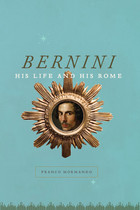 Bernini: His Life and His Rome
Franco Mormando
University of Chicago Press, 2011 A dazzling, accessible biography of one of the great geniuses of the Renaissance: sculptor, architect, and painter Bernini
Sculptor, architect, painter, playwright, and scenographer, Gian Lorenzo Bernini (1598–1680) was the last of the great universal artistic geniuses of early modern Italy, placed by both contemporaries and posterity in the same exalted company as Leonardo, Raphael, and Michelangelo. And his artistic vision remains palpably present today, through the countless statues, fountains, and buildings that transformed Rome into the Baroque theater that continues to enthrall tourists today.
It is perhaps not surprising that this artist who defined the Baroque should have a personal life that itself was, well, baroque. As Franco Mormando’s dazzling biography reveals, Bernini was a man driven by many passions, possessed of an explosive temper and a hearty sex drive, and he lived a life as dramatic as any of his creations. Drawing on archival sources, letters, diaries, and—with a suitable skepticism—a hagiographic account written by Bernini’s son (who portrays his father as a paragon of virtue and piety), Mormando leads us through Bernini’s many feuds and love affairs, scandals and sins. He sets Bernini’s raucous life against a vivid backdrop of Baroque Rome, bustling and wealthy, and peopled by churchmen and bureaucrats, popes and politicians, schemes and secrets.
The result is a seductively readable biography, stuffed with stories and teeming with life—as wild and unforgettable as Bernini’s art. No one who has been bewitched by the Baroque should miss it.
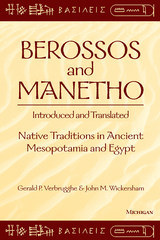 Berossos and Manetho, Introduced and Translated: Native Traditions in Ancient Mesopotamia and Egypt
Gerald P. Verbrugghe and John M. Wickersham
University of Michigan Press, 2001 Berossos and Manetho begins with a general introduction to the cultural history of ancient Mesopotamia and Egypt. It then presents a translation of the only known native narratives, written in Greek, of the histories of these two civilizations. The priest Berossos chronicled the past of ancient Babylon from the mythical creation of the world down to Alexander the Great's conquest in the fourth century b.c.e. For Egypt, the scribe Manetho's list of rulers from the reigns of the gods down to Alexander's conquest remains the basis for the dynastic arrangement of the pharaohs that is still used today.
Berossos and Manetho offers particular emphasis on and discussion of the languages and scripts used to preserve the glorious past of these lands. Each author receives his own special introduction, which describes his life, the sources of his History, the nature and content of his writings, and his goals and accomplishments. There follows a translation of all the surviving ancient information about each author, and of all that can be recovered of his writings. For the first time, Berossos and Manetho--priests and contemporaries who write just when their lands had been pushed into Hellenization--have been translated in one volume.
This volume will appeal to all people interested in ancient Israel, Greek history, and ancient history in general.
Gerald P. Verbrugghe is Associate Professor of History, Rutgers University. John M. Wickersham is Professor of Classics and Classics Department Chairperson, Ursinus College.
Bert: The Life and Times of A. L. Lloyd
Dave Arthur
Pluto Press, 2012 Folk singer and folk music collector, writer, painter, journalist, art critic, whalerman, sheep station roustabout, Marxist, and much more - this is the story of A. L. (Bert) Lloyd's extraordinary life.
A. L. Lloyd played a key part in the folk music revival of the 1950s and 60s, but that is only part of his story. Dave Arthur documents how Lloyd became a member of the Communist Party, forceful antifascist, trade unionist and an important part of left-wing culture from the early 1930s to his death in 1982. Following his return from Australia as a 21-year-old, self-educated agricultural labourer, he was at the heart of the most important left-wing movements and highly respected for his knowledge in various fields.
Dave Arthur recounts the life of a creative, passionate and life-loving Marxist, and in so doing provides a social history of a turbulent twentieth century.
 Berthe Morisot’s Images of Women
Anne Higonnet
Harvard University Press Like her colleagues—Cassatt, Degas, Monet, and Renoir—Berthe Morisot sought to represent the experience of modern life, a project that for her entailed rethinking what it meant to be a woman in the nineteenth century. Through close attention to the artist's work and its context, Anne Higonnet shows how Morisot transformed her femininity and its visual culture into impressionist paintings.
Higonnet presents a clear picture of visual traditions that, though very much a part of Morisot's world and work, figure only marginally in art history. Amateur picture making enormously popular among nineteenth-century women and industrialized feminine imagery dominated by the fashion plate provide a background and context for Morisot's imagery. Focusing on formal choices—poses, composition, brushwork—Higonnet compares Morisot's images of women with those of Cassatt, Degas, and Manet. And she examines critical themes: Morisot’s self-portraiture; her attempts, with Cassatt, at painting the female nude; and her pictorial explorations of the mother-daughter relationship.
 Bertrand De Jouvenel: Conserative Liberal & Illusions Of Modernity
Daniel J. Mahoney
Intercollegiate Studies Institute, 2005 In his effort to detach the indispensable notion of the common good from its historical identification with the more closed, homogeneous, and static societies of the premodern past, the French political philosopher Bertrand de Jouvenel (1903-87) pointed the way towards a viable conservative liberalism. So argues Daniel J. Mahoney in this compelling introduction to the life and work of Jouvenel, one of twentieth-century France's most profound philosophers and political essayists. Although he vigorously defended the historical achievement of liberal society against its totalitarian critics, Jouvenel also challenged the modern conceit that man is an autonomous being beholden neither to the moral law nor to the humanizing inheritance of the past. Mahoney's study focuses on Jouvenel's three masterworks On Power (1945), Sovereignty (1955), and The Pure Theory of Politics (1963) and on his broader effort to defend civility and social friendship against rationalist individualism and its logical fruit, collectivist politics. Mahoney explores Jouvenel's affinities with and debts to Aristotle, Burke, Rousseau, and Tocqueville, and he contrasts Jouvenel's signal theoretical achievements with the twists and turns manifested in his (sometimes questionable) practical political engagements from the 1930s until his death. Mahoney's characteristically engaging appraisal of this important political philosopher, the fifth entry in ISI Books' Library of Modern Thinkers series, is the first book on Jouvenel to appear in the English language.
 Bertrand Meniel: Paintings, 1996-2024
Terrie Sultan
The Artist Book Foundation, 2024 Photorealism is a genre of painting that developed in the United States and Europe using high-resolution photography as its primary source material. Embracing digital photography perhaps more than any other artist working in this genre, French-born Bertrand Meniel (1961–) is able to incorporate an astonishing amount of detail into his renderings of cityscapes in New York City, Miami, and Paris.
Primarily self-taught and with no preliminary experimental, developmental, or student work, by 1996 Meniel was creating works with powerful, distinctive, and very original imagery, having mastered techniques and skills that normally require a lifetime. Using a variety of photographs of his chosen subject, he manipulates an image to perfection, focusing simultaneously on the foreground and background by combing hundreds of shots on a computer screen.
His choice to depict iconic American scenes in his paintings, particularly those associated with the “American Way of Life,” reflects not just a technical mastery of Photorealism but a deep emotional connection to the culture that captivated him during his youth. His unique perspective, influenced by French artistic traditions and shaped by exposure to American pop culture, allows him to capture in his art the essence of what may be best described as the “New York State of Mind.”
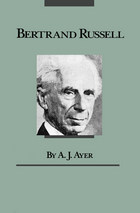 Bertrand Russell
A. J. Ayer
University of Chicago Press, 1988 With extraordinary concision and clarity, A. J. Ayer gives an account of the major incidents of Bertrand Russell's life and an exposition of the whole range of his philosophy. "Ayer considers Russell to be, except possibly for Wittgenstein, the most influential philosopher of our time. In this book [he] gives a lucid account of Russell's philosophical achievements."—James Rachels, New York Times Book Review
"I am sure [this] is the best introduction of any length to Russell, and I suspect that it might serve as one of the best introductions to modern philosophy. . . . Ayer begins with a brief, austere, and balanced account of Russell's life: as in Russell's autobiography this means his thought, books, women, and politics. Tacitus (and Russell) would have found the account exemplary. Ayer ends with a sympathetic and surprisingly detailed survey of Russell's social philosophy. But the bulk of this book consists of a chapter on Russell's work in logic and the foundations of mathematics, followed by a chapter on his epistemological views and one on metaphysics. . . . I find it impossible to imagine that this book will not remain indefinitely the very best book of its sort."—Review of Metaphysics
"The confrontation or conjunction of Ayer and Russell is a notable event and has produced a remarkable book—brilliantly argued and written."—Martin Lebowitz, The Nation
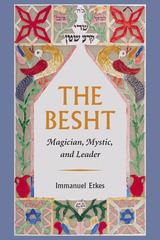 The Besht: Magician, Mystic, and Leader
Immanuel Etkes
Brandeis University Press, 2012 Founded in Eastern Europe in the eighteenth century, the Hasidic movement and its religious thinking have dramatically transformed modern Judaism. The figure of the Ba’al Shem Tov (known in acronym form as the BeSHT)—the purported founder of the Hasidic movement—has fascinated scholars, Jewish philosophers, and laypeople interested in popular Jewish mysticism in general and the contemporary Hasidic movement in all its variety. In this volume, Etkes enters a rich and heated debate over the origins of the movement, as well as the historicity of its mythic founder, Rabbi Israel Ba’al Shem Tov, who lived much of his life as a miracle worker. The eighteenth century, as Etkes vividly portrays, was the heyday of the kabbalists, who dabbled in the magical power of letters and words to solve personal and communal problems—and to earn a living. Etkes sheds light on the personality of the Besht, on his mysticism, and on his close circle of followers. But equally important, he challenges the popular myth of the Besht as a childlike mystic, wandering the fields in prayer, seeing visions and engaging in acts of godliness and piety. Although Etkes shows great empathy for his subject, the Besht who emerges in these pages is much more down to earth, much more a man of his times. Indeed, according to Etkes, it was never the intention of the Besht to found a religious movement. Etkes looks at the Besht’s mystical roots, examining him not only from the vantage point of a social historian, but as a religious figure. Moshe Rosman, author of Founder of Hasidism, a biography of the Besht, claims that In Praise of the Besht—a volume published about the Besht in 1814, many years after his death, which portrayed his character by means of stories told by his close followers—could not be a reliable source. Etkes, disputing this claim, shows definitively that this well-known text (translated and interpreted by, among others, Martin Buber) may indeed offer trustworthy accounts of the Besht’s life and thinking.
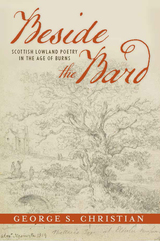 Beside the Bard: Scottish Lowland Poetry in the Age of Burns
George S. Christian
Bucknell University Press, 2020 Beside the Bard argues that Scottish poetry in the age of Burns reclaims not a single past, dominated and overwritten by the unitary national language of an elite ruling class, but a past that conceptualizes the Scottish nation in terms of local self-identification, linguistic multiplicity, cultural and religious difference, and transnational political and cultural affiliations. This fluid conception of the nation may accommodate a post-Union British self-identification, but it also recognizes the instrumental and historically contingent nature of “Britishness.” Whether male or female, loyalist or radical, literati or autodidacts, poets such as Alexander Wilson, Carolina Olyphant, Robert Tannahill, and John Lapraik, among others, adamantly refuse to imagine a single nation, British or otherwise, instead preferring an open, polyvocal field, on which they can stage new national and personal formations and fight new revolutions. In this sense, “Scotland” is a revolutionary category, always subject to creative destruction and reformation.
Published by Bucknell University Press. Distributed worldwide by Rutgers University Press.
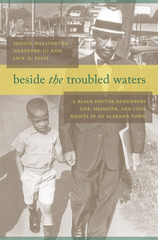 Beside the Troubled Waters: A Black Doctor Remembers Life, Medicine, and Civil Rights in an Alabama Town
Sonnie Wellington Hereford III and Jack D. Ellis
University of Alabama Press, 2011 A memoir by an African American physician in Alabama whose story in many ways typifies the lives and careers of black doctors in the south during the segregationist era
Beside the Troubled Waters is a memoir by an African American physician in Alabama whose story in many ways typifies the lives and careers of black doctors in the south during the segregationist era while also illustrating the diversity of the black experience in the medical profession. Based on interviews conducted with Hereford over ten years, the account includes his childhood and youth as the son of a black sharecropper and Primitive Baptist minister in Madison County, Alabama, during the Depression; his education at Huntsville’s all-black CouncillSchool and medical training at MeharryMedicalCollege in Nashville; his medical practice in Huntsville’s black community beginning in 1956; his efforts to overcome the racism he met in the white medical community; his participation in the civil rights movement in Huntsville; and his later problems with the Medicaid program and state medical authorities, which eventually led to the loss of his license. Hereford’s memoir stands out because of its medical and civil rights themes, and also because of its compelling account of the professional ruin Hereford encountered after 37 years of practice, as the end of segregation and the federal role in medical care placed black doctors in competition with white ones for the first time.
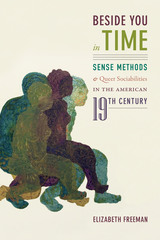 Beside You in Time: Sense Methods and Queer Sociabilities in the American Nineteenth Century
Elizabeth Freeman
Duke University Press, 2019 In Beside You in Time Elizabeth Freeman expands biopolitical and queer theory by outlining a temporal view of the long nineteenth century. Drawing on Foucauldian notions of discipline as a regime that yoked the human body to time, Freeman shows how time became a social and sensory means by which people assembled into groups in ways that resisted disciplinary forces. She tracks temporalized bodies across many entangled regimes—religion, secularity, race, historiography, health, and sexuality—and examines how those bodies act in relation to those regimes. In analyses of the use of rhythmic dance by the Shakers; African American slave narratives; literature by Mark Twain, Pauline Hopkins, Herman Melville, and others; and how Catholic sacraments conjoined people across historical boundaries, Freeman makes the case for the body as an instrument of what she calls queer hypersociality. As a mode of being in which bodies are connected to others and their histories across and throughout time, queer hypersociality, Freeman contends, provides the means for subjugated bodies to escape disciplinary regimes of time and to create new social worlds.
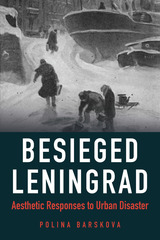 Besieged Leningrad: Aesthetic Responses to Urban Disaster
Polina Barskova
Northern Illinois University Press, 2017 During the 872 days of the Siege of Leningrad (September 1941 to January 1944), the city’s inhabitants were surrounded by the military forces of Nazi Germany. They suffered famine, cold, and darkness, and a million people lost their lives, making the siege one of the most destructive in history. Confinement in the besieged city was a traumatic experience. Unlike the victims of the Auschwitz concentration camp, for example, who were brought from afar and robbed of their cultural roots, the victims of the Siege of Leningrad were trapped in the city as it underwent a slow, horrific transformation. They lost everything except their physical location, which was layered with historical, cultural, and personal memory.
In Besieged Leningrad, Polina Barskova examines how the city’s inhabitants adjusted to their new urban reality, focusing on the emergence of new spatial perceptions that fostered the production of diverse textual and visual representations. The myriad texts that emerged during the siege were varied and exciting, engendered by sometimes sharply conflicting ideological urges and aesthetic sensibilities. In this first study of the cultural and literary representations of spatiality in besieged Leningrad, Barskova examines a wide range of authors with competing views of their difficult relationship with the city, filling a gap in Western knowledge of the culture of the siege. It will appeal to Russian studies specialists as well as those interested in war testimonies and the representation of trauma.
Beso the Donkey
Richard Jarrette
Michigan State University Press, 2010 Beso the Donkey is a poetry cycle about a wounded, neglected, and abandoned jackass. In sparklingly clear and luminous poems, Richard Jarrette tells the story of Beso and of his caregiver's attempts to understand and heal him—an endeavor that teaches the man much about the meaning of life, death, peace, and acceptance. With undertones of Buddhist, Christian, Taoist, and Islamic faiths, Beso the Donkey incorporates elements of philosophy, ethics, religion, and morality.
As the book progresses, we sense the poet’s growing acceptance of life’s passing. Along with the author, we feel a deeper peace blossoming as Beso’s life is ending (which is itself a beginning). This is a lyrical story of loss and acceptance.
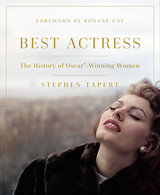 Best Actress: The History of Oscar®-Winning Women
Stephen Tapert
Rutgers University Press, 2020 Ingrid Bergman. Audrey Hepburn. Elizabeth Taylor. Jane Fonda. Meryl Streep. The list of women who have won the coveted and legendary Academy Award for Best Actress is long and varied. Through this illustrious roster we can trace the history of women in Hollywood, from the rise of Mary Pickford in the early 20th century to the #MeToo and Time’s Up movements of today, which have galvanized women across the world to speak out for equal pay, respect, power, and opportunity.
This lavishly illustrated coffee table book offers a vital examination of the first 75 women to have won the Best Actress Oscar over the span of 90 years. From inaugural recipient Janet Gaynor to Frances McDormand’s 2018 acceptance speech that assertively brought women to the forefront, Best Actress: The History of Oscar®-Winning Women serves to promote a new appreciation for the cinematic roles these women won for, as well as the real-life roles many of them played – and still play – in advancing women’s rights and equality. Stories range from Bette Davis’ groundbreaking battle against the studio system; to the cutting-edge wardrobes of Katharine Hepburn, Diane Keaton and Cher; to the historical significance of Halle Berry’s victory; to the awareness raised around sexual violence by the performances of Jodie Foster, Brie Larson, and others.
Showcasing a dazzling collection of 200 photographs, many of which have never before been seen or published, Best Actress honors the legacies of these revered and extraordinary women while scrutinizing the roadblocks that they continue to overcome.
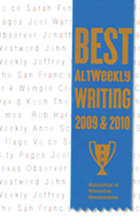 Best AltWeekly Writing 2009 & 2010
Association of Alternative Newsweeklies
Northwestern University Press, 2011 Alternative newsweeklies—from stalwarts such the Village Voice, LA Weekly, and the Chicago Reader to more recent additions like Seattle’s The Stranger—have long covered the most provocative stories with some of the country’s sharpest writing and reporting. And with the decline of the mainstream media, alternative weeklies now serve as a bulwark against the disappearance of local print coverage.
Best AltWeekly Writing 2009 & 2010 showcases articles that won the Association of Alternative Newsweeklies’s AltWeekly Awards in 2009 and 2010. These pieces embody the in-depth investigative journalism, narrative style, and defiant viewpoints that define alternative weeklies. Interviews with the authors illuminate the methods and personalities behind the stories. Articles feature music criticism from the Village Voice and election coverage from City Pages and the Texas Observer, as well as pieces from Westword, LA Weekly, San Francisco Weekly, and LEO Weekly. Interviews include journalists Anne Schindler, Sarah Fenske, Joel Warner, Jonathan Gold, John Dickerson, Jeffrey C. Billman, Erik Wemple, David Koon and Rob Harvilla.
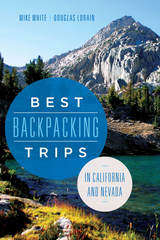 Best Backpacking Trips in California and Nevada
Mike White
University of Nevada Press, 2015 The American West is home to some of the best backpacking trips in the world, and within California and Nevada are several outstanding destination trails. Hikers from all over the country, and around the world, travel to this area every season to undertake some of these classic trips of a lifetime and enjoy the breathtaking scenery. Best Backpacking Trips in California and Nevada was written to help the accomplished hiker through the entire process of planning a multiday excursion. The book covers all aspects of the trip, from traveling to the area to successfully fulfilling the dream of backpacking in one of the most beautiful regions in the West.
The guide includes thirteen detailed trail descriptions, along with information on additional resources, governing agencies, and permits and fees. It also provides listings of the nearest airports, outdoor retailers, campgrounds, transportation, and amenities and attractions. Accompanying the specific information on each trip are captivating historical vignettes and entertaining personal essays, enhancing the reader’s understanding of the area. Whether journeying from near or far, Best Backpacking Trips of California and Nevada is the most complete resource for turning a dream trip into reality.
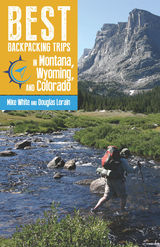 Best Backpacking Trips in Montana, Wyoming, and Colorado
Mike White
University Press of Colorado, 2019 Best Backpacking Trips in Montana, Wyoming, and Colorado provides everything you need to know to organize and execute the best backpacking trips in the Mountain West. Mike White and Douglas Lorain, who have walked every mile of the trails described inside, take readers and hikers into some of the wildest and most scenic backcountry landscapes in the nation and help them design the ultimate trip.
Focusing on one-week excursions, the book offers details on all the aspects of trip planning—trail narratives, technical data, maps, gear, food, information on regulations and permits, and more. But it is more than a basic guidebook. Trip information is enriched by valuable and interesting sidebars on history and ecology that will increase appreciation for these natural areas and the people who were instrumental in their discovery or protection.
In Best Backpacking Trips in Montana, Wyoming, and Colorado, White and Lorain pass on their knowledge of quality hikes, planning and preparation, and the unique satisfaction of multi-day backpacking. This guide, put into practice, will result in the trip of a lifetime.
 Best Backpacking Trips in Utah, Arizona, and New Mexico
Mike White
University of Nevada Press, 2016 This is the second book in a series of detailed guidebooks covering all the best “life-list” backpacking vacations in the spectacular backcountry of the American West. This new volume specifically covers the best such adventures in the states of Utah, Arizona, and New Mexico. Every conceivable aspect of trip planning is covered in the guide, including maps and descriptions of the trail, where to locate the nearest airport, other area attractions that shouldn’t be missed, and guide services that are available. A noteworthy feature of the book is the individual vignettes that give insight into the historical significance of many of the trails. Also unique are the interesting and humorous personal accounts that the authors share from their personal experiences hiking these routes. Backpackers will find a wide range of outstanding trips, from high mountain adventures to some of the world’s best lower-elevation canyon hikes. Best Backpacking Trips in Utah, Arizona, and New Mexico provides an extensive choice of terrific expeditions.
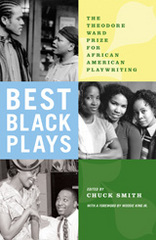 Best Black Plays: The Theodore Ward Prize for African American Playwriting
Chuck Smith
Northwestern University Press, 2007 Within the relatively recent development of a tradition of African American playwriting, the Theodore Ward Prize has, over its twenty-year history, offered a rich reflection of the accomplishments of emerging and established black playwrights and their growing importance in shaping contemporary theater. This volume showcases three winners of the Theodore Ward Prize--plays that in their quality and subject matter aptly represent what is being written and produced by African American playwrights and theaters today.
Carefully selected by a director and educator who has been affiliated with the contest for eighteen of its twenty years, these three works have themes that range from the sordid shenanigans of a Depression-era "South Side Burial Society" (Leslie Lee's Sundown Names and Night-Gone Things) to a single mother's heartbreaking battle to save her children's souls (Mark Clayton Southers' Ma Noah) to a poignant and achingly funny reunion of three sisters after their parents' death (Kim Euell's The Diva Daughters DuPree). Their publication answers a growing demand for the work of African American playwrights even as it affords deep and varied insights into African American culture in our era.
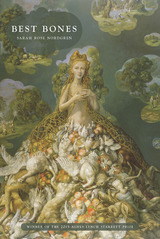 Best Bones
Sarah Rose Nordgren
University of Pittsburgh Press, 2014 Winner of the 2013 Agnes Lynch Starrett Poetry Prize
Best Bones is a house. When you walk around the rooms of the house, you overhear the desires and griefs of a family, as well as the unresolved concerns of lingering ghosts. The various voices in the house struggle against the family roles and social identities that they must wear like heavy garments—mother, father, wife, husband, sister, brother, servant, and master. All these voices crave unification; they want to join themselves into one whole sentient being, into “a mansion steering itself.”
The poems in Best Bones also explore the experience of living in a physical body, and how the natural world intersects with manmade landscapes and technologies. In it, mother has a reset button, servants blend into the furniture, and a doctor patiently oversees the pregnancy of the earth.
In these poems, the body is a working machine, a repository of childhood myth and archetype, and a window to the spiritual world. The poems strive to be visceral on the level of dream, or of a story that is half remembered and half fabricated.
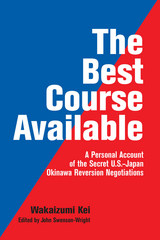 The Best Course Available: A Personal Account of the Secret U.S.-Japan Okinawa Reversion Negotiations
Wakaizumi Kei and edited by John Swenson-Wright
University of Hawaii Press, 2002 This volume affords a fascinating and rare look at the sensitive issue of nuclear diplomacy between two critical Cold War allies, the United States and Japan, during the 1960s. Challenging the silence of the official bureaucracies in Washington and Tokyo, Wakaizumi Kei reveals the truth behind the secret 1969 agreement that ensured the eventual reversion of Okinawa to Japanese jurisdiction in 1972. Revelation of this secret accord created considerable controversy in Japan when Wakaizumi's memoir was first published in 1994. With the publication of this translation, his description of the events leading up to the closed-door agreement is available to an English-language audience for the first time.
At a time when security matters are once again predominant in the U.S.-Japan alliance, Professor Wakaizumi's account is a timely reminder of the gap between official, media-filtered descriptions of diplomatic relations and the private discussions of national leaders. The long-standing reluctance of the Japanese government to declassify its postwar diplomatic records has meant that Japan's side of its relationship with the U.S. has been only partially revealed. The Best Course Available attempts to correct this shortcoming and at the same time provides insight into the complicated and arcane process of foreign policymaking, national leadership, and domestic politics in Japan after 1945.
The Best Effect: Theology and the Origins of Consequentialism
Ryan Darr
University of Chicago Press, 2023 A theological history of consequentialism and a fresh agenda for teleological ethics.
Consequentialism—the notion that we can judge an action by its effects alone—has been among the most influential approaches to ethics and public policy in the Anglophone world for more than two centuries. In The Best Effect, Ryan Darr argues that consequentialist ethics is not as secular or as rational as it is often assumed to be. Instead, Darr describes the emergence of consequentialism in the seventeenth century as a theological and cosmological vision and traces its intellectual development and eventual secularization across several centuries. The Best Effect reveals how contemporary consequentialism continues to bear traces of its history and proposes in its place a more expansive vision for teleological ethics.
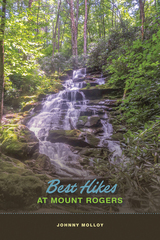 Best Hikes at Mount Rogers
Johnny Molloy
University of Tennessee Press, 2025 DUE TO SEVERE DAMAGE FROM HURRICANE HELENE, MOUNT ROGERS RECREATION AREA IS CLOSED AND WILL NOT REOPEN UNTIL THE FALL OF 2025. THE PUBLICATION OF BEST HIKES AT MOUNT ROGERS IS LIKEWISE DELAYED UNTIL THE FALL OF 2025.
Hikers, outdoor enthusiasts, and Appalachian nature lovers will find Johnny Molloy’s Best Hikes at Mount Rogers a must-have for their next expedition to the Mount Rogers National Recreation Area. Drawing on Molloy’s own personal encounters and his past publications on the Mount Rogers area, this guide highlights what he calls the “can’t-miss” adventures of this regional treasure.
Outlining thirty-eight of the best Mount Rogers trail experiences, Molloy gives readers helpful insights and data, including trail distances, difficulty ratings, estimated hiking times, trail highlights and hazards, and elevation changes, as well as his own qualitative scoring on elements such as scenery, solitude, and family- and pet-friendliness. His trail descriptions are personable, direct, and precise, giving travelers and hikers a well-rounded and no-nonsense description of the area section by section. While seasoned hikers may recognize iconic Mount Rogers landmarks along the Appalachian Trail or the Virginia Creeper, beginning adventurists or those new to the area will encounter them for the first time—and find hidden gems as well.
Along with the Great Smoky Mountains National Park and Shenandoah National Park, crown jewels of the Southern Appalachians, the Mount Rogers wilderness beams with biodiversity and life, a treasure not just for hiking but also for backpacking along rolling Appalachian ridges, fishing in pristine mountain creeks, and swimming in crystal-clear waters. Best Hikes at Mount Rogers highlights it all, offering readers a helpful companion to the challenges and rewarding experiences of Mount Rogers’s 154,000 acres of natural wonder.
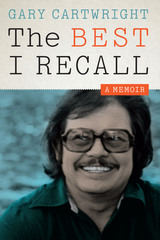 The Best I Recall: A Memoir
By Gary Cartwright
University of Texas Press, 2015 Gary Cartwright is one of Texas’s legendary writers. In a career spanning nearly six decades, he has been a newspaper reporter, Senior Editor of Texas Monthly, and author of several acclaimed books, including Blood Will Tell, Confessions of a Washed-up Sportswriter, and Dirty Dealing. Cartwright was a finalist for a National Magazine Award for reporting excellence, and he has won several awards from the Texas Institute of Letters, including its most prestigious—the Lon Tinkle Award for lifetime achievement. His personal life has been as colorful and occasionally outrageous as any story he reported, and in this vivid, often hilarious, and sometimes deeply moving memoir, Cartwright tells the story of his writing career, tangled like a runaway vine with great friendships, love affairs, four marriages, four or five great dogs . . . looking always to explain, at least to himself, how the pattern probably makes a kind of perverted sense. Cartwright’s career began at the Fort Worth Star-Telegram and Fort Worth Press, among kindred spirits and fellow pranksters Edwin “Bud” Shrake and Dan Jenkins. He describes how the three rookie writers followed their mentor Blackie Sherrod to the Dallas Times Herald and the Dallas Morning News, becoming the “best staff of sportswriters anywhere, ever” and creating a new kind of sportswriting that “swept the country and became standard.” Cartwright recalls his twenty-five years at Texas Monthly, where he covered everything from true crime to notable Texans to Texas’s cultural oddities. Along the way, he tells lively stories about “rebelling against sobriety” in many forms, with friends and co-conspirators that included Willie Nelson, Ann Richards, Dennis Hopper, Willie Morris, Don Meredith, Jack Ruby, and countless others. A remarkable portrait of the writing life and Austin’s counterculture, The Best I Recall may skirt the line between fact and fiction, but it always tells the truth.
The Best in Children's Books: The University of Chicago Guide to Children's Literature, 1966-72
Edited by Zena Sutherland
University of Chicago Press, 1973 With so many new children's books published each year, how can children learn to choose good books, and how can adults help them? This guide is designed to aid adults—parents, teachers, librarians—in selecting from the best children's literature published in recent years. By encouraging reading and ownership of books, by suggesting better books, and by discussing good books with enthusiasm and understanding, adults may help children to acquire discrimination in reading.
This guide contains 1,400 reviews of the best children's literature published between 1966 and 1972.
The Best in Children's Books: The University of Chicago Guide to Children's Literature, 1973-78
Zena Sutherland
University of Chicago Press, 1980 This collection reviews the best children's books that have appeared from 1973 to 1978. The reviews were written and selected by Zena Sutherland, the editor of the University of Chicago's Bulletin of the Center for Children's Books. Her 1973 edition of The Best in Children's Books, which covered books published from 1966 to 1972, was cited by the American School Board Journal as one of the outstanding books of the year in education.
The Best in Children's Books: The University of Chicago Guide to Children's Literature, 1979-84
Zena Sutherland
University of Chicago Press, 1986 Designed to aid adults—parents, teachers, librarians—in selecting from the best of recent children's literature, this guide provides 1,400 reviews of books published between 1979 and 1984.
This volume carries on the tradition established by Zena Sutherland's two earlier collections covering the periods from 1966 to 1972 and 1973 to 1978. Her 1973 edition of The Best in Children's Books was cited by the American School Board Journal as one of the outstanding books of the year in education.
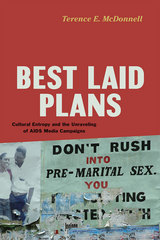 Best Laid Plans: Cultural Entropy and the Unraveling of AIDS Media Campaigns
Terence E. McDonnell
University of Chicago Press, 2016 We see it all the time: organizations strive to persuade the public to change beliefs or behavior through expensive, expansive media campaigns. Designers painstakingly craft clear, resonant, and culturally sensitive messaging that will motivate people to buy a product, support a cause, vote for a candidate, or take active steps to improve their health. But once these campaigns leave the controlled environments of focus groups, advertising agencies, and stakeholder meetings to circulate, the public interprets and distorts the campaigns in ways their designers never intended or dreamed. In Best Laid Plans, Terence E. McDonnell explains why these attempts at mass persuasion often fail so badly.
McDonnell argues that these well-designed campaigns are undergoing “cultural entropy”: the process through which the intended meanings and uses of cultural objects fracture into alternative meanings, new practices, failed interactions, and blatant disregard. Using AIDS media campaigns in Accra, Ghana, as its central case study, the book walks readers through best-practice, evidence-based media campaigns that fall totally flat. Female condoms are turned into bracelets, AIDS posters become home decorations, red ribbons fade into pink under the sun—to name a few failures. These damaging cultural misfires are not random. Rather, McDonnell makes the case that these disruptions are patterned, widespread, and inevitable—indicative of a broader process of cultural entropy.
The Best Lawyer in a One-Lawyer Town: A Memoir
Dale Bumpers
University of Arkansas Press, 2004 If Frank McCourt had grown up in Depression-era Arkansas, he might write like Dale Bumpers, one of the most colorful, entertaining, and wise politicians in recent American history, Atticus Finch with a sense of humor. In The Best Lawyer in a One-Lawyer Town, Bumpers tells the story of his remarkable journey from poverty to political legend, and the result is a great American memoir that has attracted wide acclaim for its clever southern charm.
Best Little Town: A Brief History of Tuckerman, Arkansas
Wayne Boyce
Mockingbird Press, 2015 In this well-researched developmental history of his hometown in Arkansas, author Wayne Boyce successfully documents the early beginnings of Tuckerman and accurately depicts how middle America was established.
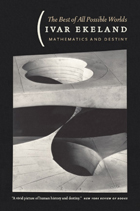 The Best of All Possible Worlds: Mathematics and Destiny
Ivar Ekeland
University of Chicago Press, 2006 Optimists believe this is the best of all possible worlds. And pessimists fear that might really be the case. But what is the best of all possible worlds? How do we define it? Is it the world that operates the most efficiently? Or the one in which most people are comfortable and content? Questions such as these have preoccupied philosophers and theologians for ages, but there was a time, during the seventeenth and eighteenth centuries, when scientists and mathematicians felt they could provide the answer.
This book is their story. Ivar Ekeland here takes the reader on a journey through scientific attempts to envision the best of all possible worlds. He begins with the French physicist Maupertuis, whose least action principle asserted that everything in nature occurs in the way that requires the least possible action. This idea, Ekeland shows, was a pivotal breakthrough in mathematics, because it was the first expression of the concept of optimization, or the creation of systems that are the most efficient or functional. Although the least action principle was later elaborated on and overshadowed by the theories of Leonhard Euler and Gottfried Leibniz, the concept of optimization that emerged from it is an important one that touches virtually every scientific discipline today.
Tracing the profound impact of optimization and the unexpected ways in which it has influenced the study of mathematics, biology, economics, and even politics, Ekeland reveals throughout how the idea of optimization has driven some of our greatest intellectual breakthroughs. The result is a dazzling display of erudition—one that will be essential reading for popular-science buffs and historians of science alike.
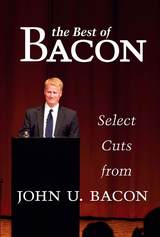 The Best of Bacon: Select Cuts
John U. Bacon
University of Michigan Press, 2018 From the Preface:
“I wrote these stories between 1992 and 2018. They cover a dozen different sports for a dozen different media outlets, from the Ann Arbor News to National Public Radio, and they stretch from a couple pages to a dozen. But they have one thing in common: they all meant a lot to me when I wrote them, and they still do today.”
The Best of Bacon presents both new and familiar stories by best-selling author John U. Bacon, all centered on sports in his home state of Michigan. Best known for his acclaimed books on college football, Bacon’s writing has been praised for going beyond traditional Xs and Os sports reporting. True to that reputation, this collection showcases personal, behind-the-scenes stories of players, coaches, and even fans. Many of these stories are connected to specific moments in time—a great season, the passing of a legendary broadcaster, or a star player’s daily grind before a big game—and will immediately transport readers to some of the highs (and lows) of their own sports memories. More often, Bacon’s writing explores timeless themes—why we love sports, how we pass that passion down to the next generation, and how it will be threatened or preserved in the future.
Michigan is one of the nation’s best sports states, home to countless amateur squads, two Big Ten schools, and professional teams in all four major sports whose histories reach back to the start of their leagues—something only New York, Massachusetts, and Illinois can also claim. This book covers the spectrum, from insider profiles of big names like Magic Johnson, Bo Schembechler, and Joe Louis, to cautionary tales of the debilitating greed threatening our favorite pastimes, to uplifting stories of the unsung heroes whose passion drives them to coach Little League baseball teams or run summer camps for peanuts. These stories speak to the value of sports, but also to our values. Whether a Spartan or a Wolverine, a long-suffering Lions’ backer or a diehard Wing-Nut, a lifetime sports fan or just someone who loves a good story, there is something here for everyone.
The Best of Fisher: 28 years of Editorial Cartoons from Faubus to Clinton
George Fisher
University of Arkansas Press, 1993 Here, with George Fisher at his very best, is a unique telling of the story of Arkansas and much of America from the time Orval Faubus first came to represent the state to the nation and the world until the year Bill Clinton assumed that role on a very different stage. Fisher’s cartoons have put into perspective much of what has occurred in Arkansas and a good deal of the United States From the 1970 to the early 1990s. These cartoons are also, let us hasten to say, a lot of fun, and sometimes deeply touching, as Fisher creates metaphors to give us new insights into the events that have filled our news magazines, television screens, and conversations.
The Best of Jackson Payne: A Novel
Jack Fuller
University of Chicago Press, 2001 When Charles Quinlan, an academic obsessed with jazz, starts exploring the life and death of Jackson Payne, a fictional tenor-sax player, he can't imagine where his research will lead. Told in a series of dazzling riffs by everyone from Payne's lovers to his fellow musicians, The Best of Jackson Payne is a novel that swings unlike any other.
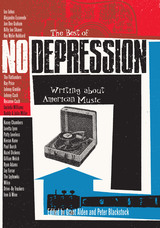 The Best of No Depression: Writing about American Music
Edited by Grant Alden and Peter Blackstock
University of Texas Press, 2005 Since the magazine's founding in 1995, No Depression has reported on and helped define the music that goes by names such as alt.country, Americana, and roots music. Though dismissed by the commercial country music establishment as "music that doesn't sell," alternative country has attracted thousands of listeners who long for the authenticity and rich complexity that come from its potent blend of country and rock 'n' roll and any number of related musical genres and subgenres.
To celebrate No Depression's tenth anniversary and spotlight some of the most important artists and trends in alt.country music, editors Grant Alden and Peter Blackstock have compiled this anthology of twenty-five of the magazine's best and most representative feature articles. Their subjects range from venerated country artists such as Johnny Cash and Ray Price to contemporary songwriters such as Lucinda Williams and Buddy and Julie Miller to the post-punk country-influenced bands Wilco and the Drive-By Truckers. All of the articles included here illustrate No Depression's commitment to music writing that puts the artist front-and-center and covers his or her career in sufficient depth to be definitive. Alden and Blackstock have also written a preface to this volume in which they discuss the alt.country phenomenon and the history and editorial philosophy that have made No Depression the bible for everyone seeking genuine American roots music.
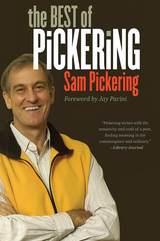 The Best of Pickering
Sam Pickering
University of Michigan Press, 2004 Praise for Sam Pickering:
"Pickering has all of Thurber's humor, and he writes as well as E. B. White. He writes with passion, wit, and a strange personal note of self-mockery; he is humanely educated, wise, and capable of a wide range of stylistic effects."
----Jay Parini
". . . he writes in the tradition of Montaigne hammering together a ramshackle affair of surprising nooks, crannies and additions-all under the same roof."
---The Oxford American
"Pickering has the natural essayist's intimate yet distanced take on the world that combines a devotion to particulars . . . with a near-indifference to the status- and achievement-mongering that marks modern life."
---Publishers Weekly
"Pickering writes with the sensitivity and craft of a poet, finding meaning in the commonplace and ordinary."
---Library Journal
"Pickering's genre is unique, but I'm not sure anyone else can write this stuff. I can live with that, as long as Pickering himself continues to wend through the forests, classrooms, airports, billiards championships, hometown parades, and his inner world of Tennessee gags and characters."
---Hartford Courant
His writing is as unique and recognizable as the music of Mozart, the painting of Picasso, or the poetry of Dickinson. Yet most Americans likely know Sam Pickering, the University of Connecticut English professor, from the movie Dead Poets Society. In the film, Robin Williams plays an idiosyncratic instructor---based on Pickering---who employs some over-the-top teaching methods to keep his subjects fresh and his students learning.
Fewer probably know that Pickering is the author of more than 16 books and nearly 200 articles, or that he's inspired thousands of university students to think in new ways. And, while Williams may have captured Pickering's madcap classroom antics, he didn't uncover the other side of the author-Sam Pickering as one of our great American men of letters.
The Best of Pickering amply demonstrates Pickering's amazing powers of perception, and gives us insight into the mind of a writer nearly obsessed with turning his back on the conventional trappings of American success-a writer who seems to prefer lying squirrel's-eye-level next to a bed of daffodils in the spring or trespassing on someone else's property to pursue a jaunt through joe-pye weed and goldenrod. Indeed, Pickering's philosophy, at least on paper, may very well be "Now is the only time."
If you haven't met Sam Pickering before, prepare to be surprised and delighted by these wry and sometimes self-deprecating essays that are witty and elegant and concrete yet wander widely, and include Pickering's well-trod fictional Southern town of Carthage, Tennessee, full of strange goings-on. This definitive collection of the best of Pickering is a must for Pickering fans and a fine introduction for the uninitiated to one of our greatest men of letters.
The Best of Rilke: 72 Form-True Verse Translations with Facing Originals, Commentary, and Compact Biography
Rainer Maria Rilke
Dartmouth College Press, 1991 Rainer Maria Rilke’s best poems are finally available in translations so faithful yet free flowing that a reader forgets they were not originally written in English. Applying the same principle of “form-true” rendering that earned him the Bollingen Prize for his translation of Pushkin’s Eugene Onegin, poet-translator Walter Arndt boldly claims to reproduce in English for the first time the prosodic identity of Rilke’s finest rhymed poems.
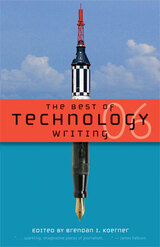 The Best of Technology Writing 2006
Brendan I. Koerner, Editor
University of Michigan Press, 2006 “The essays collected in this book are sparkling, imaginative pieces of journalism that just happen to be about technology. People steeped in the world of AJAX or Massively Mulitplayer Online Games will find a lot to value here, but so will readers simply in search of good writing.”
—James Fallows, National Correspondent for Atlantic Monthly
“The human experience is being shaped by our symbiotic relationship to technology. What makes this collection wonderful is that it’s not about the technology, per se, but it’s about this changing human experience. I will look forward to it every year.”
—Po Bronson, author of What Should I Do With My Life?
The Best of Technology Writing 2006 brings together some of the most important, timely, and just plain readable writing in the fast-paced, high-stakes field of technology. The first annual collection to target this vibrant and versatile area, The Best of Technology Writing 2006 features innovative work from an unusually diverse array of writers: best-selling authors, noted academics, and indie journalists and bloggers. The culmination of an open, on-line nominating process, this collection covers topics ranging from jetpacks, to the ethics of genetically cloned pets, to the meaning of life in the information age. By turns epic and intimate, serious and playful, The Best of Technology Writing 2006 captures the vitality, importance, and complexity of technology today. Koerner
Featuring contributions from: David A. Bell David Bernstein Mike Daisey Joshua Davis Jay Dixit Daniel Engber Dan Ferber Steven Johnson Steven Levy Farhad Manjoo Lisa Margonelli David McNeill Justin Mullins Koranteng Ofosu-Amaah Adam L. Penenberg Daniel H. Pink Evan Ratliff Alex Ross Jim Rossignol Jesse Sunenblick Edward Tenner Clive Thompson Joseph Turow Richard Waters Brendan I. Koerner is a contributing editor for Wired, a columnist for both New York Times and Slate, and a fellow at the New America Foundation. His first book will be published by Henry Holt & Company in 2008. digitalculturebooks is an imprint of the University of Michigan Press and the Scholarly Publishing Office of the University of Michigan Library dedicated to publishing innovative and accessible work exploring new media and their impact on society, culture, and scholarly communication. Visit the website at www.digitalculture.org.
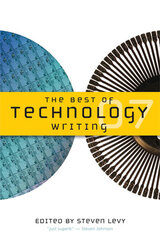 The Best of Technology Writing 2007
Steven Levy, Editor
University of Michigan Press, 2007 The year’s best writing on tech: a collection as imaginative and compelling as its dynamic subject “This book is not just an illuminating and instructive guide to our high-tech frontier. It’s also a great testimony to the power of that most ancient of technologies, the written word.” —Steven Johnson, author of Everything Bad is Good for You Together the essays in The Best of Technology Writing 2007 capture the versatility and verve of technology writing today. Solicited through an open online nominating process, these pieces explore a wide range of intriguing topics—from “crowdsourcing” to the online habits of urban moms to the digital future of movie production. The Best of Technology Writing 2007 will appeal to anyone who enjoys stellar writing. Steven Levy is a Senior Editor at Newsweek, where he writes the biweekly column “The Technologist.” One of the most acclaimed and versatile technology writers in the country, Levy has written six books, including The Perfect Thing (about Apple’s iPod) and Hackers, which PC Magazine’s readers voted the best sci-tech book written in the last twenty years. He has written for many publications, including the New Yorker, the New York Times Magazine, Rolling Stone, and Wired. Featuring contributions from Kevin Berger Paul Boutin Kiera Butler Joshua Davis Julian Dibbell Matt Gaffney Lori Gottlieb John Gruber Jeff Howe Kevin Kelly Jaron Lanier Preston Lerner Farhad Manjoo Justin McElroy Ben McGrath Katharine Mieszkowski Emily Nussbaum Jeffrey M. O’Brien Larry O’Brien The Onion Adam L. Penenberg John Seabrook Philip Smith Aaron Swartz Clive Thompson Jeffrey R. Young digitalculturebooks is an imprint of the University of Michigan Press and the Scholarly Publishing Office of the University of Michigan Library dedicated to publishing innovative and accessible work exploring new media and their impact on society, culture, and scholarly communication. Visit the website at www.digitalculture.org.
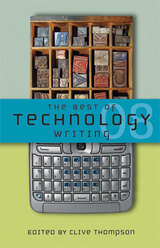 The Best of Technology Writing 2008
Clive Thompson, Editor
University of Michigan Press, 2008 "No one covers technology with more insight or panache than Clive Thompson. I can't imagine anyone better qualified to curate this fascinating series."
---Chris Anderson, editor in chief of Wired magazine and author of The Long Tail "Editor Clive Thompson suggests we are in a ‘golden age of technology journalism.' Reading this collection, one suspects he is right---it sparkles with beautifully written narratives not only about what technology can do for us but what it does to us as people, to our ways of thinking about ourselves, our relationships, and how we envisage our world."
---Sherry Turkle, Director, MIT Initiative on Technology and Self, Massachusetts Institute of Technology The Best of Technology Writing 2008 proves that technology writing is a bona fide literary genre with some of the most stylish, compelling, and just plain readable work in journalism today. The third volume in this annual series, The Best of Technology Writing 2008 covers a fascinating mix of topics---from a molecular gastronomist's recipe for the perfect gin and tonic; to "the Mechanism," an ancient Greek artifact that might be the world's first laptop computer; to social media, privacy, and what is possibly the biggest generation gap since rock 'n' roll. Featuring contributions from - Ted Allen
- Michael Behar
- Caleb Crain
- Julian Dibbell
- Cory Doctorow
- David Glenn
- Thomas Goetz
- Charles Graeber
- Alex Hutchinson
- Walter Kirn
- Robin Mejia
- Emily Nussbaum
- Ben Paynter
- Jeffrey Rosen
- John Seabrook
- Cass R. Sunstein
digitalculturebooks is an imprint of the University of Michigan Press and the Scholarly Publishing Office of the University of Michigan Library dedicated to publishing innovative and accessible work exploring new media and their impact on society, culture, and scholarly communication. Visit the website at www.digitalculture.org.
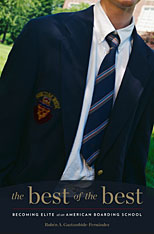 The Best of the Best: Becoming Elite at an American Boarding School
Rubén A. Gaztambide-Fernández
Harvard University Press, 2009 For two years, Rubén Gaztambide-Fernández shared the life of what he calls the “Weston School,” an elite New England boarding school. He sat in on classes, ate meals in the dining halls, cheered at sporting events, hung out in dorms while students baked cookies or celebrated birthdays. And through it all, observing the experiences of a diverse group of students, conducting interviews and focus groups, he developed a nuanced portrait of how these students make sense of their extraordinary good fortune in attending the school.
Vividly describing the pastoral landscape and graceful buildings, the rich variety of classes and activities, and the official and unofficial rules that define the school, The Best of the Best reveals a small world of deeply ambitious, intensely pressured students. Some are on scholarship, others have never met a public school student, but all feel they have earned their place as a “Westonian” by being smart and working hard. Weston is a family, they declare, with a niche for everyone, but the hierarchy of coolness—the way in which class, race, sexism, and good looks can determine one’s place—is well known.
For Gaztambide-Fernández, Weston is daunting yet strikingly bucolic, inspiring but frustratingly incurious, and sometimes—especially for young women—a gilded cage for a gilded age. “Would you send your daughter here?” one girl asks him, and seeing his hesitation asks, “Because you love her?”
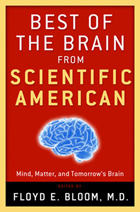 Best of the Brain from Scientific American: Mind, Matter, and Tomorrow's Brain
Edited by Floyd E. Bloom
Dana Press, 2007
We hear about a woman with an artificial arm controlled by her mind, read stories about the creative potential of “right-brain” and “left-brain” people, and watch science fiction films featuring characters with implanted mind chips. Yet few of us understand the science behind these and other visionary advances being made today in brain research. Leading neuroscientists and scholars have charted the stream of new findings in Scientific American and Scientific American Mind, and their articles from the past eight years, compiled here in a comprehensive volume, offer diverse and provocative perspectives on various cutting-edge brain science projects.
Scientific American, the oldest continuously published magazine in the United States, has long been the standard bearer of science journalism, and the brain science articles published in its pages offer unparalleled insights into the world of neuroscience. The expert articles assembled here, divided into three sections, reveal the latest developments of brain research in a compelling and wholly readable fashion and explore the range of fields and topics now included under the umbrella of neuroscience.
Consciousness and creativity are the focus of the “Mind” section, which features such compelling essays as science writer Carl Zimmer’s examination of how the brain creates a sense of self. Steven E. Hyman, Harvard Provost and former director of the National Institute of Mental Health, proposes new ways of diagnosing psychiatric disorders in “Matter,” a section that also features articles on psychological disorders, addictions, and other topics related to the interaction between body and brain. And “Tomorrow’s Brain” reveals the intriguing future potential of man-machine interactions, as well as pioneering new methods of brain treatment. Eminent neuroscientist Floyd E. Bloom also contributes an engaging introduction that situates these pieces on the front lines of brain research.
In today’s technologically driven world, our lives are changing faster than ever, and neuroscience is becoming an integral part of that transformation. Best of the Brain from Scientific American gathers the very best writings on this sea change, providing an invaluable guide to the exhilarating possibilities of neuroscience.
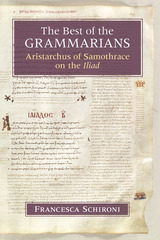 The Best of the Grammarians: Aristarchus of Samothrace on the Iliad
Francesca Schironi
University of Michigan Press, 2018 A founding father of the “art of philology,” Aristarchus of Samothrace (216–144 BCE) made a profound contribution to ancient scholarship. In his study of Homer’s Iliad, his methods and principles inevitably informed, even reshaped, his edition of the epic. This systematic study places Aristarchus and his fragments preserved in the Iliadic scholia, or marginal annotations, in the context and cultural environment of his own time.
Francesca Schironi presents a more robust picture of Aristarchus as a scholar than anyone has offered previously. Based on her analysis of over 4,300 fragments from his commentary on the Iliad, she reconstructs Aristarchus’ methodology and its relationship to earlier scholarship, especially Aristotelian poetics. Schironi departs from the standard commentary on individual fragments, and instead organizes them by topic to produce a rigorous scholarly examination of how Aristarchus worked.
Combining the accuracy and detail of traditional philology with a big-picture study of recurrent patterns and methodological trends across Aristarchus’ work, this volume offers a new approach to scholarship in Alexandrian and classical philology. It will be the go-to reference book on this topic for many years to come, and will usher in a new way of addressing the highly technical work of ancient scholars without losing philological accuracy. This book will be valuable to classicists and philologists interested in Homer and Homeric criticism in antiquity, Hellenistic scholarship, and ancient literary criticism.
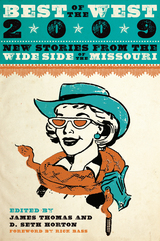 Best of the West 2009: New Stories from the Wide Side of the Missouri
Edited by James Thomas and D. Seth Horton
University of Texas Press, 2009 Best of the West: New Stories from the Wide Side of the Missouri, an annual anthology of exceptional short fiction rooted in the western United States, debuted in 1988 and continued publication until 1992. Recognizing that the West remains rewarding territory for literary explorations, James Thomas and Seth Horton are now reviving the series in Best of the West 2009.
Thomas and Horton combed some 250 literary journals and magazines to gather these eighteen stories published since the fall of 2007. They come from both emerging and established writers, including Lee K. Abbott, Louise Erdrich, Dagoberto Gilb, Antonya Nelson, Joyce Carol Oates, and Annie Proulx. Like Bass, the editors believe "the Western short story" inhabits a wide territory; the subjects in this collection range from illegal immigrants tending illegal crops in California's national forests, to mismatched Mormon missionaries on the conversion trail in Nevada, to a Native American college student exploring her sexuality, to Papa Hemingway's meditations as he loads the shotgun in his Idaho cabin. As these stories make clear, the West continues to shape our literary landscape. Thomas and Horton have preserved the best of that work in this vital anthology.
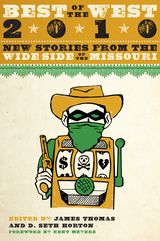 Best of the West 2010: New Stories from the Wide Side of the Missouri
Edited by James Thomas and D. Seth Horton
University of Texas Press, 2010 Best of the West: New Stories from the Wide Side of the Missouri, an annual anthology of exceptional short fiction rooted in the western United States, debuted in 1988 and continued publication until 1992. Recognizing that the West remains rewarding territory for literary explorations, James Thomas and D. Seth Horton revived the series in 2009.
Best of the West 2010 brings together established and emerging writers who reinterpret this most vital of literary regions and create, as Kent Meyers puts it in his foreword, "gift[s] the nation needs right now." Editors Horton and Thomas have chosen nineteen stories by writers including Sherman Alexie, Rick Bass, Ron Carlson, Julia Glass, William Kittredge, Kent Nelson, and Deb Olin Unferth. Their subjects vary from a Greek community in Wyoming dealing with a suicide, to a re-creation of Christ's crucifixion in New Mexico, to an unlikely friendship that peaks at a burial ground in Alaska. Best of the West 2010 is the latest indication that the West has become one of the most crucial settings for contemporary American fiction.
Contributors:
- Sherman Alexie
- Rick Bass
- John Blanchard
- Elea Carey
- Ron Carlson
- Natalie Diaz
- Darren Dillman
- Ben Ehrenreich
- Julia Glass
- Dina Guidubaldi
- Ben Kostival
- William Kittredge
- Paul Mihas
- Kent Nelson
- Daniel Orozco
- Kirstin Valdez Quade
- Aurelie Sheehan
- Justin St. Germain
- Deb Olin Unferth
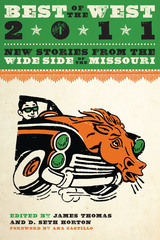 Best of the West 2011: New Stories from the Wide Side of the Missouri
Edited by James Thomas and D. Seth Horton
University of Texas Press, 2011 Best of the West: New Stories from the Wide Side of the Missouri, an annual anthology of exceptional short fiction rooted in the western United States, debuted in 1988 and continued publication until 1992. Recognizing that the West remains rewarding territory for literary explorations, James Thomas and D. Seth Horton revived the series in 2009.
Best of the West 2011: New Stories from the Wide Side of the Missouri is the latest volume in what has become one of the nation's most important anthologies. Editors Horton and Thomas have chosen twenty stories by writers including Rick Bass, T. C. Boyle, Ron Carlson, Philipp Meyer, Dagoberto Gilb, Yiyun Li, Antonya Nelson, and Sam Shepard. Subjects vary from an Idaho family that breeds lions and tigers with disastrous results, to a Mormon veteran whose mind is taken over by a nineteenth-century consciousness, to a Texas boy who spends an afternoon with Bonnie and Clyde shortly before their deaths. Taken together, these stories suggest that the West has become one of the most exciting and diverse literary regions in the twenty-first century.
Best of Times, Worst of Times: Memoirs of a Political Education
Walter Laqueur
Brandeis University Press, 2009 Walter Laqueur has been writing and teaching for over six decades, primarily in the fields of twentieth century history and politics, always as a shrewd and thoughtful generalist in an age of specialization. In this engaging memoir, Laqueur focuses on the political and historical events that shaped his thinking and that have inspired his intellectual work throughout his life. He discusses living and attending school under Nazism; Marxism, the Soviet Union, and the part he played in Cold War politics; and the image his generation had of Zionism, Israel, and the Middle East. Laqueur shares his views on beltway politics and think tanks, and concludes with a look at guerrilla warfare and terrorism, and the future of Europe.
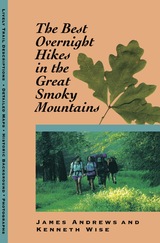 The Best Overnight Hikes in the Great Smoky Mountains: Great Smoky Mountains
James Andrews
University of Tennessee Press, 1997 Located astride the Tennessee–North Carolina border, the Great Smoky Mountains National Park contains more than one hundred trails that trace eight hundred miles of rugged terrain. This fact is certain to bewilder any newcomer who might be eager to explore the Park’s backcountry but is unsure where to start. This book, intended as a beginner’s guide to hiking the Smokies, offers lively, informative descriptions of twenty-two trails that can be completed in a day or less.
For anyone who has yet to discover the beauty of the Smokies, the highest North American mountains east of the Mississippi, the trails described here offer a splendid introduction. Scenic overlooks at Mount Le Conte, Clingmans Dome, Gregory Bald, and other peaks are included along these pathways, as are some of the well-known waterfalls of the Park, such as Laurel Falls, Rainbow Falls, and Ramsay Cascades. In addition to vital data about the length of the trail, its elevation gain, and “how to get there,” each trail description is packed with interesting facts and Smoky Mountain lore. Detailed maps are also included. In their introduction, the authors provide a brief overview of the park’s history as well as useful tips for novice hikers.
The Authors: Kenneth Wise, an administrator at the University of Tennessee Library, Knoxville, has hiked in the Great Smoky Mountains National Park for more than twenty years. He is the author of <i>Hiking Trails of the Great Smoky Mountains: A Comprehensive Guide</i>.
James Andrews,a partner in the firm of Andrews, Hudson & Wall, P.C., has hiked the Park trails for more than a decade. He is the coauthor, with Wise, of <i>The Best Overnight Hikes in the Great Smoky Mountains</i>.
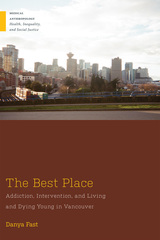 The Best Place: Addiction, Intervention, and Living and Dying Young in Vancouver
Danya Fast
Rutgers University Press, 2024 In both local and international imaginations, Vancouver, Canada, is often celebrated as one of the world’s most beautiful, cosmopolitan, and livable cities. Simultaneously, the city continues to be ground zero for successive waves of public health emergency and intervention, including a recent and unprecedented drug overdose crisis driven by the proliferation of illicitly manufactured fentanyl and related analogs in the local drug supply. In The Best Place: Addiction, Intervention, and Living and Dying Young in Vancouver, Danya Fast explores these politics of place from the perspectives of young people who use drugs. Those who are the subject of this book were in many ways relegated to the social, spatial, and economic margins of the city. Yet, they were also often at the very center of city life and state projects, including the project of protecting life in the context of the current overdose crisis.
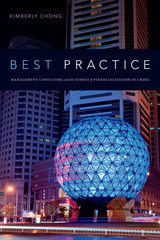 Best Practice: Management Consulting and the Ethics of Financialization in China
Kimberly Chong
Duke University Press, 2018 In Best Practice Kimberly Chong provides an ethnography of a global management consultancy that has been hired by Chinese companies, including Chinese state-owned enterprises. She shows how consulting emerges as a crucial site for considering how corporate organization, employee performance, business ethics, and labor have been transformed under financialization. To date financialization has been examined using top-down approaches that portray the rise of finance as a new logic of economic accumulation. Best Practice, by contrast, focuses on the everyday practices and narratives through which companies become financialized. Effective management consultants, Chong finds, incorporate local workplace norms and assert their expertise in the particular terms of China's national project of modernization, while at the same time framing their work in terms of global “best practices.” Providing insight into how global management consultancies refashion Chinese state-owned enterprises in preparation for stock market flotation, Chong demonstrates both the dynamic, fragmented character of financialization and the ways in which Chinese state capitalism enables this process.
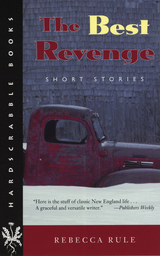 The Best Revenge: Short Stories
Rebecca Rule
University of New Hampshire Press, 2004 In nineteen finely honed, deftly realized short stories, Rebecca Rule crafts with gentle wit and striking clarity a conglomeration of sometimes ragtag but always appealing small-town denizens, each of whom squares off against a nemesis of a singular sort. With an eye for the signature detail, an ear for the rhythms of regional speech, and a strong feel for the nuances of rural culture, Rule maintains a fine balance between humor and pathos that prompted National Book Award winner Thomas Williams to comment, Cold honesty gleams from every careful sentence.
Twice nominated for the Pushcart Prize, Rule captures the essence of small-town New England life as she paints with a sure hand the fallings-out and friendships, the trials and triumphs of the New England microcosm. In Yankee Curse, elderly Miranda knits placidly at a town meeting, pondering an amazing string of unspoken invective against an enemy but stopping short at a curse she would never levy, not even on Mort Wallace: to live too long. In Minna Runs for Selectman, a middle-aged woman's battlefield is the strange, incestuous politics of this eccentric little town but her real opponent is her own insecurity. In Jim's Boat a young couple wages a silent struggle over priorities in their marriage; in Fishing with George a small girl worries that there's a hole in our family that gets bigger every time her parents argue; and in the title story a mother copes with a hated neighbor through a sculpture that makes her laugh the kind of laugh that doesn't end in a sob. Children and grandmothers, trappers and college professors, lifetime Yankees or transplanted Flatlanders: each finds the truth in Rule's observation that revenge takes many forms -- some of which can heal.
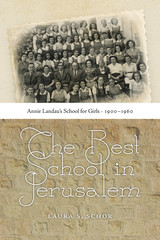 The Best School in Jerusalem: Annie Landau’s School for Girls, 1900–1960
Laura S. Schor
Brandeis University Press, 2013 Annie Edith (Hannah Judith) Landau (1873–1945), born in London to immigrant parents and educated as a teacher, moved to Jerusalem in 1899 to teach English at the Anglo-Jewish Association’s Evelina de Rothschild School for Girls. A year later she became its principal, a post she held for forty-five years. As a member of Jerusalem’s educated elite, Landau had considerable influence on the city’s cultural and social life, often hosting parties that included British Mandatory officials, Jewish dignitaries, Arab leaders, and important visitors. Her school, which provided girls of different backgrounds with both a Jewish and a secular education, was immensely popular and often had to reject candidates, for lack of space. A biography of both an extraordinary woman and a thriving institution, this book offers a lens through which to view the struggles of the nascent Zionist movement, World War I, poverty and unemployment in the Yishuv, and the relations between the religious and secular sectors and between Arabs and Jews, as well as Landau’s own dual loyalties to the British and to the evolving Jewish community.
 The Best Science Stories and How They Work: A Collection with Commentary
Edited by Siri Carpenter
University of Chicago Press An invitation to engage with some of today’s most respected science journalists as they take readers beneath the surface to tell the stories behind eleven of the best science stories.
With eleven deeply reported, artfully crafted stories and annotations by some of the most thoughtful and respected science journalists working today, The Best Science Stories and How They Work is more than the sum of its impressive parts. Experience the pleasure of reading a “Best of” anthology, attending a science writing masterclass, and meeting journalists who become more than their familiar bylines. Each piece benefits from an introduction, annotations, and a conversation between the piece’s author and annotator.
Siri Carpenter—editor of this book and cofounder of The Open Notebook, a leading source of training and educational materials for journalists who cover science—has long considered what’s behind the best writing. The pieces in this guide are drawn from a range of publications such as Scientific American, Nature, The Atlantic, and The New York Times Magazine, and offer a unique perspective on how great science journalism happens: the careful structuring of a narrative, the delicate balance of skepticism and wonder, the ethical challenges of working with sources, the artistry of prose that sings. Readers will not only encounter outstanding examples of stellar storytelling, but they will also understand how these successful stories were reported and written, revealing the choices fundamental to good science journalism. Following each annotation, a Q&A with the original author provides an intimate look at the decisions and challenges that shaped their work.
Taken together, these pieces and annotations reveal the detailed, technical narrative work required to tell science stories. The book will delight, inspire, and equip readers with new tools to appreciate the stories that matter most.
Contributors: Jordana Cepelewicz, Shraddha Chakradhar, Nadia Drake, Ben Goldfarb, Sabrina Imbler, Ferris Jabr, Emily Laber-Warren, Stephanie M. Lee, Dana Mackenzie, Amy Maxmen, Emiliano Rodríguez Mega, Kendra Pierre-Louis, Debbie Ponchner, Sandeep Ravindran, Mary Roach, Paola Rosa-Aquino, Ashley Smart, Jessica Seigel, Ramin Skibba, Kamala Thiagarajan, Bijal Trivedi, and Ed Yong
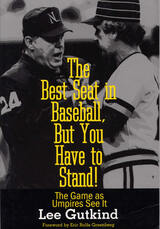 The Best Seat in Baseball, But You Have to Stand: The Game as Umpires See It
Lee Gutkind. Foreword by Eric Rolfe Greenburg
Southern Illinois University Press, 1999 To provide this unique—if controversial—look at major league baseball as umpires see it, Lee Gutkind spent the 1974 season traveling with the umpiring crew of Doug Harvey (crew chief), Nick Colosi, Harry Wendelstedt, and Art Williams, the first black umpire in the National League. The result is an honest, realistic, insightful study of the private and professional world of major league umpires: their prejudices and petty biases, their unbending pride in their performance, their inside perspectives on the game, and their bitter criticism of the abuse often directed at their profession and at their conduct. As relevant today as it was in 1974, this illustrated chronicle shows how little has changed in the lives and duties of umpires in the last quarter century. Guided by his passionate love for the game as he wrote The Best Seat in Baseball, But You Have to Stand!, Gutkind attempted to present the umpires in a positive but realistic light: "I portrayed them as real people, honorable, hard-working and dedicated, but with warts and flaws like the rest of us. But they didn't want to be compared with real people; they wanted to be umpires—on a plateau above most everyone else." Since the publication of this book in 1975, neither Harvey nor Wendelstedt have communicated with Gutkind, with Wendelstedt even denying that Gutkind traveled with the crew.
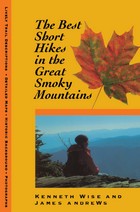 The Best Short Hikes in the Great Smoky Mountains: Great Smoky Mountains
Kenneth Wise
University of Tennessee Press, 1997 The Best Short Hikes in the Great Smoky Mountains
Kenneth Wise and James Andrews
Located astride the Tennessee–North Carolina border, the Great Smoky Mountains National Park contains more than one hundred trails that trace eight hundred miles of rugged terrain. This fact is certain to bewilder any newcomer who might be eager to explore the Park’s backcountry but is unsure where to start. This book, intended as a beginner’s guide to hiking the Smokies, offers lively, informative descriptions of twenty-two trails that can be completed in a day or less.
For anyone who has yet to discover the beauty of the Smokies, the highest North American mountains east of the Mississippi, the trails described here offer a splendid introduction. Scenic overlooks at Mount Le Conte, Clingmans Dome, Gregory Bald, and other peaks are included along these pathways, as are some of the well-known waterfalls of the Park, such as Laurel Falls, Rainbow Falls, and Ramsay Cascades. In addition to vital data about the length of the trail, its elevation gain, and “how to get there,” each trail description is packed with interesting facts and Smoky Mountain lore. Detailed maps are also included. In their introduction, the authors provide a brief overview of the park’s history as well as useful tips for novice hikers.
The Authors: Kenneth Wise, an administrator at the University of Tennessee Library, Knoxville, has hiked in the Great Smoky Mountains National Park for more than twenty years. He is the author of Hiking Trails of the Great Smoky Mountains: A Comprehensive Guide.
James Andrews,a partner in the firm of Andrews, Hudson & Wall, P.C., has hiked the Park trails for more than a decade. He is the coauthor, with Wise, of The Best Overnight Hikes in the Great Smoky Mountains.
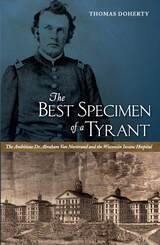 The Best Specimen of a Tyrant: The Ambitious Dr. Abraham Van Norstrand and the Wisconsin Insane Hospital
Thomas Doherty
University of Iowa Press, 2012 In 1847, young Dr. Abraham Van Norstrand left Vermont to seek his fortune in the West, but in Wisconsin his business ventures failed, and a medical practice among hard-up settlers added little to his pocketbook. During the Civil War he organized and ran one of the army’s biggest hospitals but resigned when dark rumors surfaced about him. Back home, he accepted with mixed feelings the one prestigious position available to him: superintendent of the state’s first hospital for the insane. Van Norstrand was a newcomer to the so-called “Hospital Movement,” perhaps the boldest public policy innovation of its time, one whose leaders believed that they could achieve what had long been regarded as impossible, to cure the insane. He was a driven man with scant sympathy for those he considered misfits or malingerers. Even so, early observers were impressed with his energetic, take-charge manner at the hospital. Here at last was a man who stood firm where his predecessors had weakened and foundered. But others began to detect a different side to this tireless ruler and adroit politician. It was said that he assaulted patients and served them tainted food purchased with state money from his own grocery store. Was he exploiting the weak for personal gain or making the best of a thankless situation? Out of this fog of suspicion emerged a moral crusader and—to all appearances—pristine do-gooder named Samuel Hastings, a man whose righteous fury, once aroused, proved equal to Van Norstrand’s own. The story of Abraham Van Norstrand’s rise and fall is also the story of the clash between the great expectations and hard choices that have bedeviled public mental hospitals from the beginning.
 The Best Station of Them All: The Savannah Squadron, 1861-1865
Maurice Melton
University of Alabama Press, 2012 The Confederate Navy’s Savannah Squadron, its relationship with the people of Savannah, Georgia, and its role in the city’s economy In this well-written and extensively researched narrative, Maurice Melton charts the history of the unit, the sailors (both white and black), the officers, their families, and their activities aboard ship and in port. The Savannah Squadron worked, patrolled, and fought in the rivers and sounds along the Georgia coast. Though they saw little activity at sea, the unit did engage in naval assault, boarding, capture, and ironclad combat. The sailors finished the war as an infantry unit in Robert E. Lee’s Army of Northern Virginia, fighting at Sayler’s Creek on the road to Appomattox. Melton concentrates on navy life and the squadron’s place in wartime Savannah. The book reveals who the Confederate sailors were and what their material, social, and working lives were like. The Best Station of Them All is an essential piece of historical literature for anyone interested in the Civil War, its navies, or Savannah.
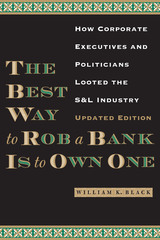 The Best Way to Rob a Bank is to Own One: How Corporate Executives and Politicians Looted the S&L Industry
By William K. Black
University of Texas Press, 2013 In this expert insider’s account of the savings and loan debacle of the 1980s, William Black lays bare the strategies that corrupt CEOs and CFOs—in collusion with those who have regulatory oversight of their industries—use to defraud companies for their personal gain. Recounting the investigations he conducted as Director of Litigation for the Federal Home Loan Bank Board, Black fully reveals how Charles Keating and hundreds of other S&L owners took advantage of a weak regulatory environment to perpetrate accounting fraud on a massive scale. In the new afterword, he also authoritatively links the S&L crash to the business failures of 2008 and beyond, showing how CEOs then and now are using the same tactics to defeat regulatory restraints and commit the same types of destructive fraud. Black uses the latest advances in criminology and economics to develop a theory of why “control fraud”—looting a company for personal profit—tends to occur in waves that make financial markets deeply inefficient. He also explains how to prevent such waves. Throughout the book, Black drives home the larger point that control fraud is a major, ongoing threat in business that requires active, independent regulators to contain it. His book is a wake-up call for everyone who believes that market forces alone will keep companies and their owners honest.
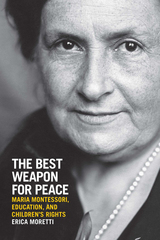 The Best Weapon for Peace: Maria Montessori, Education, and Children's Rights
Erica Moretti
University of Wisconsin Press, 2022 The Italian educator and physician Maria Montessori (1870–1952) is best known for the teaching method that bears her name. She was also a lifelong pacifist, although historians tend to consider her writings on this topic as secondary to her pedagogy. In The Best Weapon for Peace, Erica Moretti reframes Montessori’s pacifism as the foundation for her educational activism, emphasizing her vision of the classroom as a gateway to reshaping society. Montessori education offers a child-centered learning environment that cultivates students’ development as peaceful, curious, and resilient adults opposed to war and invested in societal reform.
Using newly discovered primary sources, Moretti examines Montessori’s lifelong pacifist work, including her ultimately unsuccessful push for the creation of the White Cross, a humanitarian organization for war-affected children. Moretti shows that Montessori’s educational theories and practices would come to define chilren’s rights once adopted by influential international organizations, including the United Nations. She uncovers the significance of Montessori’s evolving philosophy of peace and early childhood education within broader conversations about internationalism and humanitarianism.
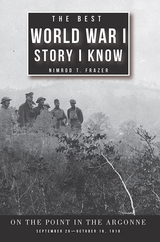 The Best World War I Story I Know: On the Point in the Argonne, September 26–October 16, 1918
Nimrod T. Frazer
University of Alabama Press, 2018 An astonishing account of fortitude and bravery in World War I
The Best World War I Story I Know: On the Point in the Argonne is the breath-taking story of three US Army divisions tasked with capturing the Côte de Châtillon during the Meuse-Argonne offensive in autumn 1918. Readers will first follow in the footsteps of Missouri-Kansas Guard troops who were repulsed in the opening days of the battle; their courage in the face of heavy fire was not enough to overcome poor leadership.
They were replaced by the 1st Division, the “best of the Regular Army.” This fine unit became physically and mentally exhausted after suffering horrendous casualties. Unable to fight on, “The Big Red One” was exchanged at the base of Côte de Châtillon, with the 42nd, the Rainbow Division. It too struggled to gain ground on the heavily-contested hill until General Douglas MacArthur’s determined 84th Brigade of “Alabama cotton pickers and Iowa corn growers” forced their way past the Germans. The Côte was finally in American hands and the war all but over.
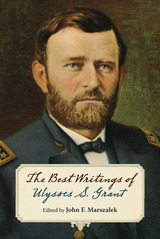 The Best Writings of Ulysses S. Grant
Edited by John F. Marszalek
Southern Illinois University Press, 2015 Famous for his military acumen and for his part in saving the Union during the American Civil War, Ulysses S. Grant also remains known for his two-volume memoirs, considered among the greatest military memoirs ever written. Grant’s other writings, however, have not received the same acclaim, even though they show the same literary skill. Originally published in the thirty-two volumes of The Papers of Ulysses S. Grant, the letters and speeches are the major source of information about Grant’s life and era and have played a key role in elevating his reputation to that of the leading general of the Civil War and the first of the modern presidents. In this collection, editor John F. Marszalek presents excerpts from Grant’s most insightful and skillfully composed writings and provides perspective through introductory comments tying each piece to the next. The result is a fascinating overview of Grant’s life and career. In sixteen chronological chapters, selections from Grant’s letters and other writings reveal his personal thoughts on the major events of his momentous life, including the start of the Civil War, the capture of Vicksburg, Lincoln’s reelection, Lee’s surrender, his terms as president, the Panic of 1873, and his bouts of mouth and throat cancer. Throughout, Grant’s prose reveals clearly the power of his words and his ability to present them well. Although some historians have maligned his presidency as one of the most corrupt periods in American history, these writings reinforce Grant’s greatness as a general, demonstrate the importance of his presidency, and show him to be one of the driving forces of the nineteenth century. With this compendium, Marszalek not only celebrates the literary talent of one of America’s greatest military figures but also vindicates an individual who, for so long, has been unfairly denigrated. A concise reference for students of American history and Civil War enthusiasts as well as a valuable introduction for those who are new to Grant’s writings, this volume provides intriguing insight into one of the nineteenth century’s most important Americans.
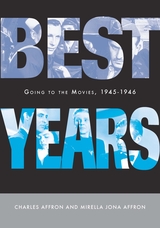 Best Years: Going to the Movies, 1945-1946
Charles Affron and Mirella Jona Affron
Rutgers University Press, 2009 Americans flocked to the movies in 1945 and 1946ùthe center point of the three-decade heyday of the studio system's sound era. Why? Best Years is a panoramic study, shining light on this critical juncture in American historyand the history of American cinemaùthe end of World War II (1945) and a year of unprecedented success in Hollywood's "Golden Age" (1946). This unique time, the last year of war and the first full year of peace, provides a rich blend of cinema genres and typesùfrom the battlefront to the home front, the peace film to the woman's film, psychological drama, and the period's provocative new style, film noir. Best Years focuses on films that were famous, infamous, forgotten, and unforgettable. Big budget A-films, road shows, and familiar series share the spotlight. From Bergman and Grant in Notorious to Abbott and Costello in Lost in a Harem, Charles Affron and Mirella Jona Affron examine why the bond between screen and viewer was perhaps never tighter. Paying special attention to the movie-going public in key cities--Atlanta, New York, Boston, Honolulu, and Chicago--this ambitious work takes us on a cinematic journey to recapture a magical time.
 The Best-Kept Secret: Women Corporate Lobbyists, Policy, and Power in the United States
Benoit, Denise
Rutgers University Press, 2007 From lobbyists such as Jack Abramoff, to corporate executives, like Enron's Kenneth Lay and Jeffrey Skilling, recent scandals dealing with politics and government have focused only on men at the top. But do these high-profile men accurately represent the gendered make up of corporate-government in the United States?
In this first in-depth look at the changing face of corporate lobbying, Denise Benoit shows how women who have historically worked mostly in policy areas relating to "women's issues" such as welfare, family, and health have become increasingly influential as corporate lobbyists, specializing in what used to be considered "masculine" policy, such as taxes and defense. Benoit finds that this new crop of female lobbyists mobilize both masculinity and femininity in ways that create and maintain trusting, open, and strong relations with those in government, and at the same time help corporations to save and earn billions of dollars.
While the media focuses on the dubious behaviors of men at the top of business and government, this book shows that female corporate lobbyists are indeed one of the best kept secrets in Washington.
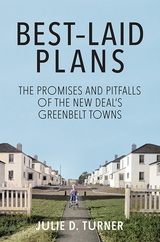 Best-Laid Plans: The Promises and Pitfalls of the New Deal Greenbelt Towns
Julie D. Turner
University of Minnesota Press, 2022 A history of the New Deal program intended to improve the living conditions of America’s underclass.
In 1935, under the direction of the Resettlement Administration, the United States government embarked on a New Deal program to construct new suburban towns for the working class. Teams of architects, engineers, and city planners, along with thousands of workers, brought three such communities to life: Greenbelt, Maryland; Greendale, Wisconsin; and Greenhills, Ohio. President Franklin Roosevelt saw this as a way to create jobs. Resettlement Administration head Rexford Tugwell longed to improve the living conditions of the nation’s underclass.
In Best-Laid Plans, Julie Turner identifies where the Greenbelt Towns succeeded and where they failed. The program suffered under the burden of too many competing goals: maximum job creation at minimal cost, exquisite town planning that would provide modest residences for low-income families, progressive innovation that would serve to honor and reinforce traditional American values. Yet the Greenbelt program succeeded in one respect—providing new homes in well-planned communities that continue to welcome residents.
Town planning and suburbanization did not follow the blueprint of the Greenbelt model and instead took a turn toward the suburban sprawl we know today. The Greenbelt towns may represent an unrealistic dream, but they show an imagined way of American life that continues to appeal and hints at what might have been possible.
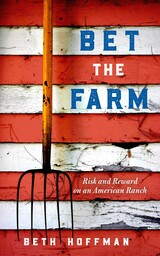 Bet the Farm: The Dollars and Sense of Growing Food in America
Beth Hoffman
Island Press, 2021 “Eloquent and detailed…precise and well-thought-out...Read her book — and listen.” — Jane Smiley, The Washington Post.
Beth Hoffman was living the good life: she had a successful career as a journalist and professor, a comfortable home in San Francisco, and plenty of close friends and family. Yet in her late 40s, she and her husband decided to leave the big city and move to his family ranch in Iowa—all for the dream of becoming a farmer, to put into practice everything she had learned over decades of reporting on food and agriculture. There was just one problem: money.
Half of America's two million farms made less than $300 in 2019. Between rising land costs, ever-more expensive equipment, the growing uncertainty of the climate, and few options for health care, farming today is a risky business. For many, simply staying afloat is a constant struggle.
Bet the Farm chronicles this struggle through Beth’s eyes as a beginning farmer. She must contend with her father-in-law, who is reluctant to hand over control of the land. Growing oats is good for the environment but ends up being very bad for the wallet. And finding somewhere, in the midst of COVID-19, to slaughter grass-finished beef is a nightmare. The couple also must balance the books, hoping that farming isn’t a romantic fantasy that takes every cent of their savings.
Even with a decent nest egg and access to land, making ends meet at times seems impossible. And Beth knows full well that she is among the privileged. If Beth can’t make it, how can farmers who confront racism, lack access to land, or don’t have other jobs to fall back on? Bet the Farm is a first-hand account of the perils of farming today and a personal exploration of more just and sustainable ways of producing food.
 Bêtes Noires: Sorcery as History in the Haitian-Dominican Borderlands
Lauren Derby
Duke University Press, 2025 In Bêtes Noires, Lauren Derby explores storytelling traditions among the people of Haiti and the Dominican Republic, focusing on shape-shifting spirit demons called baka/bacá. Drawing on interviews with and life stories of residents in a central Haitian-Dominican frontier town, Derby contends that bacás—hot spirits from the sorcery side of vodou/vodú that present as animals and generate wealth for their owners—are a manifestation of what Dominicans call fukú de Colón, the curse of Columbus. The dogs, pigs, cattle, and horses that Columbus brought with him are the only types of animals that bacás become. As instruments of Indigenous dispossession, these animals and their spirit demons convey a history of trauma and racialization in Dominican popular culture. In the context of slavery and beyond, bacás keep alive the promise of freedom, since shape-shifting has long enabled fugitivity. As Derby demonstrates, bacás represent a complex history of race, religion, repression, and resistance.
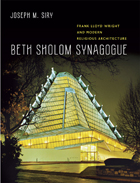 Beth Sholom Synagogue: Frank Lloyd Wright and Modern Religious Architecture
Joseph M. Siry
University of Chicago Press, 2011 In a suburb just north of Philadelphia stands Beth Sholom Synagogue, Frank Lloyd Wright’s only synagogue and among his finest religious buildings. Designated a National Historic Landmark in 2007, Beth Sholom was one of Wright’s last completed projects, and for years it has been considered one of his greatest masterpieces. But its full story has never been told. Beth Sholom Synagogue provides the first in-depth look at the synagogue’s conception and realization in relation to Wright’s other religious architecture. Beginning with his early career at Adler and Sullivan’s architectural firm in Chicago and his design for Unity Temple and ending with the larger works completed just before or soon after his death, Joseph M. Siry skillfully depicts Wright’s exploration of geometric forms and structural techniques in creating architecture for worshipping communities. Siry also examines Wright’s engagement with his clients, whose priorities stemmed from their denominational identity, and the effect this had on his designs—his client for Beth Sholom, Rabbi Mortimer Cohen, worked with Wright to anchor the building in the traditions of Judaism even as it symbolized the faith’s continuing life in postwar America. With each of his religious projects, Wright considered questions of social history and cultural identity as he advanced his program for an expressive, modern American architecture. His search to combine these agendas culminated in Beth Sholom, where the interplay of light, form, and space create a stunning and inspiring place of worship. Filled with over three hundred illustrations, this remarkable book takes us deep inside the synagogue’s design, construction, and reception to bring us an illuminating portrait of the crowning achievement of this important aspect of Wright’s career.
Bethany: A Play
Laura Marks
Northwestern University Press, 2014 Winner, 2014 PEN/Laura Pels International Foundation for Theater Emerging American Playwright Award At the height of the foreclosure crisis, single mother Crystal loses more than her house. She struggles to stay positive, though—with plenty of help from a roommate with conspiracy theories, a motivational speaker with a secret, and her colleagues at the local Saturn dealership. But optimism is no match for a bad economy, and before long Crystal’s desperate quest to regain what she’s lost turns into the fight of her life. This darkly comic thriller explores just how far we’ll go to get back what’s ours.
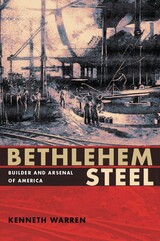 Bethlehem Steel: Builder and Arsenal of America
Kenneth Warren
University of Pittsburgh Press, 2010 In the late 19th century, rails from Bethlehem Steel helped build the United States into the world's foremost economy. During the 1890s, Bethlehem became America's leading supplier of heavy armaments, and by 1914, it had pioneered new methods of structural steel manufacture that transformed urban skylines. Demand for its war materials during World War I provided the finance for Bethlehem to become the world's second-largest steel maker. As late as 1974, the company achieved record earnings of $342 million. But in the 1980s and 1990s, through wildly fluctuating times, losses outweighed gains, and Bethlehem struggled to downsize and reinvest in newer technologies. By 2001, in financial collapse, it reluctantly filed for Chapter 11 bankruptcy protection. Two years later, International Steel Group acquired the company for $1.5 billion.
In Bethlehem Steel, Kenneth Warren presents an original and compelling history of a leading American company, examining the numerous factors contributing to the growth of this titan and those that eventually felled it—along with many of its competitors in the U.S. steel industry.
Warren considers the investment failures, indecision and slowness to abandon or restructure outdated “integrated” plants plaguing what had become an insular, inward-looking management group. Meanwhile competition increased from more economical “mini mills” at home and from new, technologically superior plants overseas, which drove world prices down, causing huge flows of imported steel into the United States.
Bethlehem Steel provides a fascinating case study in the transformation of a major industry from one of American dominance to one where America struggled to survive.
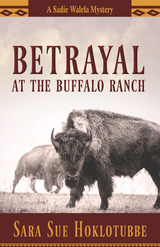 Betrayal at the Buffalo Ranch
Sara Sue Hoklotubbe
University of Arizona Press, 2018 When Sadie Walela learns that her new neighbor in Cherokee Country, Angus Clyborn’s Buffalo Ranch, offers rich customers a chance to kill buffalo for fun, she is horrified. No good can surely come from this. It doesn’t, and murder soon follows.
Even though Deputy Sheriff Lance Smith, Sadie’s love interest, suspects a link to the Buffalo Ranch, he can find little evidence to make an arrest. And when a rare white buffalo calf is born on the ranch and immediately disappears, Sadie’s instincts tell her something is wrong—and she sets out to prove it. Her suspicions—and fears of more violence—escalate when a former schoolmate returns to Oklahoma to visit her ailing father and finds employment at the ranch. Will she be the next victim?
Drawn deeper and deeper into danger, Sadie uncovers an unparalleled web of greed and corruption. It will take all of her investigative skill to set things straight—assuming she and her wolfdog can stay alive long enough to succeed.
 The Betrayal of Dissent: Beyond Orwell, Hitchens and the New American Century
Scott Lucas
Pluto Press, 2004 Since his death in 1950, George Orwell has been canonised as England's foremost
political writer, and the standard-bearer of honesty and decency for the honourable 'Left'. In this controversial polemic, Scott Lucas argues that the exaltation of Orwell, far from upholding dissent against the State, has sought to quash such opposition. Indeed, Orwell has become the icon of those who, in the pose of the contrarian, try to silence public opposition to US and U K foreign policy in the 'War on Terror'.
Lucas's lively and readable critique of public intellectuals including Christopher Hitchens, Michael Walzer, David Aaronovitch, and Johann Hari – who have all invoked Orwellian honesty and decency to shut down dissent – will appeal to anyone disillusioned with the wars in Afghanistan and Iraq.
Lucas contends that these leading journalists and commentators have used Orwell to justify their own political transition from radicals to upholders of the establishment. All of them play influential roles in supporting the UK and US governments' charge that opponents of war -- and those who question the motives behind American foreign policy and its implementation -- should be condemned as 'appeasers of mass murder'.
This controversial book shows how Orwell has been used since 9/11 to justify, in the guise of independent thought, the suppression of dissent. We must rescue ourselves from Orwell and from those who take on his guise so, as Lucas puts it, our ‘silencing is… vital to a "manufacture of consent" for the wars which are supposedly being fought in our name and for our good’.
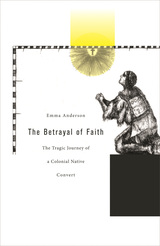 The Betrayal of Faith: The Tragic Journey of a Colonial Native Convert
Emma Anderson
Harvard University Press, 2007 Emma Anderson uses one man's compelling story to explore the collision of Christianity with traditional Native religion in colonial North America.
Pierre-Anthoine Pastedechouan was born into a nomadic indigenous community of Innu living along the St. Lawrence River in present-day Quebec. At age eleven, he was sent to France by Catholic missionaries to be educated for five years, and then brought back to help Christianize his people.
Pastedechouan's youthful encounter with French Catholicism engendered in him a fatal religious ambivalence. Robbed of both his traditional religious identity and critical survival skills, he had difficulty winning the acceptance of his community upon his return. At the same time, his attempts to prove himself to his people led the Jesuits to regard him with increasing suspicion. Suspended between two worlds, Pastedechouan ultimately became estranged--with tragic results--from both his native community and his missionary mentors.
An engaging narrative of cultural negotiation and religious coercion, Betrayal of Faith documents the multiple betrayals of identity and culture caused by one young man's experiences with an inflexible French Catholicism. Pastedechouan's story illuminates key struggles to retain and impose religious identity on both sides of the seventeenth-century Atlantic, even as it has a startling relevance to the contemporary encounter between native and non-native peoples.
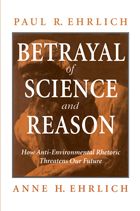 Betrayal of Science and Reason: How Anti-Environmental Rhetoric Threatens Our Future
Paul R. Ehrlich and Anne H. Ehrlich
Island Press, 1996 Despite widespread public support for environmental protection, a backlash against environmental policies is developing. Fueled by outright distortions of fact and disregard for the methodology of science, this backlash appears as an outpouring of seemingly authoritative opinions by so-called experts in books, articles, and appearances on television and radio that greatly distort what is or is not known by environmental scientists. Through relentless repetition, the flood of anti-environmental sentiment has acquired an unfortunate aura of credibility, and is now threatening to undermine thirty years of progress in defining, understanding, and seeking solutions to global environmental problems. In this hard-hitting and timely book, world-renowned scientists and writers Paul R. Ehrlich and Anne H. Ehrlich speak out against what they call the "brownlash." Brownlash rhetoric, created by public relations spokespersons and a few dissident scientists, is a deliberate misstatement of scientific findings designed to support an anti-environmental world view and political agenda. As such, it is deeply disturbing to environmental scientists across the country. The agenda of brownlash proponents is rarely revealed, and the confusion and distraction its rhetoric creates among policymakers and the public prolong an already difficult search for realistic and equitable solutions to global environmental problems. In Betrayal of Science and Reason, the Ehrlichs explain clearly and with scientific objectivity the empirical findings behind environmental issues including population growth, desertification, food production, global warming, ozone depletion, acid rain, and biodiversity loss. They systematically debunk revisionist "truths" such as: - population growth does not cause environmental damage, and may even be beneficial
- humanity is on the verge of abolishing hunger; food scarcity is a local or regional problem and is not indicative of overpopulation
- there is no extinction crisis
- natural resources are superabundant, if not infinite
- global warming and acid rain are not serious threats to humanity
- stratospheric ozone depletion is a hoax
- risks posed by toxic substances are vastly exaggerated
The Ehrlichs counter the erroneous information and misrepresentation put forth by the brownlash, presenting accurate scientific information about current environmental threats that can be used to evaluate critically and respond to the commentary of the brownlash. They include important background material on how science works and provide extensive references to pertinent scientific literature. In addition, they discuss how scientists can speak out on matters of societal urgency yet retain scientific integrity and the support of the scientific community. Betrayal of Science and Reason is an eye-opening look at current environmental problems and the fundamental importance of the scientific process in solving them. It presents unique insight into the sources and implications of anti-environmental rhetoric, and provides readers with a valuable means of understanding and refuting the feel-good fables that constitute the brownlash.
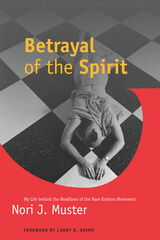 Betrayal of the Spirit: My Life behind the Headlines of the Hare Krishna Movement
Nori J. Muster
University of Illinois Press, 1996 Combining behind-the-scenes coverage of an often besieged religious group with a personal account of one woman's struggle to find meaning in it, Betrayal of the Spirit takes readers to the center of life in the Hare Krishna movement. Nori J. Muster joined the International Society of Krishna Consciousness (ISKCON)--the Hare Krishnas--in 1978, shortly after the death of the movement's spiritual master, and worked for ten years as a public relations secretary and editor of the organization's newspaper, the ISKCON World Review. In this candid and critical account, Muster follows the inner workings of the movement and the Hare Krishnas' progressive decline. Combining personal reminiscences, published articles, and internal documents, Betrayal of the Spirit details the scandals that beset the Krishnas--drug dealing, weapons stockpiling, deceptive fundraising, child abuse, and murder within ISKCON–as well as the dynamics of schisms that forced some 95 percent of the group's original members to leave. In the midst of this institutional disarray, Muster continued her personal search for truth and religious meaning as an ISKCON member until, disillusioned at last with the movement's internal divisions, she quit her job and left the organization. In a new preface to the paperback edition, Muster discusses the personal circumstances that led her to ISKCON and kept her there as the movement's image worsened. She also talks about "the darkest secret"–child abuse in the ISKCON parochial schools--that was covered up by the public relations office where she worked.
Betrayal Trauma: The Logic of Forgetting Childhood Abuse
Jennifer J. Freyd
Harvard University Press, 1996 This book lays bare the logic of forgotten abuse. Psychologist Jennifer Freyd's breakthrough theory explaining this phenomenon shows how psychogenic amnesia not only happens but, if the abuse occurred at the hands of a parent or caregiver, is often necessary for survival. Freyd's book will give embattled professionals, beleaguered abuse survivors, and the confused public a new, clear understanding of the lifelong effects and treatment of child abuse.
 Betrayal U: The Politics of Belonging in Higher Education
Edited by Rebecca G. Martínez and Monica J. Casper
University of Arizona Press, 2025 Higher education is in trouble, and not only due to a decline of public trust. As a microcosm of our broader culture, universities are inequitable and often harmful, especially for marginalized people. This is despite the democratic promise of higher education as a path for learning and social mobility. Women, people of color, First Gen, disabled, LGBTQ+, and other minoritized groups are disproportionately harmed in educational institutions that are hierarchical and reproduce inequality. Efforts to foster belonging for faculty, staff, and students may be highly effective but are under attack.
Betrayal U intervenes in this context with a diverse, rich collection of essays, art, poetry, and research that explores these inequities through the lens of institutional betrayal, theorized by psychologist Jennifer Freyd. Edited by Rebecca G. Martínez and Monica J. Casper, this collection brings together thirty-six contributors who share personal experiences covering a range of topics in higher education. The work spans five thematic sections that examine the complexities of belonging and exclusion in academic settings.
The contributors share their lived experiences of academic life from diverse vantage points, showing the ways minoritized groups are made to feel unwelcome, further marginalized, and often positioned as the problem. Exhibiting courage, compassion, and a commitment to better futures, the voices in this collection offer both a searing indictment of higher education and pathways to alternative practices and structures. They shine a spotlight on academia today, including the promise of inclusion and the perils of exclusion.
Contributors
Celeste Atkins
Jasmine Banks
Krista L. Benson
Jessica Bishop-Royse
Samit Dipon Bordoloi
Monica J. Casper
Aparajita De
Kathy Diehl
Taylor Marie Doherty
Reshmi Dutt-Ballerstadt
Alma Flores
Alanna Gillis
C. Goldberg
Jennifer M. Gómez
Kristina Gupta
Jasmine L. Harris
Susan Hillock
Doreen Hsu
Jennifer Lai
Amy Andrea Martinez
Rebecca G. Martínez
Shantel Martinez
Sara A. Mata
Rachael McCollum
Wang Ping
Emily Rosser
Angélica Ruvalcaba
Brandy L. Simula
Rashna Batliwala Singh
Cierra Raine Sorin
Connor Spencer
Chantelle Spicer
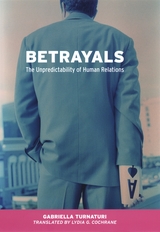 Betrayals: The Unpredictability of Human Relations
Gabriella Turnaturi
University of Chicago Press, 2007 From Iago to Fredo, Judas to General Hospital, acts of betrayal fascinate us. Eventually we all encounter this universal experience of human interaction, but despite its ubiquity, being betrayed can turn our lives upside down and leave us feeling suddenly frail and alone. Betrayal only arises out of sharing something of yourself with another, and its impact speaks to the great tragedy of human relations: at bottom, other people are unknowable.
While most attempts to study betrayal only consider its moral or psychological dimensions, Gabriella Turnaturi here examines betrayal as an act embedded in social relationships whose meanings change over time. For example, adultery is one of the most recognizable forms of betrayal, but a wide gulf exists between its role in Madame Bovary and in The Ice Storm. Therefore, Turnaturi contends, in order to examine the many meanings of betrayal we need to understand its context in a specific time and place. Born from the unpredictable possibilities of human interaction, betrayal emerges as a sociological event in this thought-provoking meditation on the stab in the back.
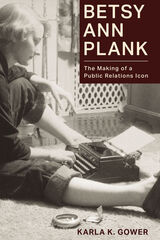 Betsy Ann Plank: The Making of a Public Relations Icon
Karla K. Gower
University of Missouri Press, 2022 In 1973, Betsy Ann Plank became the first woman to chair the Public Relations Society of America in its twenty-five-year history. It was a tumultuous time to assume the national association’s leadership. Civil society seemed to be fraying at the edges, and trust in political institutions and corporations had plummeted in the aftermath of Watergate. Nevertheless, Plank, in her fearless style, took up the challenge head-on. From the start and throughout the span of her sixty-three-year career in public relations, she managed to overcome the very real barriers she faced due to gender-based discrimination in what was a male-dominated industry. As a PR practitioner, Plank served as executive vice president of Daniel J. Edelman, Inc., director of PR planning at AT&T, and assistant vice president of external affairs at Illinois Bell. Beyond her service in the professional realm, Plank grew her legacy by taking the time to mentor countless PR professionals, educators, and students. She saw this dissemination of knowledge as her greatest gift to the field of public relations. In this highly readable biography, Karla Gower explores Plank’s personal life and career, tracing her evolution from a low-level job in advertising through her contributions to the rise of the rapidly changing PR industry in the 1960s and the evolution of her personal devotion to the enhancement of public relations education.
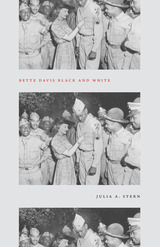 Bette Davis Black and White
Julia A. Stern
University of Chicago Press, 2021 Bette Davis’s career becomes a vehicle for a deep examination of American race relations.
Bette Davis was not only one of Hollywood’s brightest stars, but also one of its most outspoken advocates on matters of race. In Bette Davis Black and White, Julia A. Stern explores this largely untold facet of Davis’s brilliant career.
Bette Davis Black and White analyzes four of Davis’s best-known pictures—Jezebel (1938), The Little Foxes (1941), In This Our Life (1942), and What Ever Happened to Baby Jane? (1962)—against the history of American race relations. Stern also weaves in memories of her own experiences as a young viewer, coming into racial consciousness watching Davis’s films on television in an all-white suburb of Chicago.
Davis’s egalitarian politics and unique collaborations with her Black costars offer Stern a window into midcentury American racial fantasy and the efforts of Black performers to disrupt it. This book incorporates testimony from Davis’s Black contemporaries, including James Baldwin and C. L. R. James, as well as the African American fans who penned letters to Warner Brothers praising Davis’s work. A unique combination of history, star study, and memoir, Bette Davis Black and White allows us to contemplate cross-racial spectatorship in new ways.
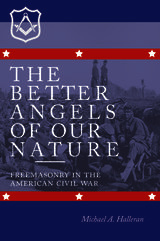 The Better Angels of Our Nature: Freemasonry in the American Civil War
Michael A. Halleran
University of Alabama Press, 2010 The first in-depth study of the Freemasons during the Civil War One of the enduring yet little examined themes in Civil War lore is the widespread belief that on the field of battle and afterward, members of Masonic lodges would give aid and comfort to wounded or captured enemy Masons, often at great personal sacrifice and danger. This work is a deeply researched examination of the recorded, practical effects of Freemasonry among Civil War participants on both sides. From first-person accounts culled from regimental histories, diaries, and letters, Michael A. Halleran has constructed an overview of 19th-century American freemasonry in general and Masonry in the armies of both North and South in particular, and provided telling examples of how Masonic brotherhood worked in practice. Halleran details the response of the fraternity to the crisis of secession and war, and examines acts of assistance to enemies on the battlefield and in POW camps. The author examines carefully the major Masonic stories from the Civil War, in particular the myth that Confederate Lewis A. Armistead made the Masonic sign of distress as he lay dying at the high-water mark of Pickett’s charge at Gettysburg.
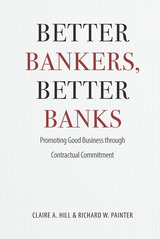 Better Bankers, Better Banks: Promoting Good Business through Contractual Commitment
Claire A. Hill and Richard W. Painter
University of Chicago Press, 2015 Taking financial risks is an essential part of what banks do, but there’s no clear sense of what constitutes responsible risk. Taking legal risks seems to have become part of what banks do as well. Since the financial crisis, Congress has passed copious amounts of legislation aimed at curbing banks’ risky behavior. Lawsuits against large banks have cost them billions. Yet bad behavior continues to plague the industry. Why isn’t there more change?
In Better Bankers, Better Banks, Claire A. Hill and Richard W. Painter look back at the history of banking and show how the current culture of bad behavior—dramatized by the corrupt, cocaine-snorting bankers of The Wolf of Wall Street—came to be. In the early 1980s, banks went from partnerships whose partners had personal liability to corporations whose managers had no such liability and could take risks with other people’s money. A major reason bankers remain resistant to change, Hill and Painter argue, is that while banks have been faced with large fines, penalties, and legal fees—which have exceeded one hundred billion dollars since the onset of the crisis—the banks (which really means the banks’shareholders) have paid them, not the bankers themselves. The problem also extends well beyond the pursuit of profit to the issue of how success is defined within the banking industry, where highly paid bankers clamor for status and clients may regard as inevitable bankers who prioritize their own self-interest. While many solutions have been proposed, Hill and Painter show that a successful transformation of banker behavior must begin with the bankers themselves. Bankers must be personally liable from their own assets for some portion of the bank’s losses from excessive risk-taking and illegal behavior. This would instill a culture that discourages such behavior and in turn influence the sorts of behavior society celebrates or condemns.
Despite many sensible proposals seeking to reign in excessive risk-taking, the continuing trajectory of scandals suggests that we’re far from ready to avert the next crisis. Better Bankers, Better Banks is a refreshing call for bankers to return to the idea that theirs is a noble profession.
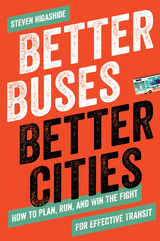 Better Buses, Better Cities: How to Plan, Run, and Win the Fight for Effective Transit
Steven Higashide
Island Press, 2019 "Better Buses, Better Cities is likely the best book ever written on improving bus service in the United States." — Randy Shaw, Beyond Chron
"The ultimate roadmap for how to make the bus great again in your city." — Spacing
"The definitive volume on how to make bus frequent, fast, reliable, welcoming, and respected..." — Streetsblog
Imagine a bus system that is fast, frequent, and reliable—what would that change about your city?
Buses can and should be the cornerstone of urban transportation. They offer affordable mobility and can connect citizens with every aspect of their lives. But in the US, they have long been an afterthought in budgeting and planning. With a compelling narrative and actionable steps, Better Buses, Better Cities inspires us to fix the bus.
Transit expert Steven Higashide shows us what a successful bus system looks like with real-world stories of reform—such as Houston redrawing its bus network overnight, Boston making room on its streets to put buses first, and Indianapolis winning better bus service on Election Day. Higashide shows how to marshal the public in support of better buses and how new technologies can keep buses on time and make complex transit systems understandable.
Higashide argues that better bus systems will create better cities for all citizens. The consequences of subpar transit service fall most heavily on vulnerable members of society. Transit systems should be planned to be inclusive and provide better service for all. These are difficult tasks that require institutional culture shifts; doing all of them requires resilient organizations and transformational leadership.
Better bus service is key to making our cities better for all citizens. Better Buses, Better Cities describes how decision-makers, philanthropists, activists, and public agency leaders can work together to make the bus a win in any city.
 Better Environmental Decisions: Strategies for Governments, Businesses, and Communities
Edited by Ken Sexton, Alfred A. Marcus, K. William Easter, and Timothy D. Burkhardt
Island Press, 1999 Better Environmental Decisions reponds to the need for improved environmental decision making by bringing together leading scholars and practitioners to provide a comprehensive interdisciplinary introduction to the subject. Each chapter describes an important aspect of environmental decision making; identifies key issues, problems, and barriers; and recommends ways to improve both the process and the final result.Topics examined include: Congressional decisions about regulatory reform environmental benefit/cost analysisvaluing environmental impacts comparing risks and setting priorities strategic environmental management corporate accounting for environmental and social factors corporate responses to rules and regulations community decisions about environmental riskscivic environmentalismcommunity partnerships with industry and governmentThroughout, contributors focus on providing tools to make better decisions, and on presenting solutions to real-world problems.Better Environmental Decisions describes and analyzes the key decision making criteria of each of the stakeholders involved -- governments, businesses, and communities -- and offers a compendium of techniques necessary for achieving success. It will be a landmark reference and resource for anyone involved with environmental decisionmaking, including legislators, regulators, business and environmental managers, environmental advocates, community activists, reporters, researchers, educators, and students.
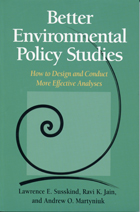 Better Environmental Policy Studies: How To Design And Conduct More Effective Analyses
Lawrence Susskind, Ravi K. Jain, and Andrew O. Martyniuk
Island Press, 2001 Environmental policy studies commissioned by government agencies or other stakeholders can play a vital role in environmental decisionmaking; they provide much-needed insight into policy options and specific recommendations for action. But the results of even the most rigorous studies are frequently misappropriated or misunderstood and are as likely to confuse an issue as they are to clarify it. Better Environmental Policy Studies explores this problem, as it considers the shortcomings of current approaches to policy studies and presents a pragmatic new approach to the subject. Reviewing five cases that are widely regarded as the most effective policy studies to have been conducted in the United States in the last few decades, the authors present a comprehensive guide to the concepts and methods required for conducting effective policy studies. The book: - describes and explains the conventional approach to policy studies and its shortcoming
- presents the history, impacts, and common elements of five successful policy studies
- offers an in-depth look at the different tools and techniques of policy analysis
- extends the concepts and principles of successful policy studies to their potential uses in the international arena
Better Environmental Policy Studies presents a practical, battle-tested approach to overcoming the obstacles to formulating effective environmental policy. It is an invaluable resource for students and faculty in departments of environmental studies, public policy and administration, and planning, as well as for professional policy analysts and others involved with making decisions and mediating disputes over environmental issues.
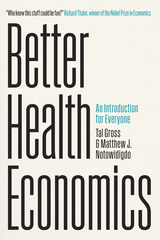 Better Health Economics: An Introduction for Everyone
Tal Gross and Matthew J. Notowidigdo
University of Chicago Press, 2024 An ideal entry point into health economics for everyone from aspiring economists to healthcare professionals. The economics of healthcare are messy. For most consumers, there’s little control over costs or services. Sometimes doctors are paid a lot; other times they aren’t paid at all. Insurance and drug companies are evil, except when they’re not. If economics is the study of market efficiency, how do we make sense of this? Better Health Economics is a warts-and-all introduction to a field that is more exceptions than rules. Economists Tal Gross and Matthew J. Notowidigdo offer readers an accessible primer on the field’s essential concepts, a review of the latest research, and a framework for thinking about this increasingly imperfect market. A love letter to a traditionally unlovable topic, Better Health Economics provides an ideal entry point for students in social science, business, public policy, and healthcare. It’s a reminder that healthcare may be a failed market—but it’s our failed market.
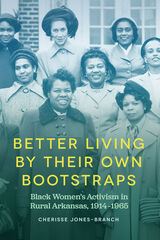 Better Living by Their Own Bootstraps: Black Women's Activism in Rural Arkansas, 1914-1965
Cherisse Jones-Branch
University of Arkansas Press, 2021 The first major study to consider Black women’s activism in rural Arkansas, Better Living by Their Own Bootstraps foregrounds activists’ quest to improve Black communities through language and foodways as well as politics and community organizing. In reexamining these efforts, Cherisse Jones-Branch lifts many important figures out of obscurity, positioning them squarely within Arkansas’s agrarian history. The Black women activists highlighted here include home demonstration agents employed by the Arkansas Agricultural Cooperative Extension Service and Jeanes Supervising Industrial Teachers, all of whom possessed an acute understanding of the difficulties that African Americans faced in rural spaces. Examining these activists through a historical lens, Jones-Branch reveals how educated, middle-class Black women worked with their less-educated rural sisters to create all-female spaces where they confronted economic, educational, public health, political, and theological concerns free from white regulation and interference. Centered on the period between 1914 and 1965, Better Living by Their Own Bootstraps brings long-overdue attention to an important chapter in Arkansas history, spotlighting a group of Black women activists who uplifted their communities while subverting the formidable structures of white supremacy.
 Better Living through Economics
John J. Siegfried
Harvard University Press, 2010 Better Living Through Economics consists of twelve case studies that demonstrate how economic research has improved economic and social conditions over the past half century by influencing public policy decisions.
Economists were obviously instrumental in revising the consumer price index and in devising auctions for allocating spectrum rights to cell phone providers in the 1990s. But perhaps more surprisingly, economists built the foundation for eliminating the military draft in favor of an all-volunteer army in 1973, for passing the Earned Income Tax Credit in 1975, for deregulating airlines in 1978, for adopting the welfare-to-work reforms during the Clinton administration, and for implementing the Pension Reform Act of 2006 that allowed employers to automatically enroll employees in a 401(k). Other important policy changes resulting from economists’ research include a new approach to monetary policy that resulted in moderated economic fluctuations (at least until 2008!), the reduction of trade impediments that allows countries to better exploit their natural advantages, a revision of antitrust policy to focus on those market characteristics that affect competition, an improved method of placing new physicians in hospital residencies that is more likely to keep married couples in the same city, and the adoption of tradable emissions rights which has improved our environment at minimum cost.
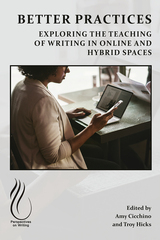 Better Practices: Exploring the Teaching of Writing in Online and Hybrid Spaces
Amy Cicchino
University Press of Colorado, 2024 Featuring a range of better practices related to online writing instruction (OWI) and assessment, this edited collection offers instructors and writing program administrators theoretically grounded approaches from teacher-scholars of online writing. First, the contributors highlight what instructors have been doing in online and hybrid writing classrooms, pointing to innovative theoretical trends in the scholarship of online writing studies and related position statements. Second, they provide access to instructional materials that can be immediately adapted for local contexts, offering a starting point for enacting better practices in OWI. Third, they offer writing program administrators useful perspectives on professional development and curriculum design. Better Practices expands the conversation about online learning and writing studies, providing an opening for educators to come together to explore what it means to teach writing in ways that involve online real-time, online anytime, and hybrid writing courses.
Better than Laughter
Mildred Boie
University of Minnesota Press, 1946
Better than Laughter was first published in 1946.This first collection of the poems of Mildred Louise Boie reflects the free and perceptive spirit of a young woman who followed a fascinating variety of paths. Upon release from the American Red Cross, she served in Italy, France, and Germany, assisting in civilian relief, and was awarded the Bronze Star Medal by the United States Army for meritorious service. She taught at Smith College and at the University of Minnesota and was an associate editor of the Atlantic Monthly.A number of these poems have been previously published in the Atlantic Monthly, American Mercury, Harper’s, Poet Lore, New York Times, Christian Register, Radcliffe Quarterly, and Vineyard Gazette.
 The Better to Eat You With: Fear in the Animal World
Joel Berger
University of Chicago Press, 2008 At dawn on a brutally cold January morning, Joel Berger crouched in the icy grandeur of the Teton Range. It had been three years since wolves were reintroduced to Yellowstone after a sixty-year absence, and members of a wolf pack were approaching a herd of elk. To Berger’s utter shock, the elk ignored the wolves as they went in for the kill. The brutal attack that followed—swift and bloody—led Berger to hypothesize that after only six decades, the elk had forgotten to fear a species that had survived by eating them for hundreds of millennia.
Berger’s fieldwork that frigid day raised important questions that would require years of travel and research to answer: Can naive animals avoid extinction when they encounter reintroduced carnivores? To what extent is fear culturally transmitted? And how can a better understanding of current predator-prey behavior help demystify past extinctions and inform future conservation?
The Better to Eat You With is the chronicle of Berger’s search for answers. From Yellowstone’s elk and wolves to rhinos living with African lions and moose coexisting with tigers and bears in Asia, Berger tracks cultures of fear in animals across continents and climates, engaging readers with a stimulating combination of natural history, personal experience, and conservation. Whether battling bureaucracy in the statehouse or fighting subzero wind chills in the field, Berger puts himself in the middle of the action. The Better to Eat You With invites readers to join him there. The thrilling tales he tells reveal a great deal not only about survival in the animal kingdom but also the process of doing science in foreboding conditions and hostile environments.
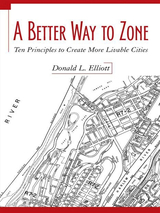 A Better Way to Zone: Ten Principles to Create More Livable Cities
Donald L. Elliott
Island Press, 2008 Nearly all large American cities rely on zoning to regulate land use. According to Donald L. Elliott, however, zoning often discourages the very development that bigger cities need and want. In fact, Elliott thinks that zoning has become so complex that it is often dysfunctional and in desperate need of an overhaul. A Better Way to Zone explains precisely what has gone wrong and how it can be fixed.
A Better Way to Zone explores the constitutional and legal framework of zoning, its evolution over the course of the twentieth century, the reasons behind major reform efforts of the past, and the adverse impacts of most current city zoning systems. To unravel what has gone wrong, Elliott identifies several assumptions behind early zoning that no longer hold true, four new land use drivers that have emerged since zoning began, and basic elements of good urban governance that are violated by prevailing forms of zoning. With insight and clarity, Elliott then identifies ten sound principles for change that would avoid these mistakes, produce more livable cities, and make zoning simpler to understand and use. He also proposes five practical steps to get started on the road to zoning reform.
While recent discussion of zoning has focused on how cities should look, A Better Way to Zone does not follow that trend. Although New Urbanist tools, form-based zoning, and the SmartCode are making headlines both within and outside the planning profession, Elliott believes that each has limitations as a general approach to big city zoning. While all three trends include innovations that the profession badly needs, they are sometimes misapplied to situations where they do not work well. In contrast, A Better Way to Zone provides a vision of the future of zoning that is not tied to a particular picture of how cities should look, but is instead based on how cities should operate.
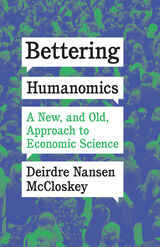 Bettering Humanomics: A New, and Old, Approach to Economic Science
Deirdre Nansen McCloskey
University of Chicago Press, 2021 Deirdre Nansen McCloskey's latest meticulous work examines how economics can become a more "human" science.
Economic historian Deirdre Nansen McCloskey has distinguished herself through her writing on the Great Enrichment and the betterment of the poor—not just materially but spiritually. In Bettering Humanomics she continues her intellectually playful yet rigorous analysis with a focus on humans rather than the institutions. Going against the grain of contemporary neo-institutional and behavioral economics which privilege observation over understanding, she asserts her vision of “humanomics,” which draws on the work of Bart Wilson, Vernon Smith, and most prominently, Adam Smith. She argues for an economics that uses a comprehensive understanding of human action beyond behaviorism.
McCloskey clearly articulates her points of contention with believers in “imperfections,” from Samuelson to Stiglitz, claiming that they have neglected scientific analysis in their haste to diagnose the ills of the system. In an engaging and erudite manner, she reaffirms the global successes of market-tested betterment and calls for empirical investigation that advances from material incentives to an awareness of the human within historical and ethical frameworks. Bettering Humanomics offers a critique of contemporary economics and a proposal for an economics as a better human science.
 Betting on Education: The Costs of Schooling for Cambodian Youth
Jennifer Estes
Rutgers University Press, 2025 Educational credentials are one of the most reliable tickets to a middle-class livelihood across the globe today. But as the costs of schooling rise, young people increasingly wonder whether their investment will pay off. Betting on Education: The Costs of Schooling for Cambodian Youth follows the experiences of rural secondary school students navigating Cambodia’s semi-privatized state education system. It reveals that when students are compelled to speculate about the value of their education, the “winners” of this gamble are the ones already most securely part of the middle class. The rest are left behind. In the process, the very meaning of education is transformed, as schooling becomes less about learning and more about its potential financial returns. By situating these stories in the wider global logics of neoliberal capitalism, Betting on Education challenges readers to consider what is at stake when young people must wager so much on the promise of schooling.
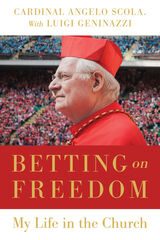 Betting on Freedom: My Life in the Church
Carinal Angelo Scola
Catholic University of America Press, 2021 In this wide-ranging conversation with the Italian journalist Luigi Geninazzi, Cardinal Angelo Scola discusses both the salient moments of his own life and the path and situation of the Church and society in Europe over the last half-century. The Cardinal recounts his life, speaking of the extraordinary gift of particular friendships he has had, starting with Luigi Giussani, founder of the ecclesial movement Communion and Liberation (CL), and moving on to discuss Hans Urs von Balthasar, Henri De Lubac, and Joseph Ratzinger.
A figure who bridges the past three pontificates, Scola discusses his relationships with St. John Paul II, by whom he was nominated a bishop at the relatively young age of forty nine; Benedict XVI, with whom he has had an intense intellectual friendship for decades; and Pope Francis, of whom he speaks with affection and hope.
At the center of this rich fresco of anecdotes and reflections stands a crucial question: what is the true path of the Church today? Between those who reduce Christianity to a mere civil religion and those who propose a purist return to the Gospel, the cardinal indicates a "third way" by betting on the freedom of the human person to recognize the supreme value of Christ. This is at the same time a bet on the active commitment of believers to contribute, starting from faith, to the birth of a new Europe, inevitably more diverse but no loss of its identity.
Betting on Ideas: Wars, Invention, Inflation
Reuven Brenner
University of Chicago Press, 1986 In this book, Reuven Brenner argues that people bet on new ideas and are more willing to take risks when they have been outdone by their fellows on local, national, or international scales. Such bets mean that people deviate from the beaten path and either gamble, commit crimes, or come up with new ideas in art, business, or politics, and ideas concerning war and peace in particular. By using evidence on gambling, crime, and creativity now and during the Industrial Revolution, by examining innovations in English and French inheritance laws and the emergence of welfare legislation, and by looking at what has happened before and after wars, Brenner reaches the conclusion that hope and fear, envy and vanity, sentiments provoked when being leapfrogged, make humans race.
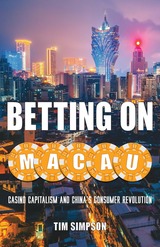 Betting on Macau: Casino Capitalism and China's Consumer Revolution
Tim Simpson
University of Minnesota Press, 2023 A comprehensive look into how Macau’s recent decades of gambling-related growth produced one of the wealthiest territories on the planet Betting on Macau delves into the radical transformation of what was formerly the last remaining European territory in Asia, returned to the People’s Republic of China in 1999 after nearly half a millennium of Portuguese rule. Examining the unprecedented scale of its development and its key role in China’s economic revolution, Tim Simpson follows Macau’s emergence from historical obscurity to become the most profitable casino gaming locale in the world. Identified as a UNESCO World Heritage Site and renowned for its unique blend of Chinese and Portuguese colonial-era architecture, contemporary Macau has metamorphosed into a surreal, hypermodern urban landscape augmented by massive casino megaresorts, including two of the world’s largest buildings. Simpson situates Macau’s origins as a strategic trading port and its ensuing history alongside the emergence of the global capitalist system, charting the massive influx of foreign investment, construction, and tourism in the past two decades that helped generate the territory’s enormous wealth. Presented through a cross section of postcolonial studies and social theory with extensive insight into the global gambling industry, Betting on Macau uncovers the various roots of the territory’s lucrative casino capitalism. In turn, its trenchant analysis provides a distinctive view into China’s broader project of urbanization, its post-Mao economic reforms, and the continued rise of its consumer culture.
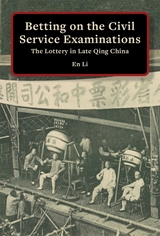 Betting on the Civil Service Examinations: The Lottery in Late Qing China
En Li
Harvard University Press, 2023 Weixing, or “surname guessing,” was a highly organized lottery practice in China wherein money was bet on the surnames of which candidates would pass the civil and military examinations. For centuries, up until 1905, the examination system was the primary means by which the Chinese state selected new officials from all over the empire and a way for commoners to climb the social ladder.
How was betting on the examinations possible and why did it matter? Opening with a weixing-related examination scandal in 1885, En Li reconstructs the inner mechanisms of weixing and other lottery games in the southern province of Guangdong. By placing the history of the lottery in a larger context, the author traces a series of institutional revenue innovations surrounding lottery regulation from the 1850s to the early 1900s, and depicts an expansive community created by the lottery with cultural and informational channels stretching among Guangdong, Southeast Asia, and North America. This book sheds light on a new reality that emerged during the final decades of China’s last imperial dynasty, with a nuanced understanding of competitions, strategic thinking by lottery players and public officials seeking to maximize revenues, and a global network of players.
Betting the Earth: How We Can Still Win the Biggest Gamble of all Time
John Charles Kunich
Parkhurst Brothers, Inc., 2010 "Betting the Earth explores the uneasy parallels between our contemporary environmental challenges and our national fascination with gambling. How much should we bet on preserving biodiversity? Should we bet more on responding to climate change? where should we place each bet: on federal or state laws, on acquiring public or private preserves, on preventing environmental harms or saving places of special environmental significance? Like it or not, we must make such choices every day, and Betting the Earth helps us to understand how we do so."
Professor John Copeland Nagle, John N. Matthews Chair in Law, University of Notre Dame Law School
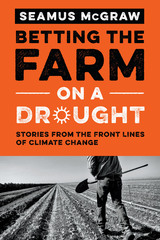 Betting the Farm on a Drought: Stories from the Front Lines of Climate Change
By Seamus McGraw
University of Texas Press, 2015 Climate change has become one of the most polarizing issues of our time. Extremists on the left regularly issue hyperbolic jeremiads about the impending destruction of the environment, while extremists on the right counter with crass, tortured denials. But out in the vast middle are ordinary people dealing with stronger storms and more intense droughts than they’ve ever known. This middle ground is the focus of Betting the Farm on a Drought, a lively, thought-provoking book that lays out the whole story of climate change—the science, the math, and most importantly, the human stories of people fighting both the climate and their own deeply held beliefs to find creative solutions to a host of environmental challenges. Seamus McGraw takes us on a trip along America’s culturally fractured back roads and listens to farmers and ranchers and fishermen, many of them people who are not ideologically, politically, or in some cases even religiously inclined to believe in man-made global climate change. He shows us how they are already being affected and the risks they are already taking on a personal level to deal with extreme weather and its very real consequences for their livelihoods. McGraw also speaks to scientists and policymakers who are trying to harness that most renewable of American resources, a sense of hope and self-reliance that remains strong in the face of daunting challenges. By bringing these voices together, Betting the Farm on a Drought ultimately becomes a model for how we all might have a pragmatic, reasoned conversation about our changing climate.
|
|
